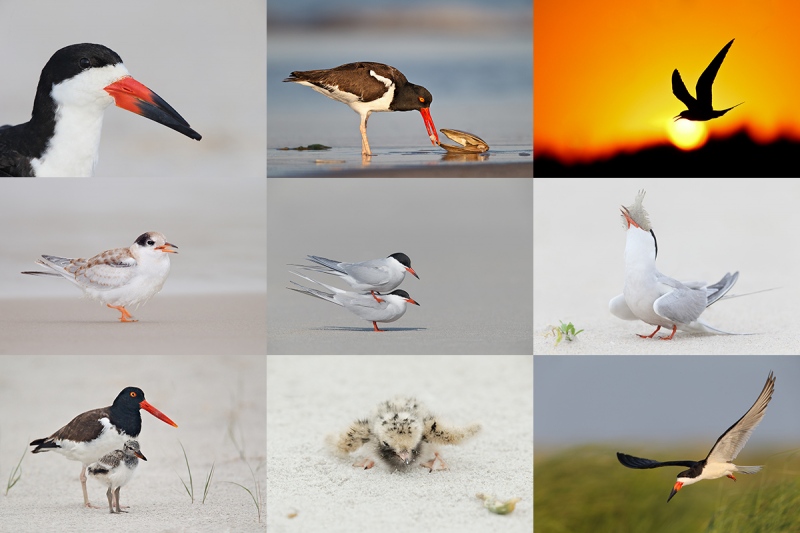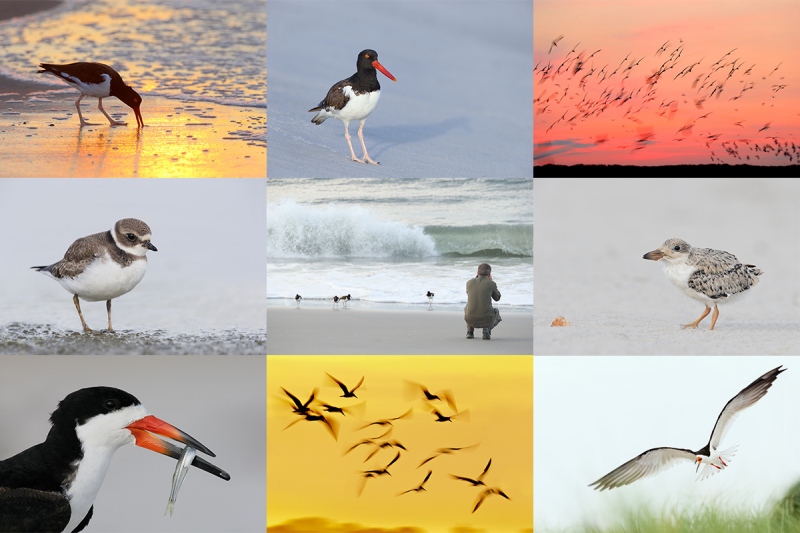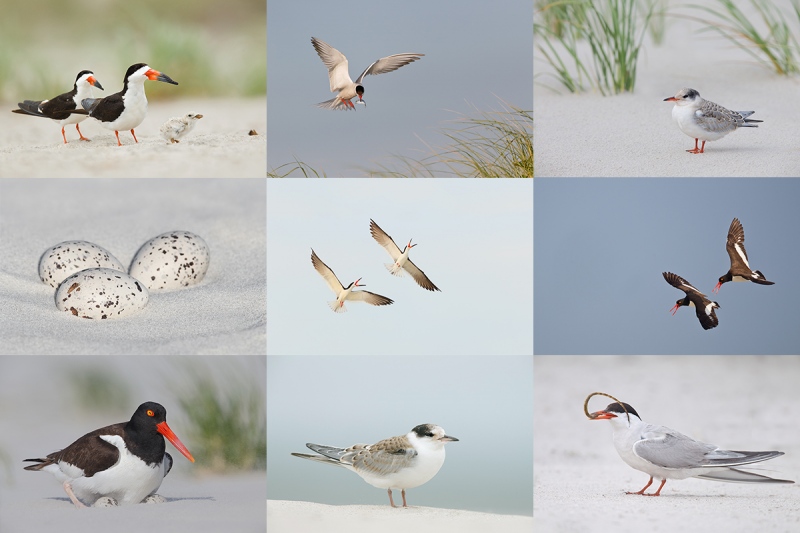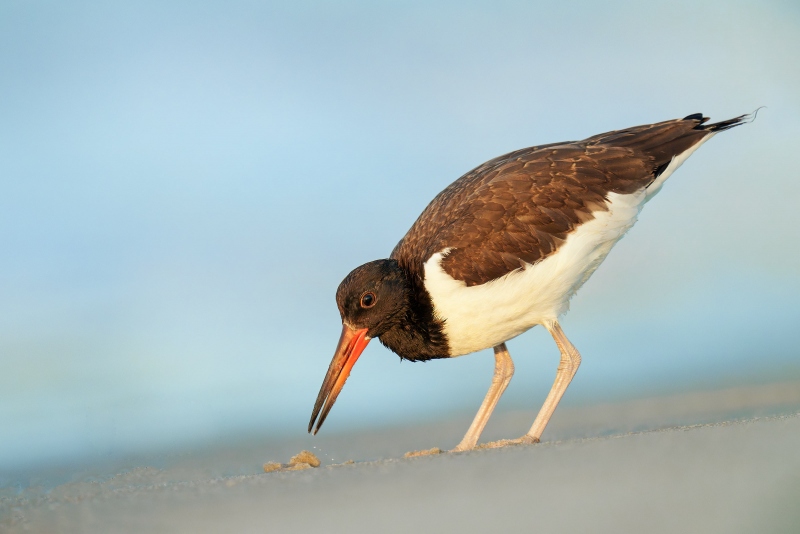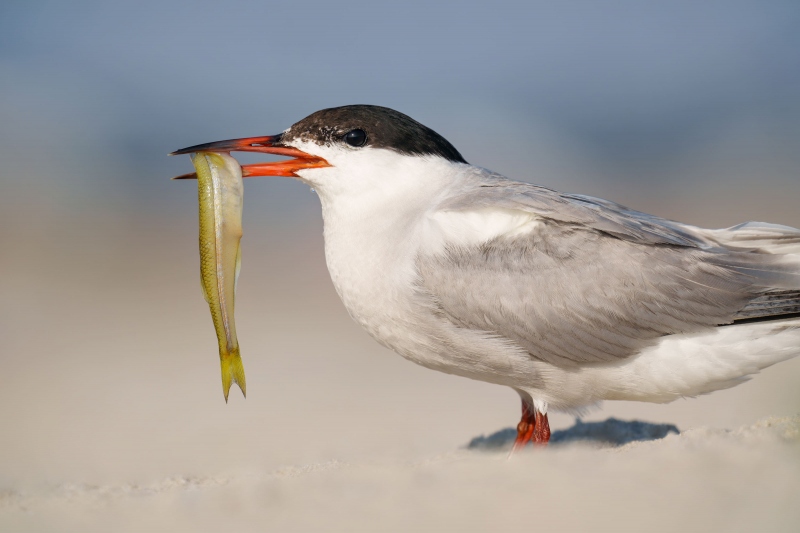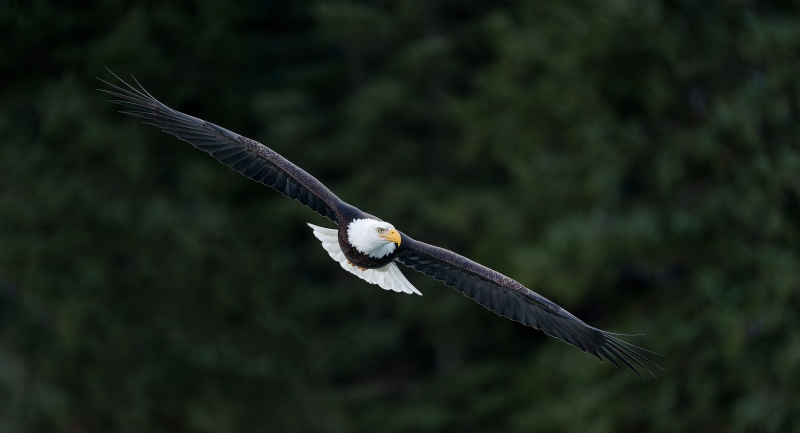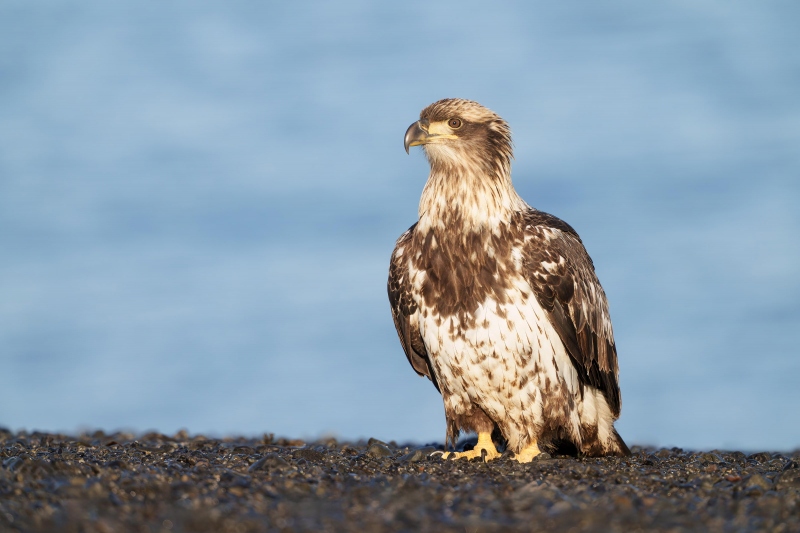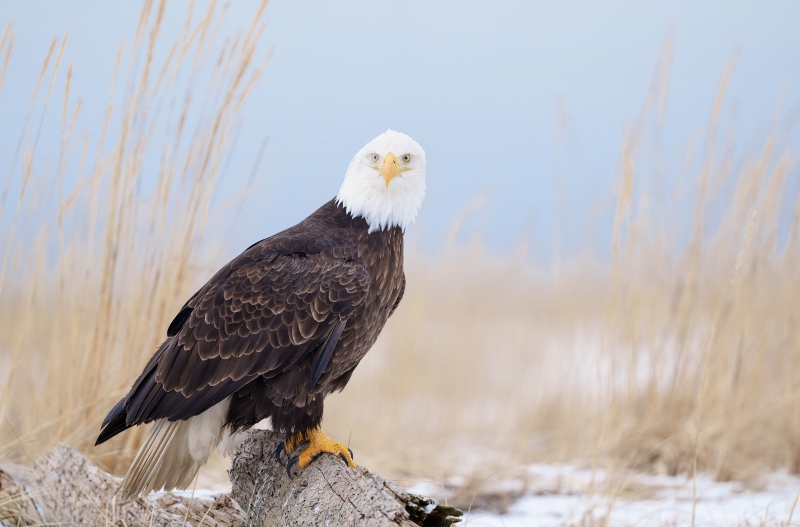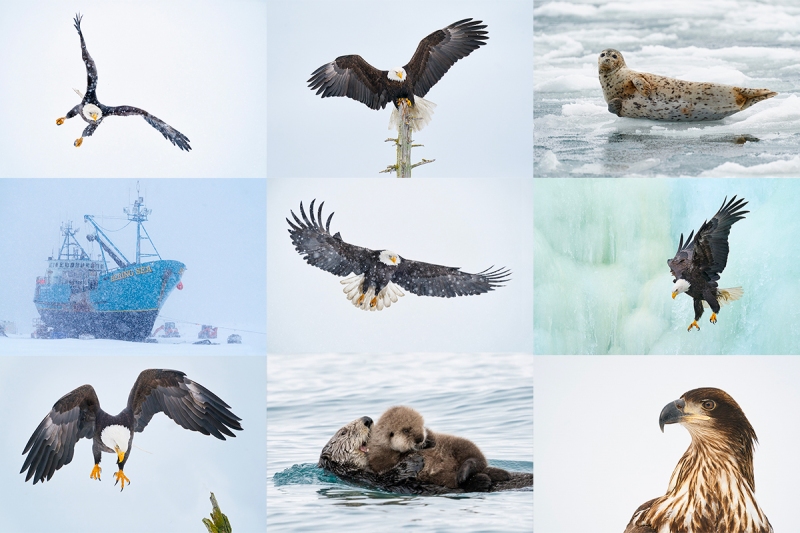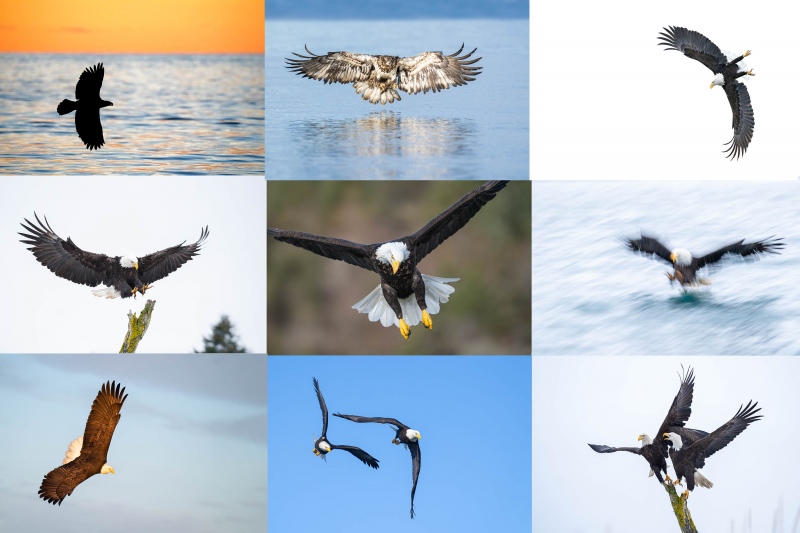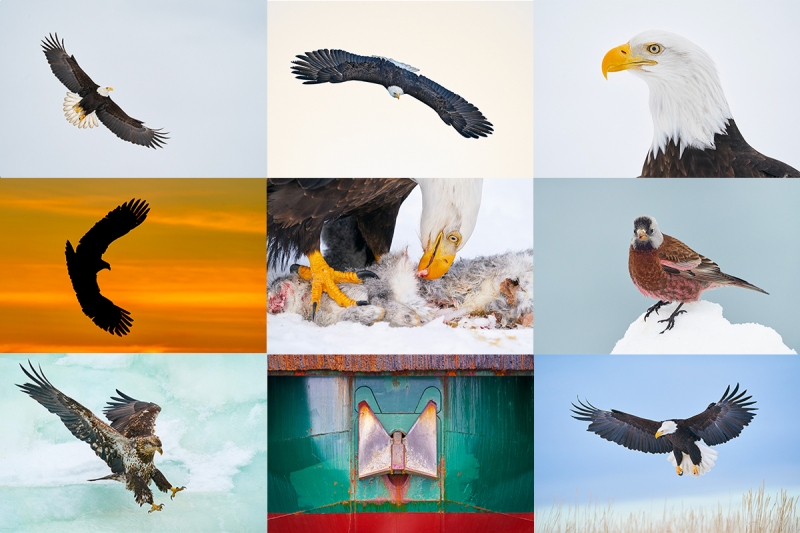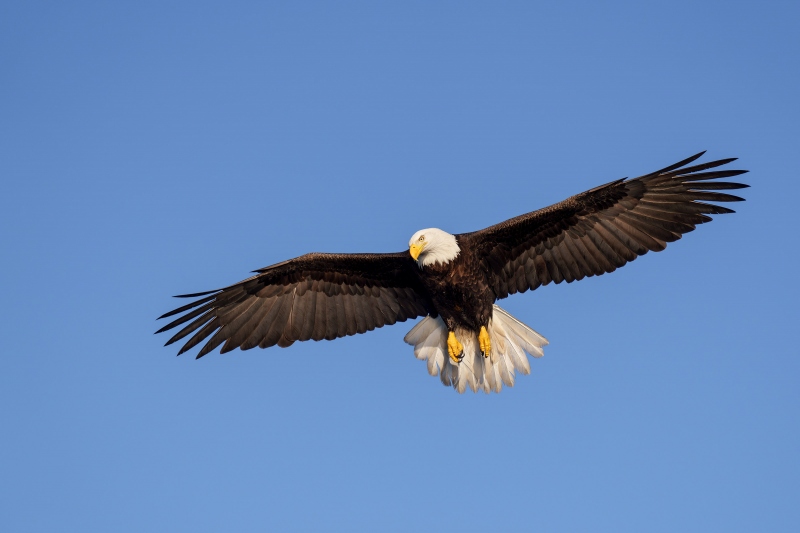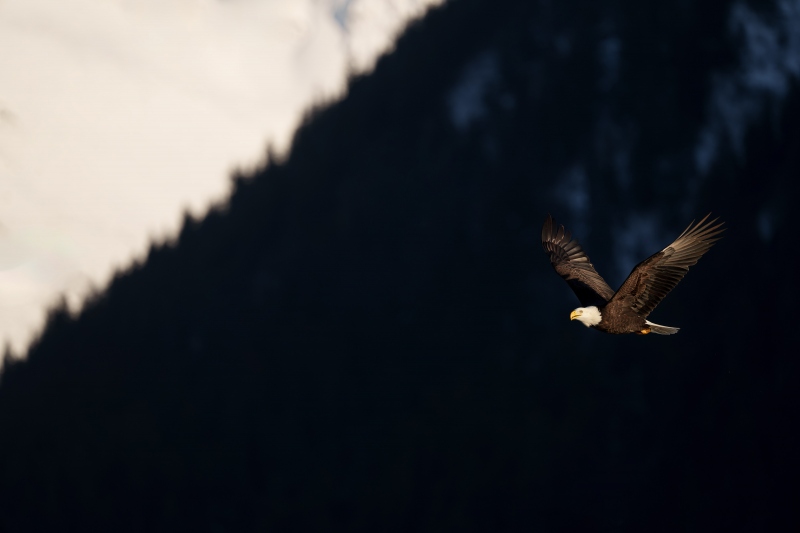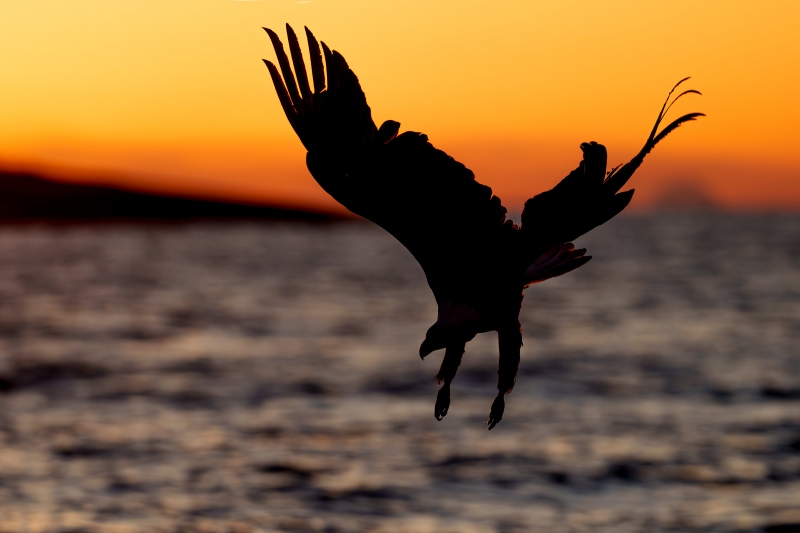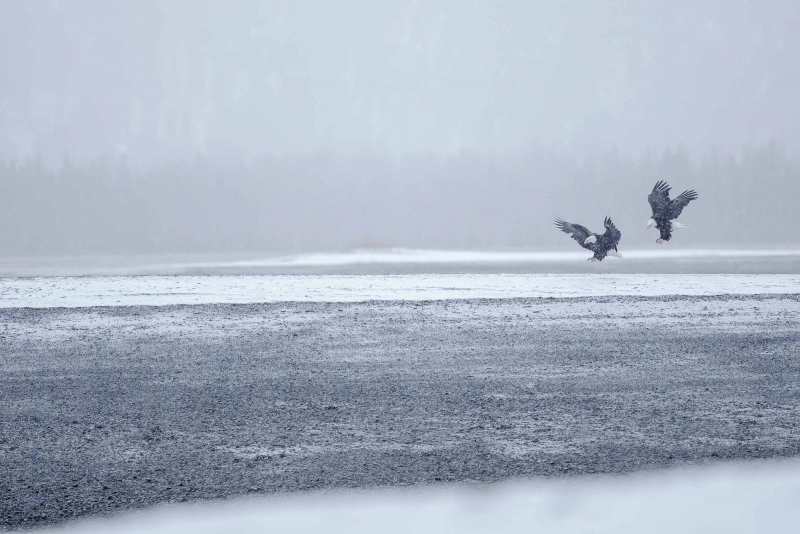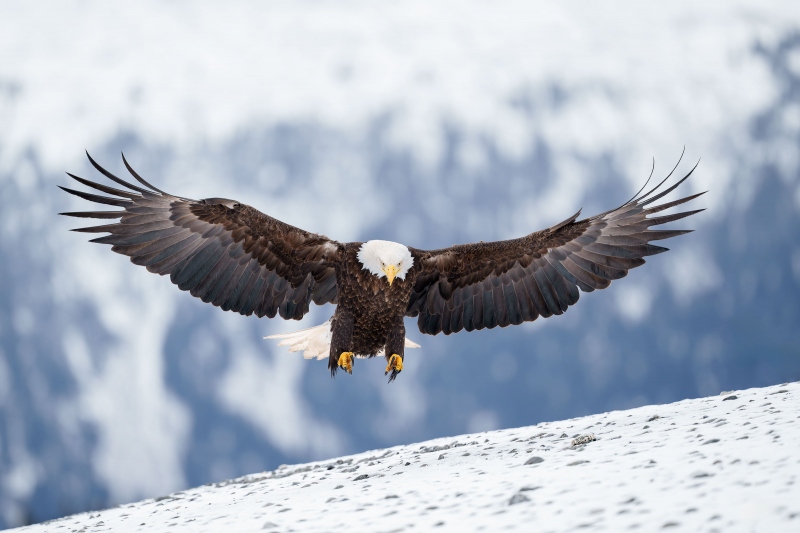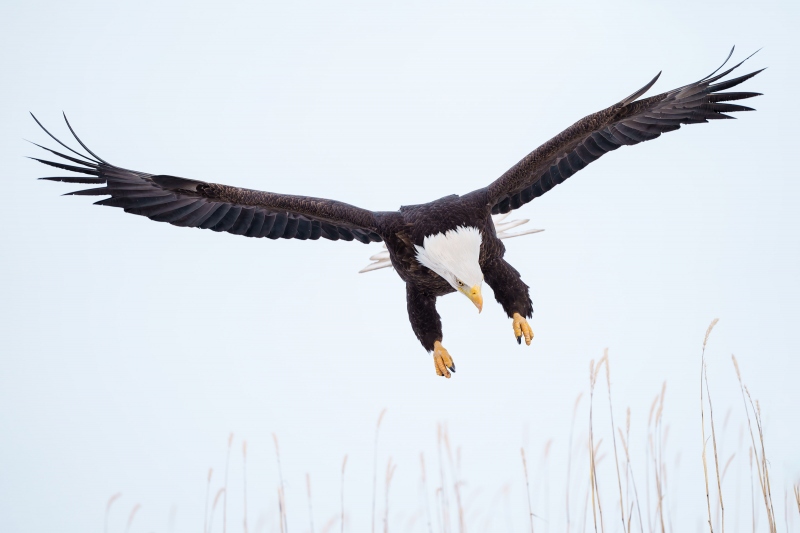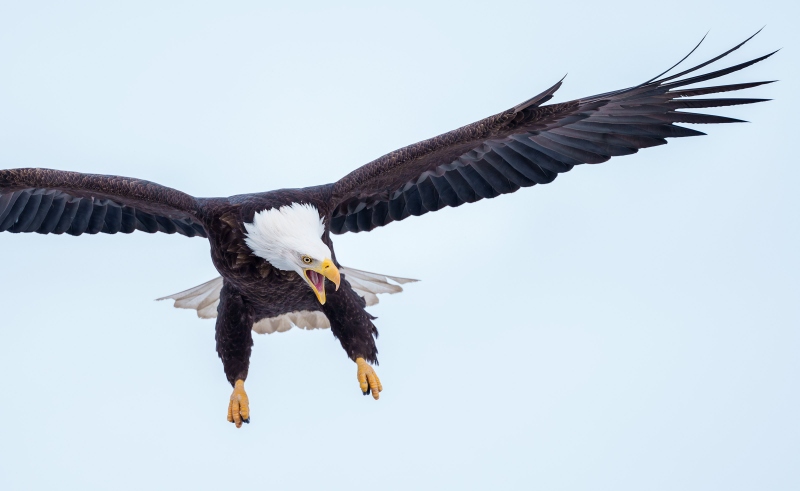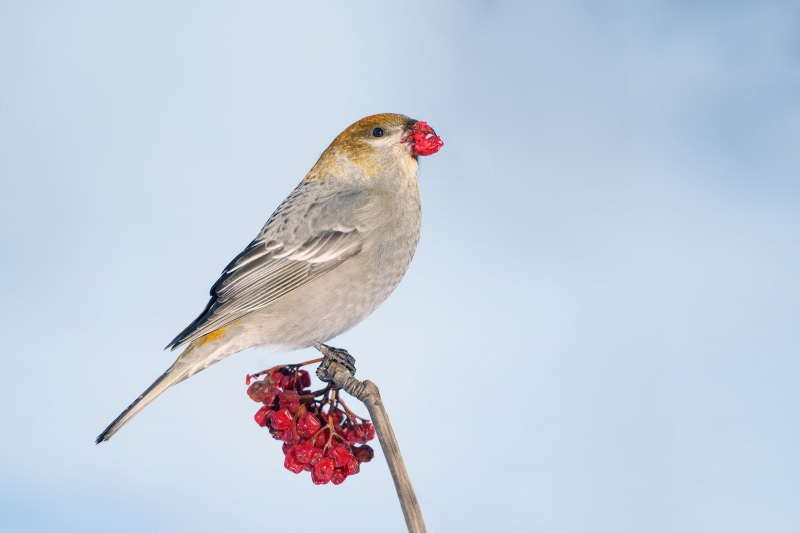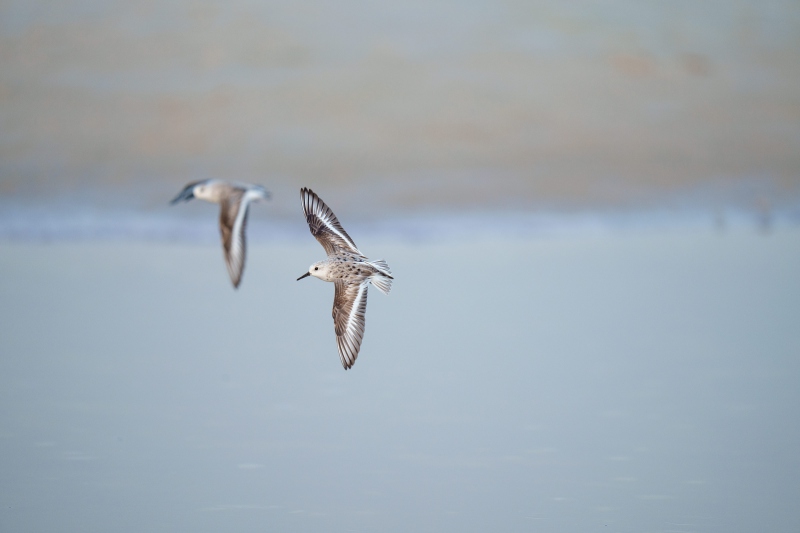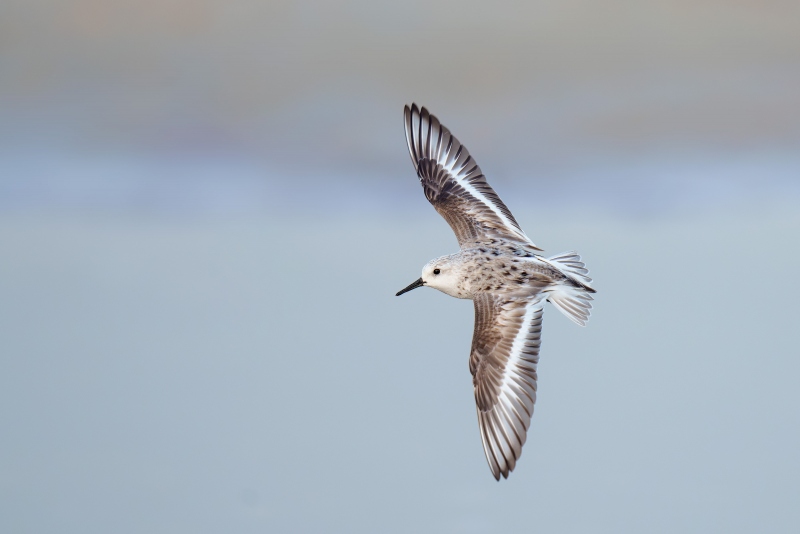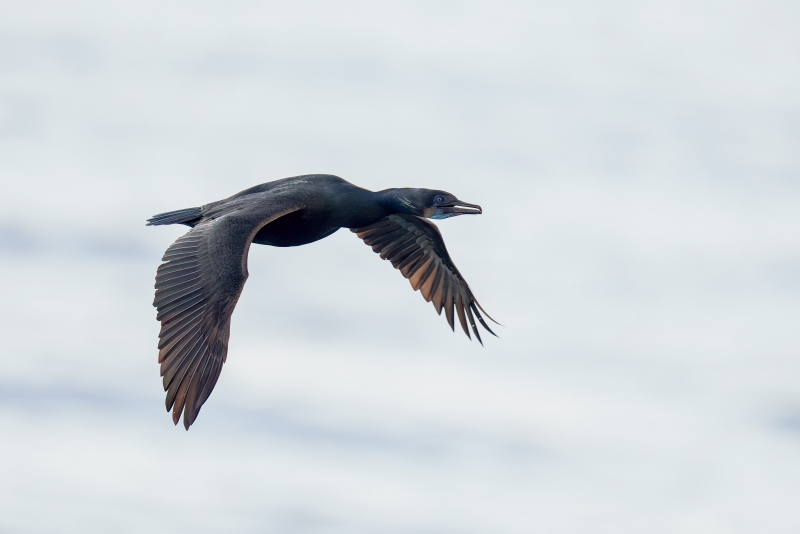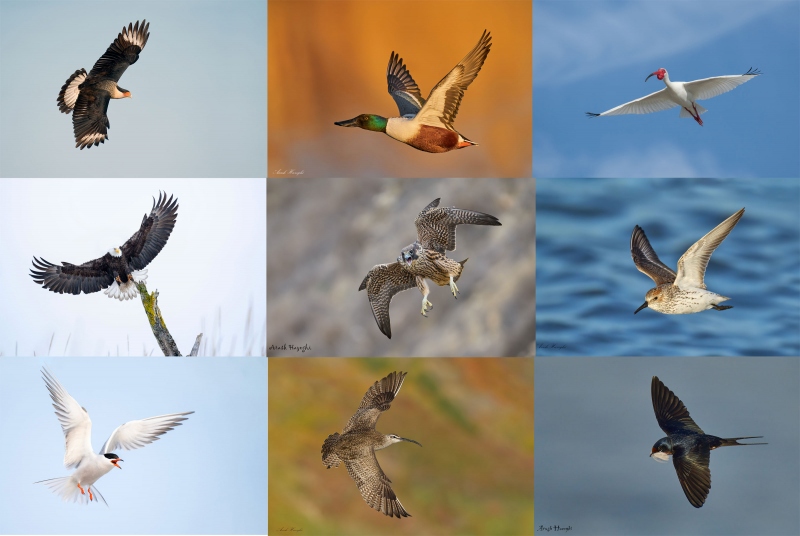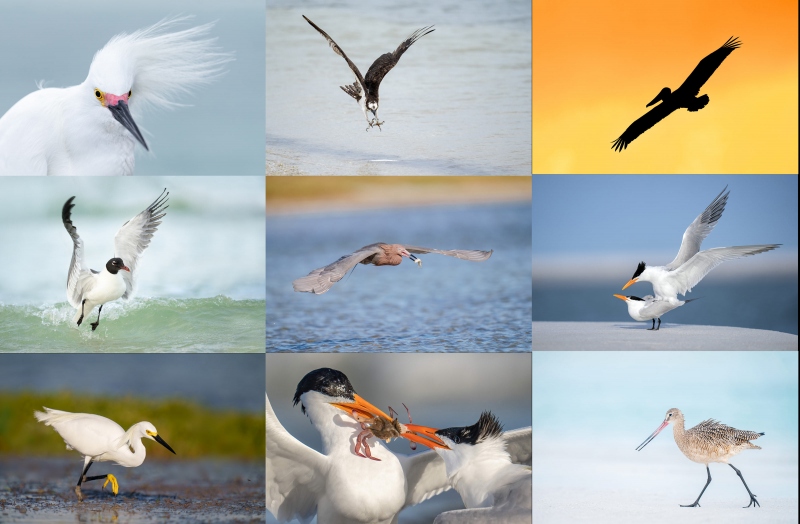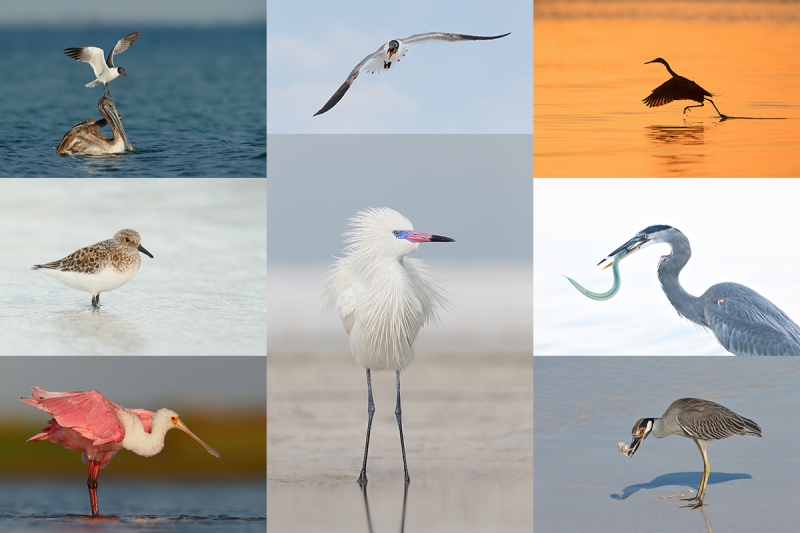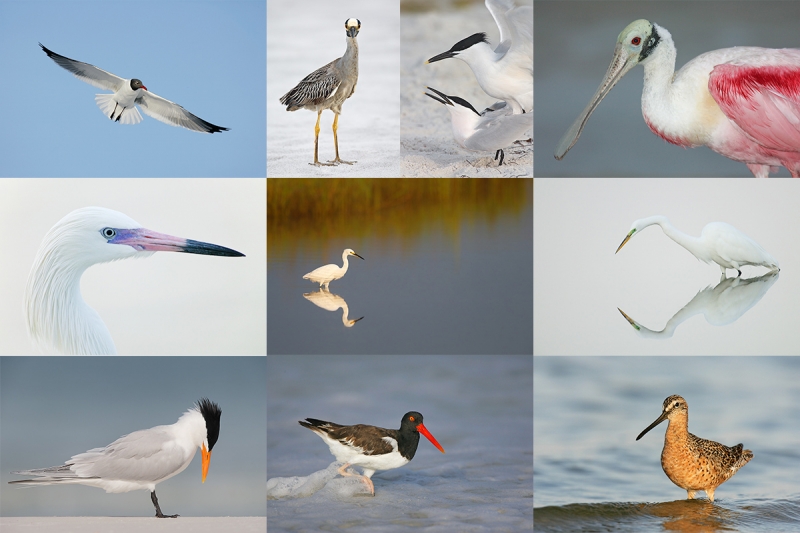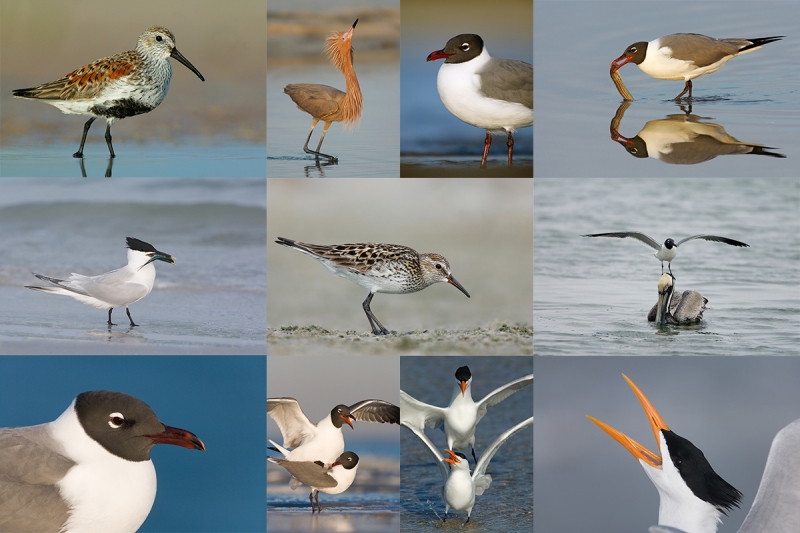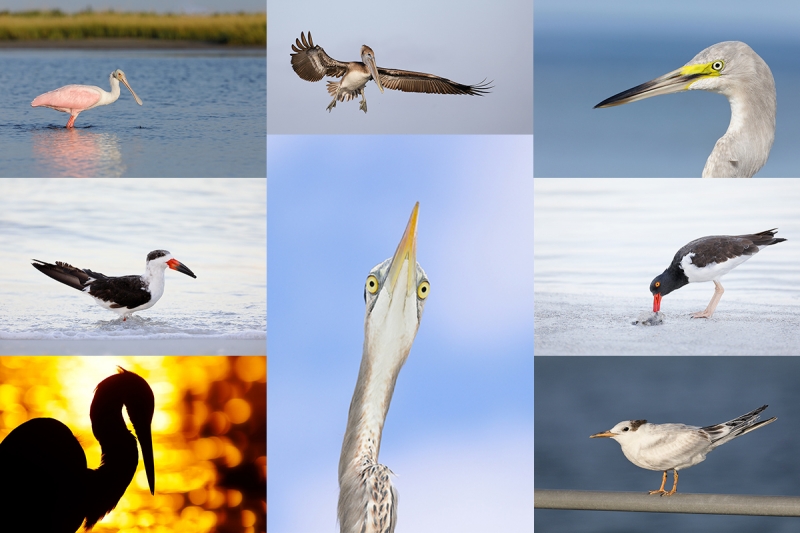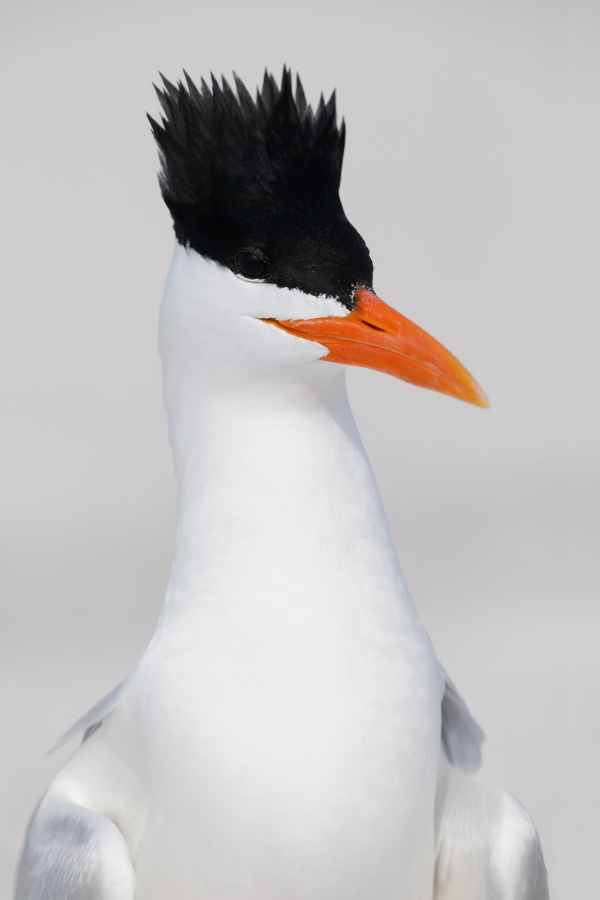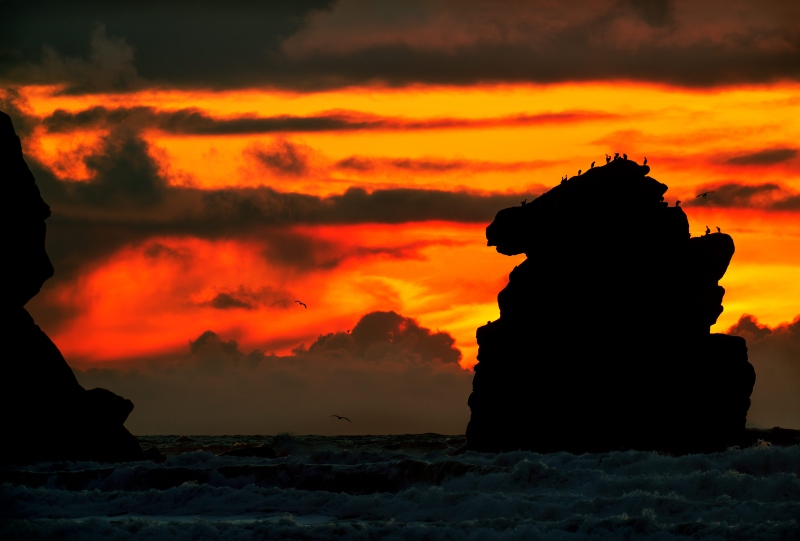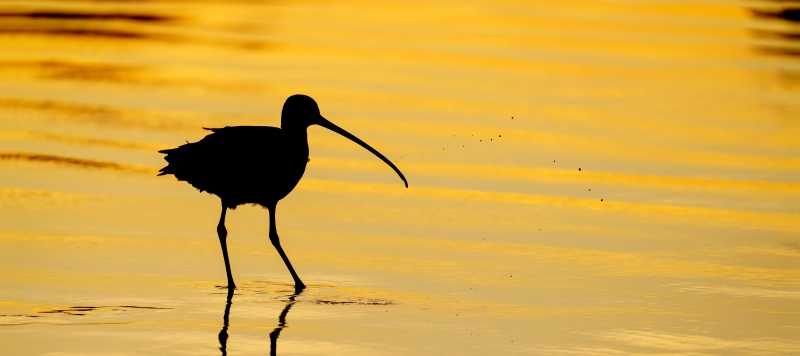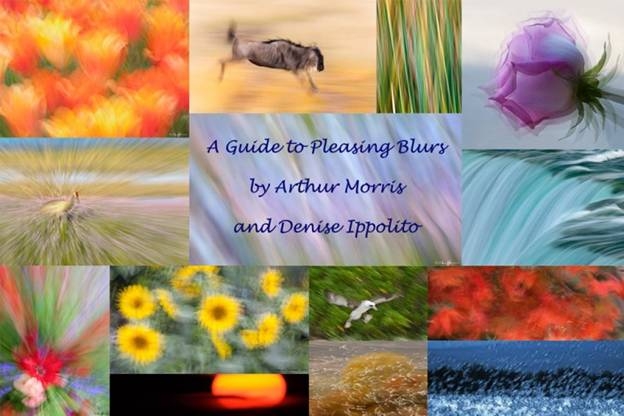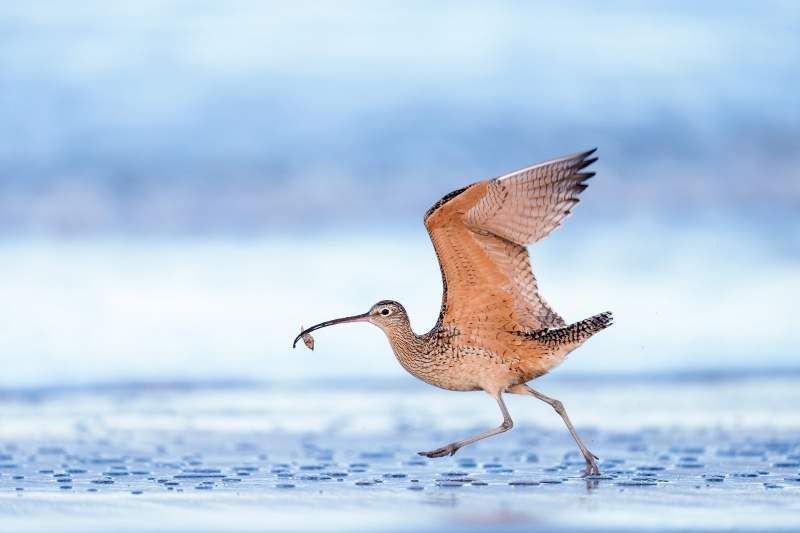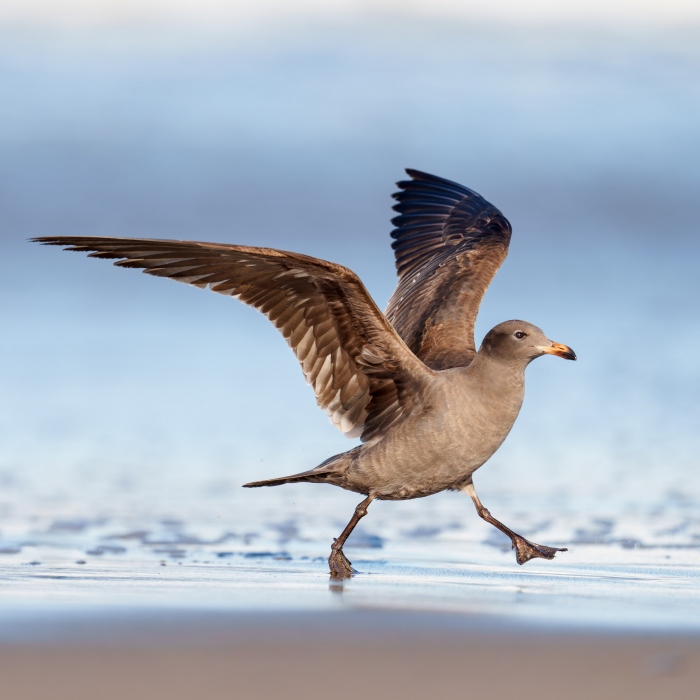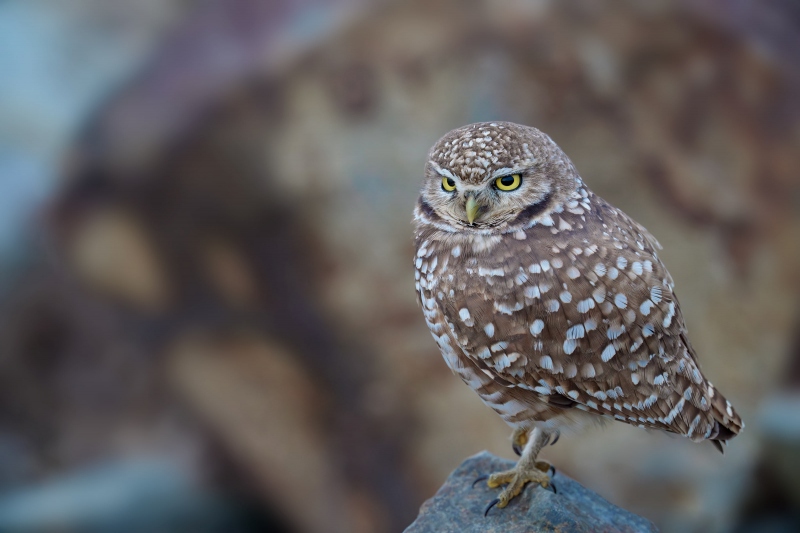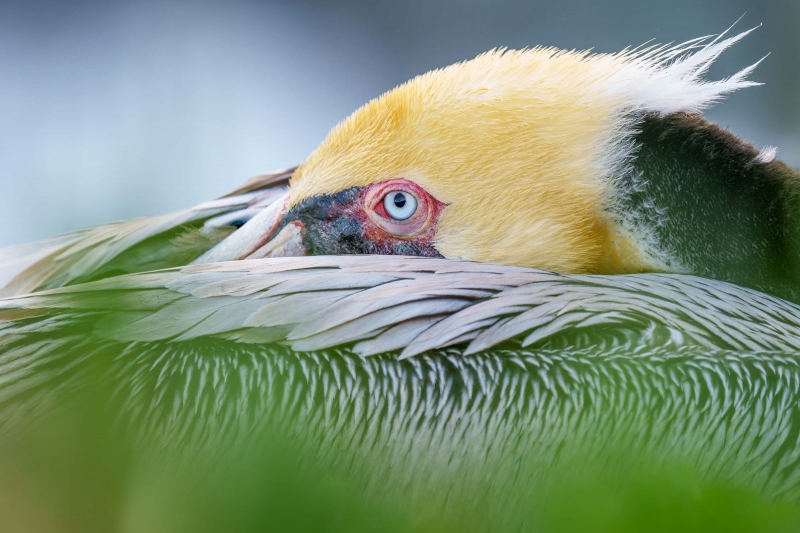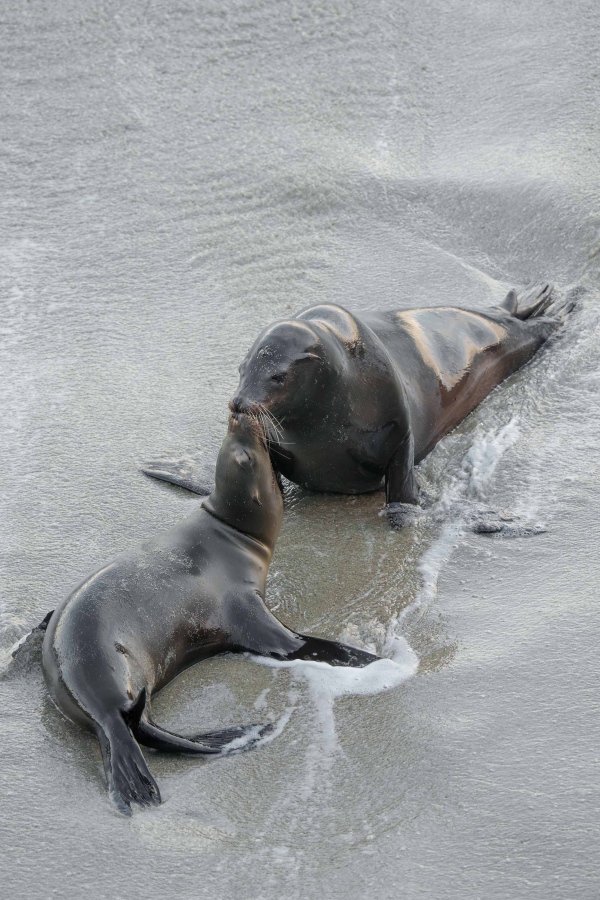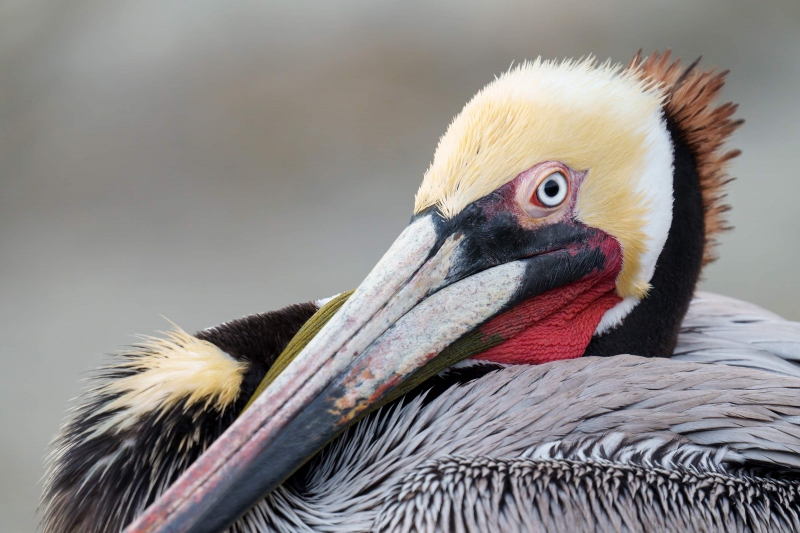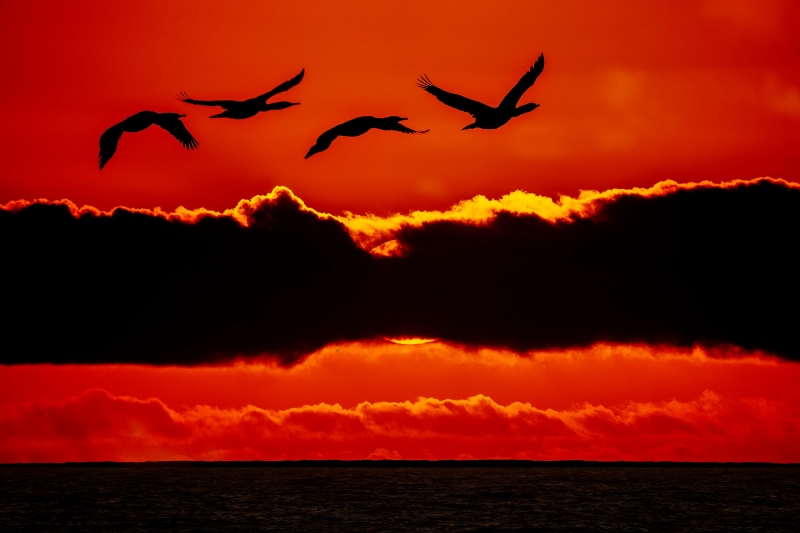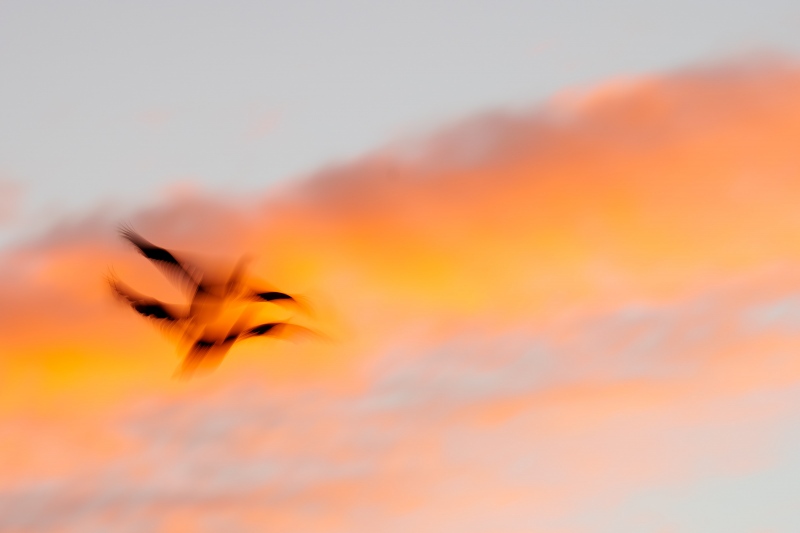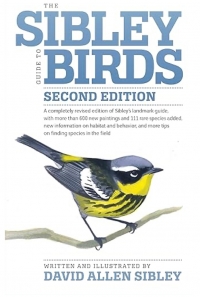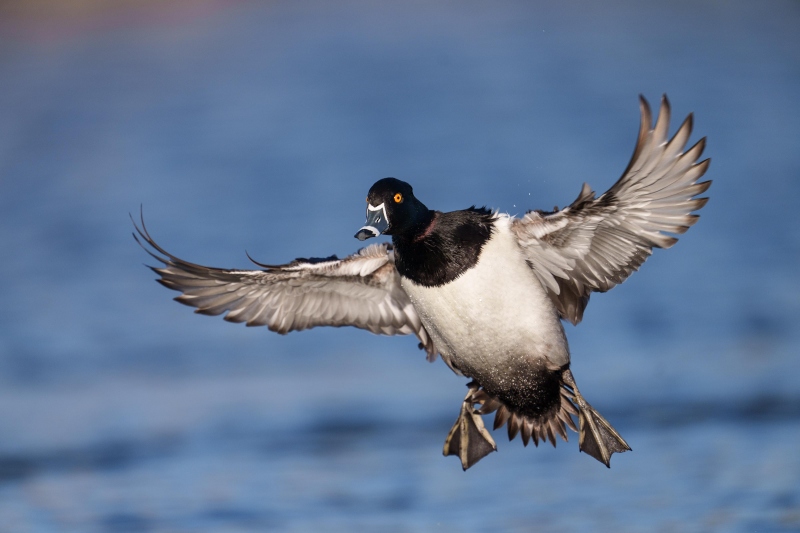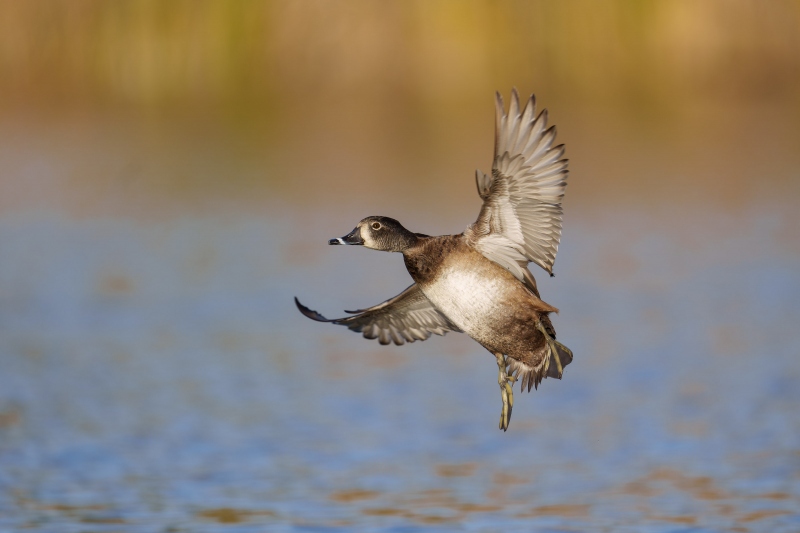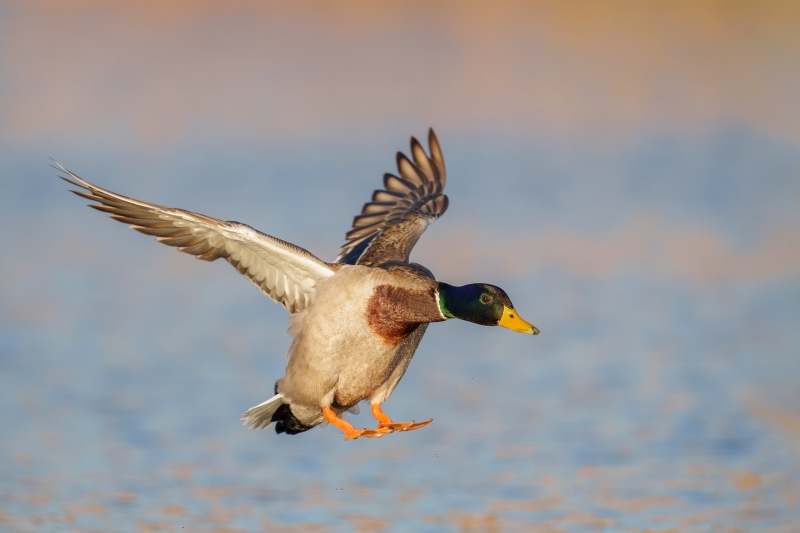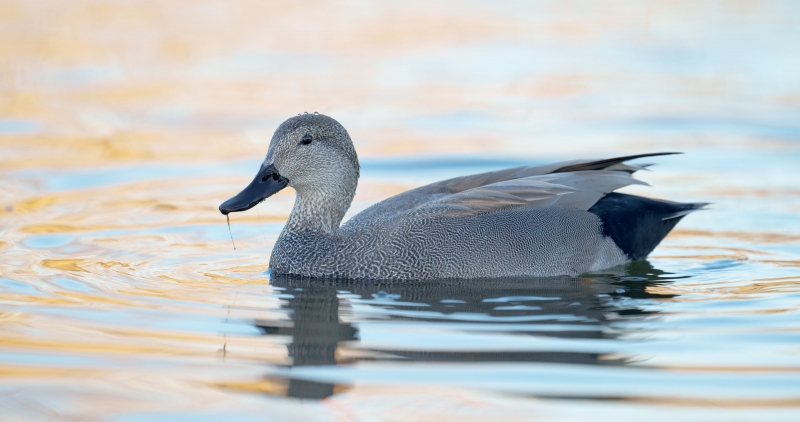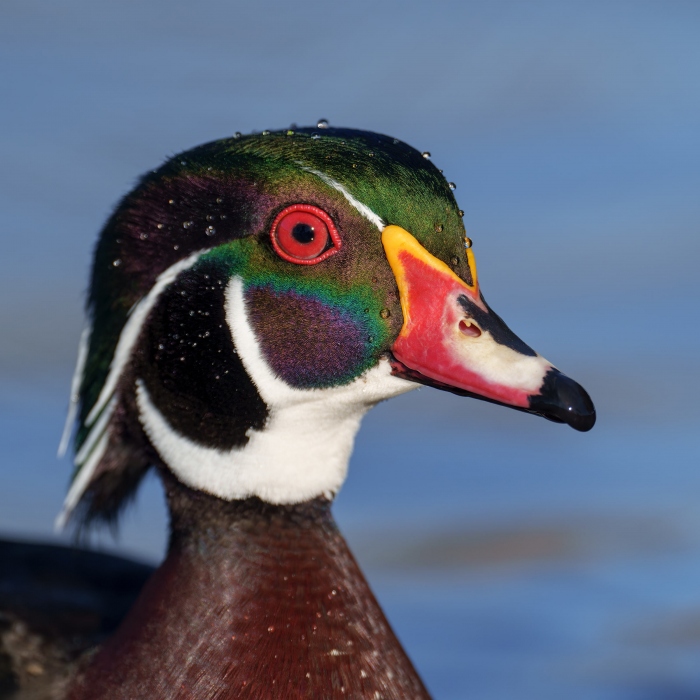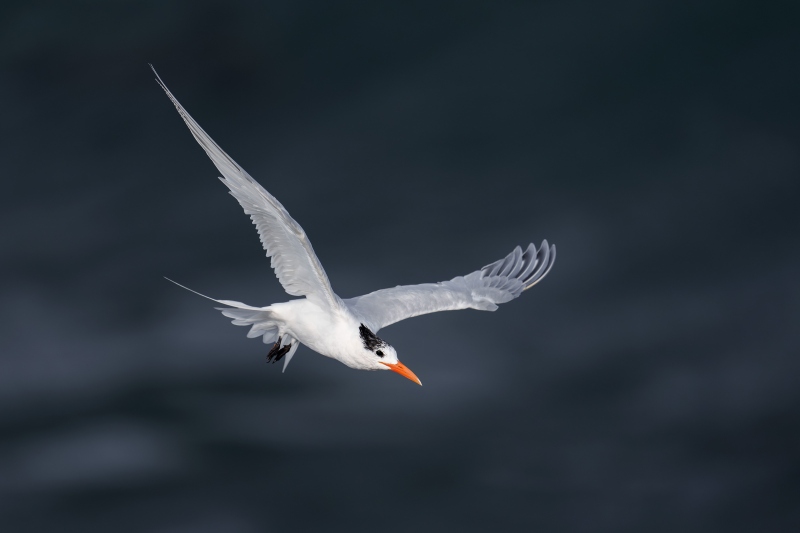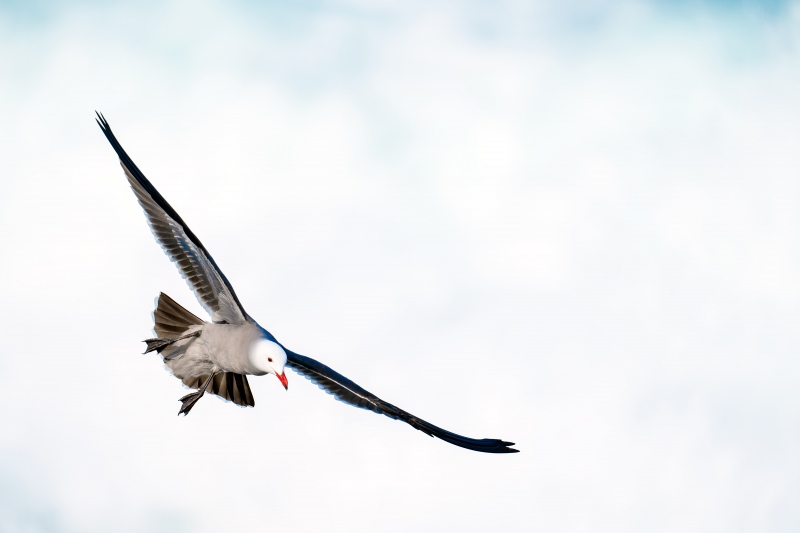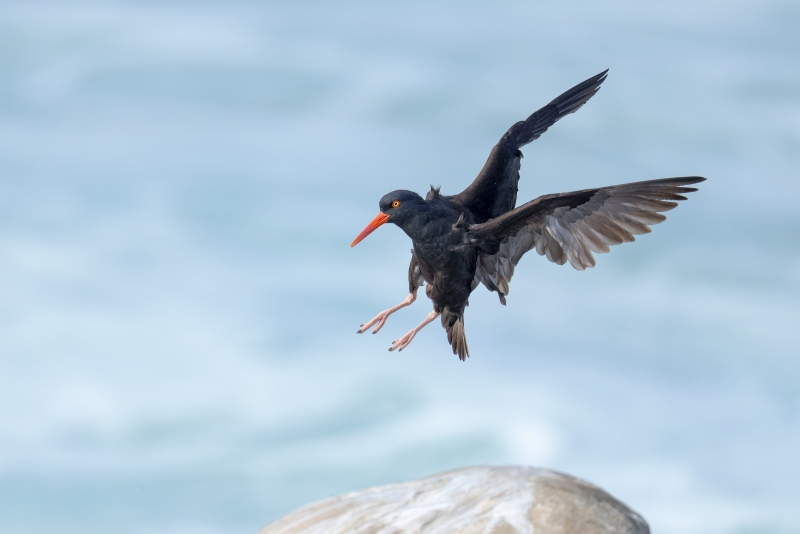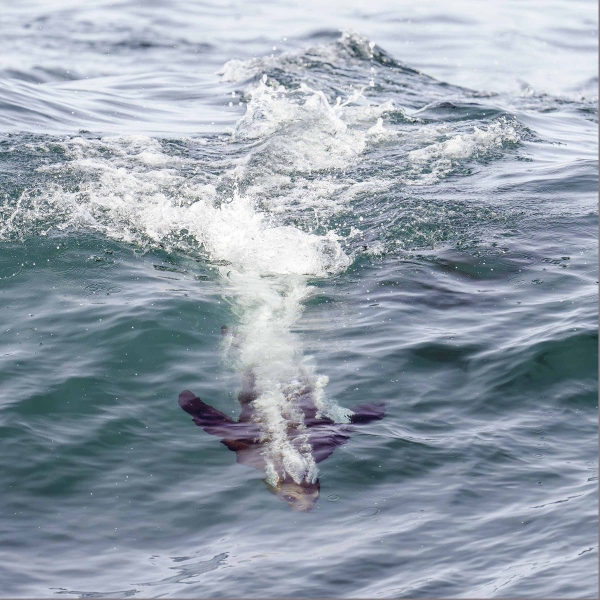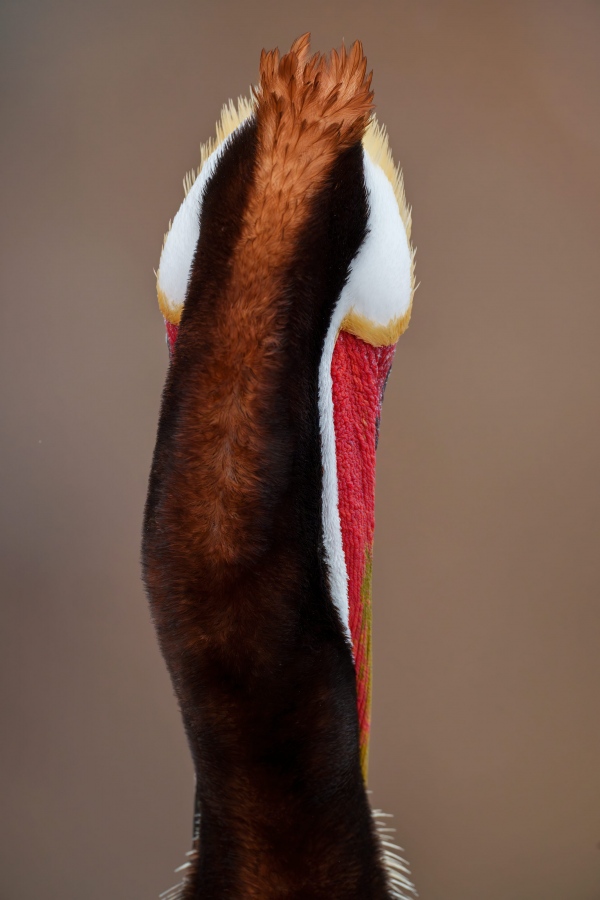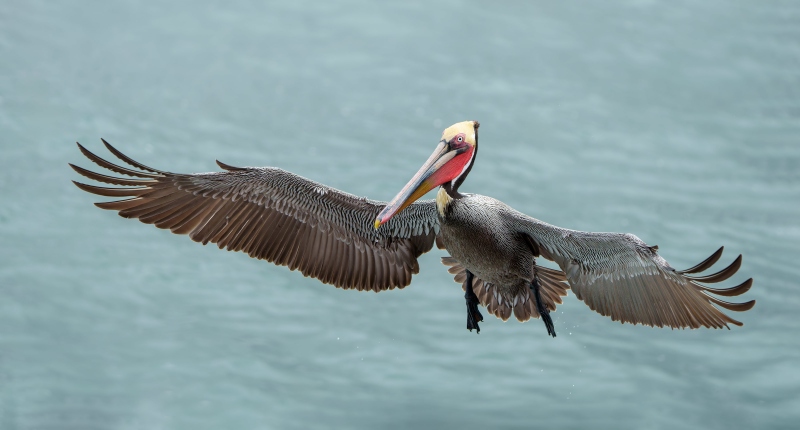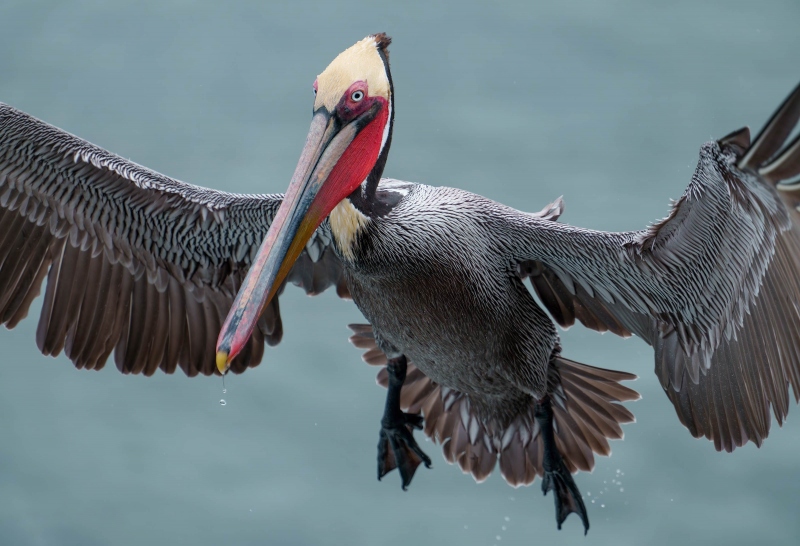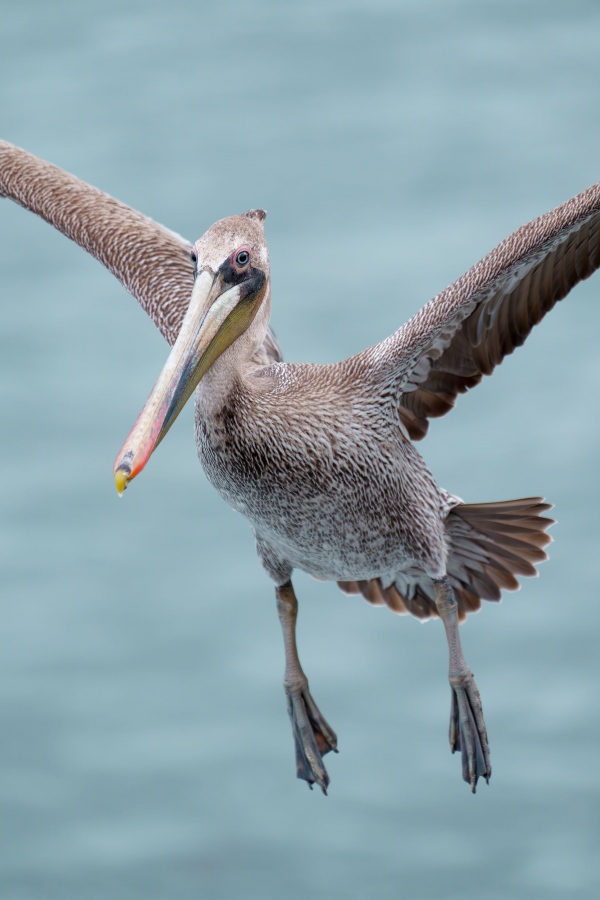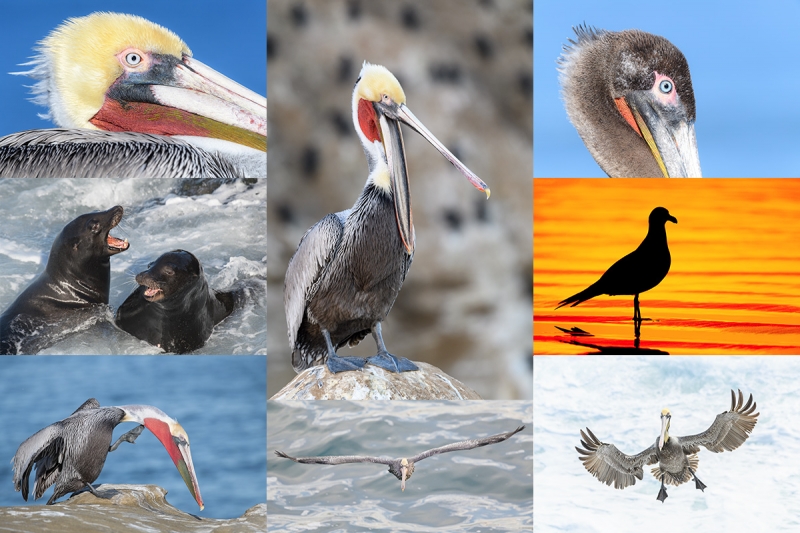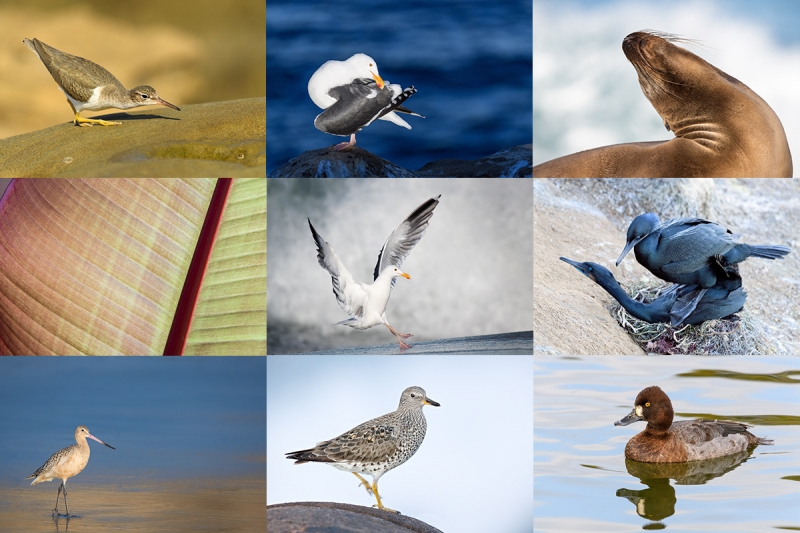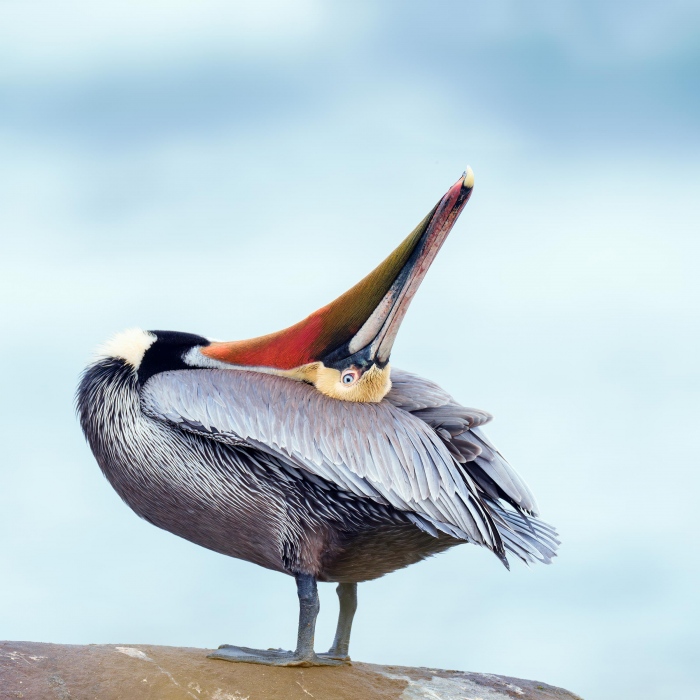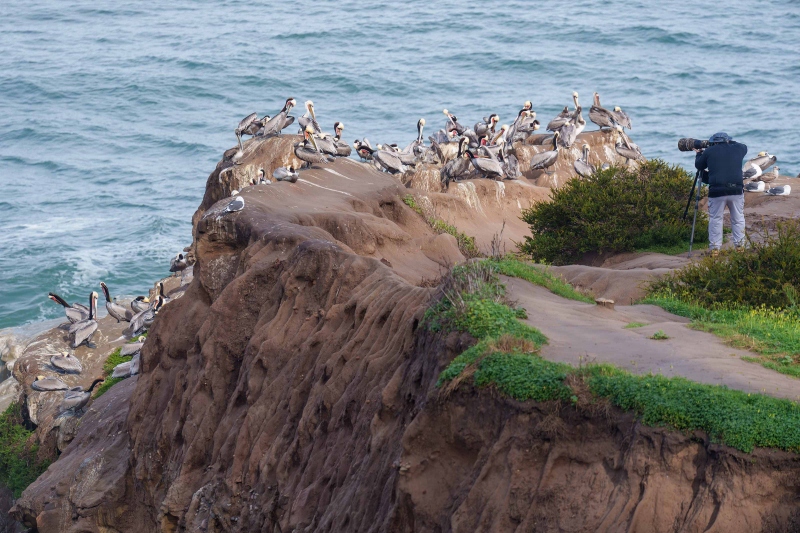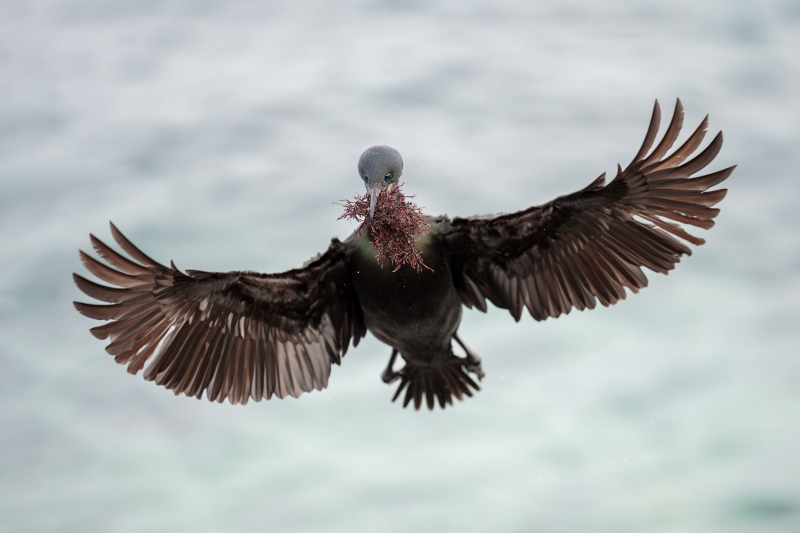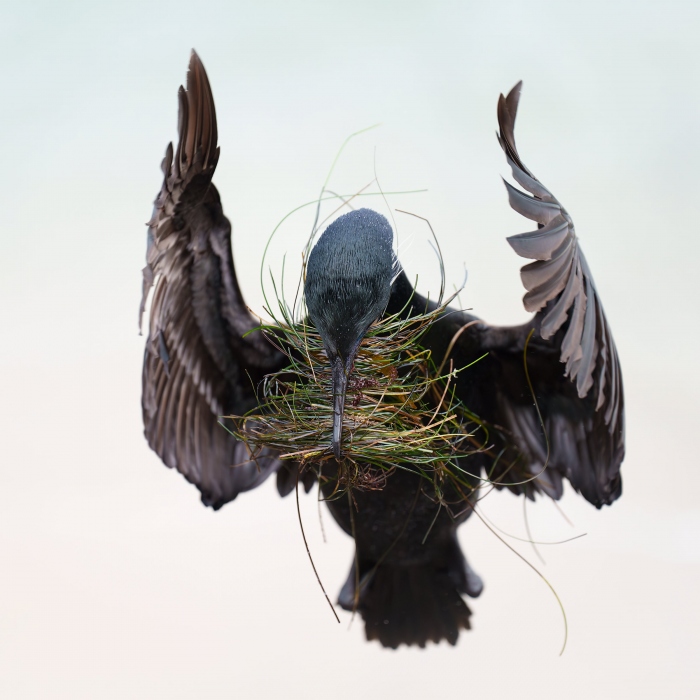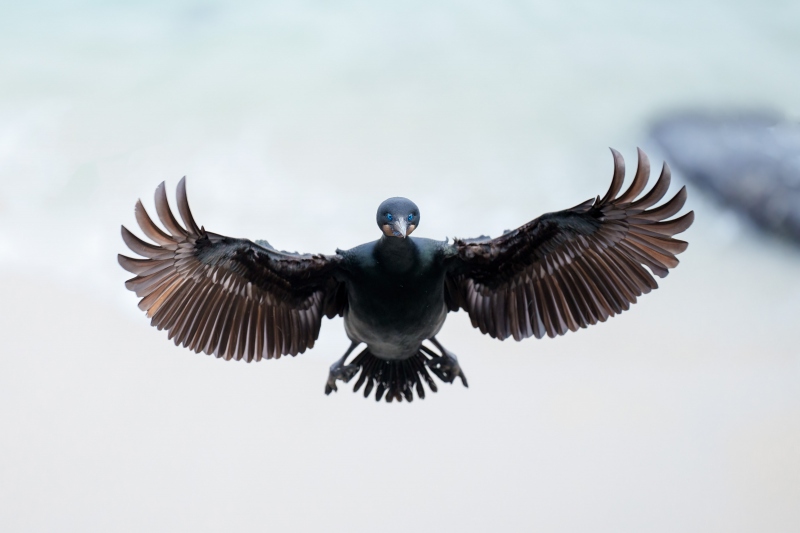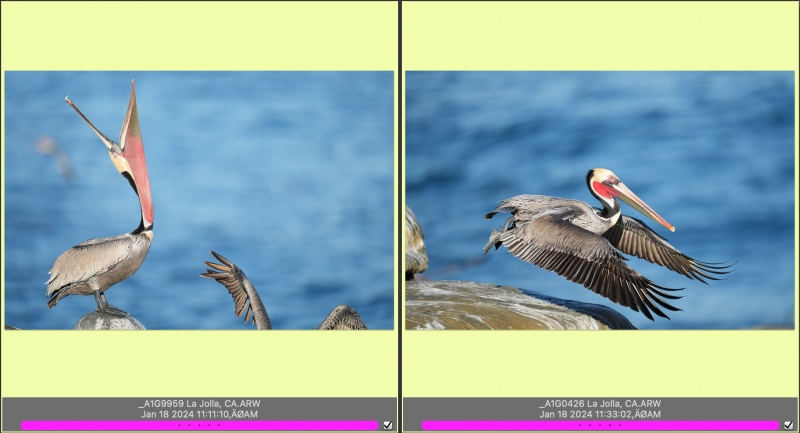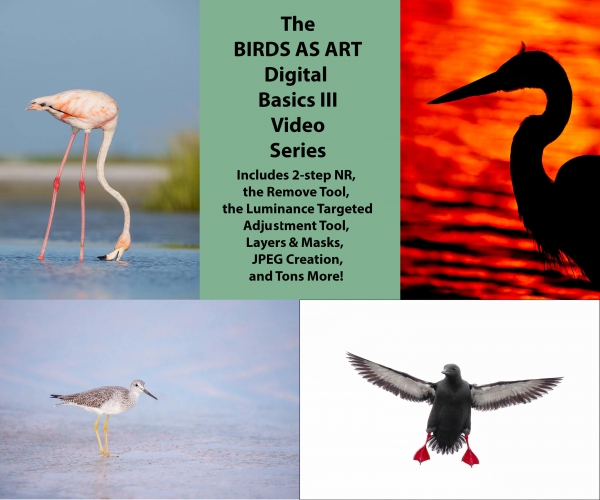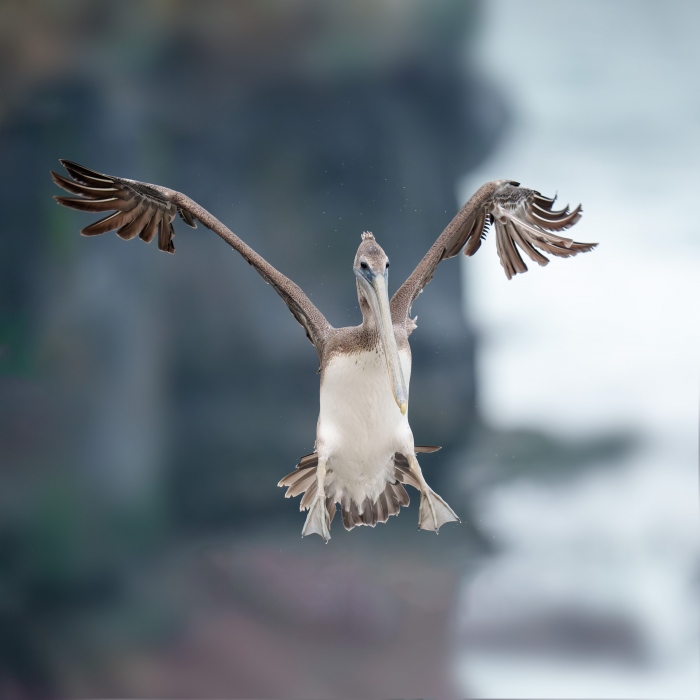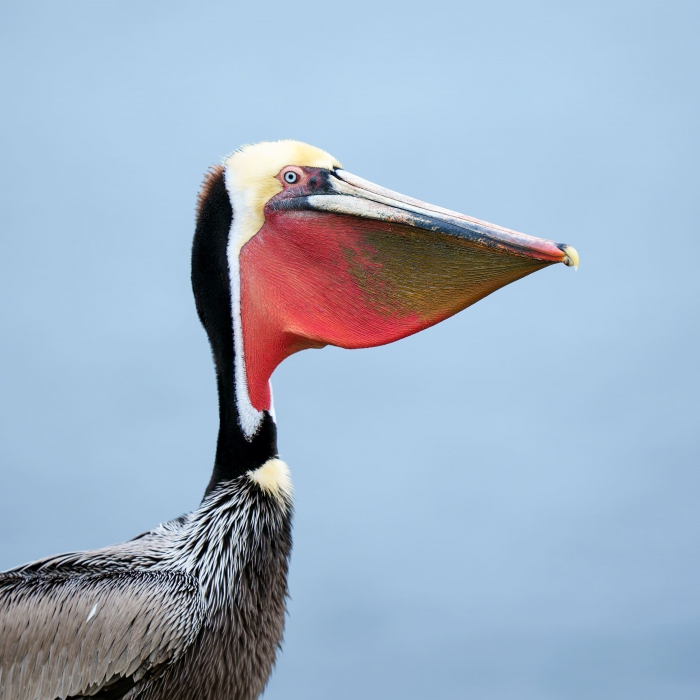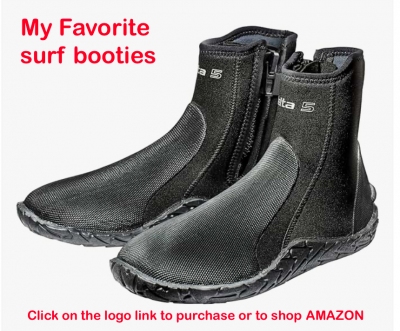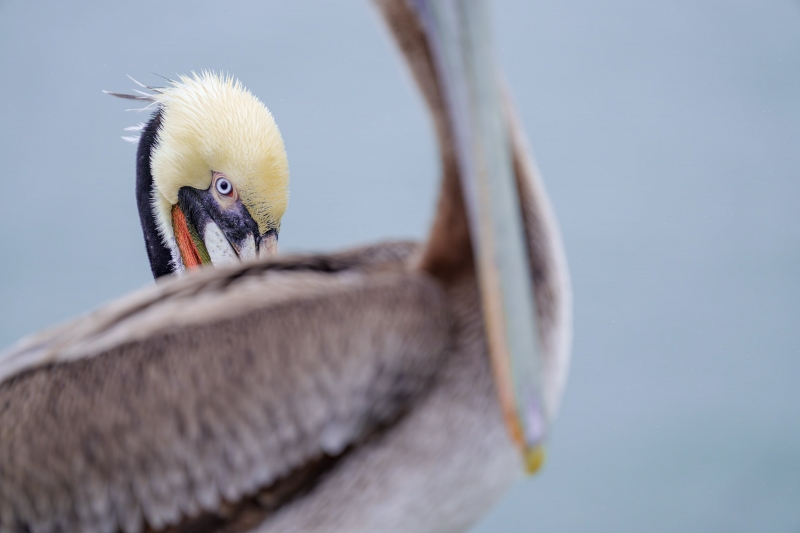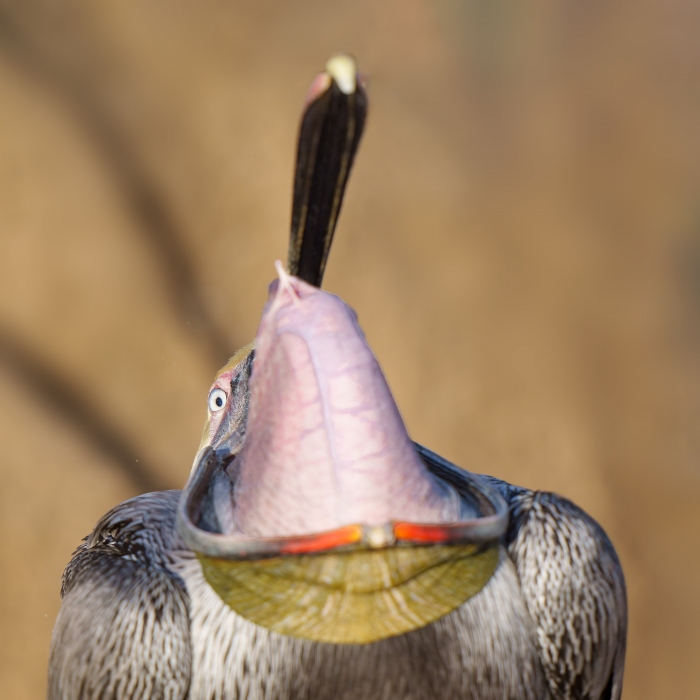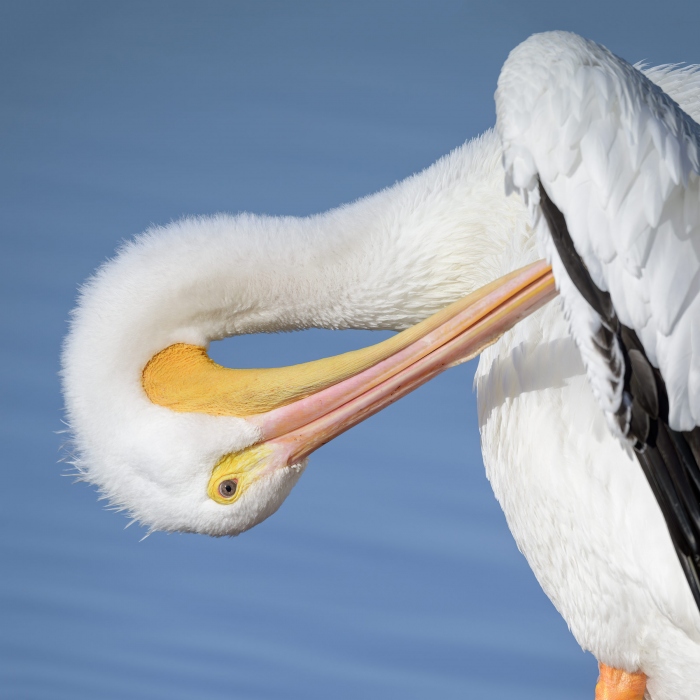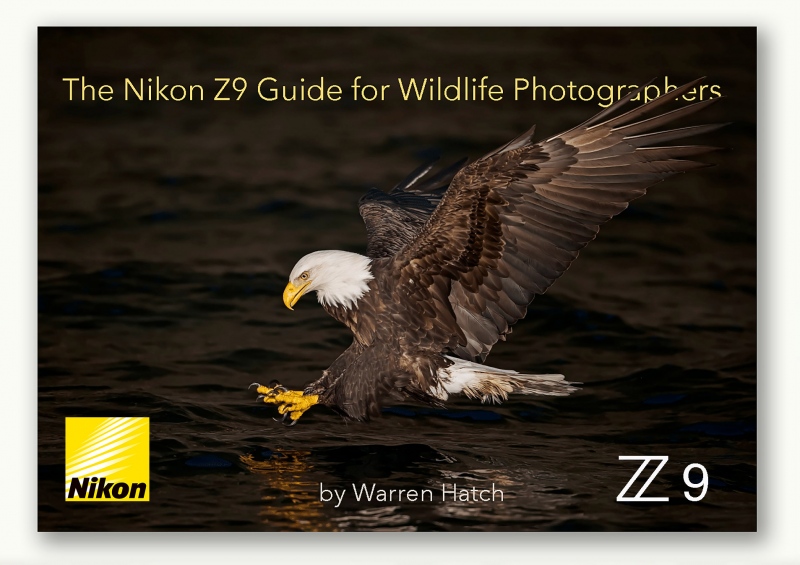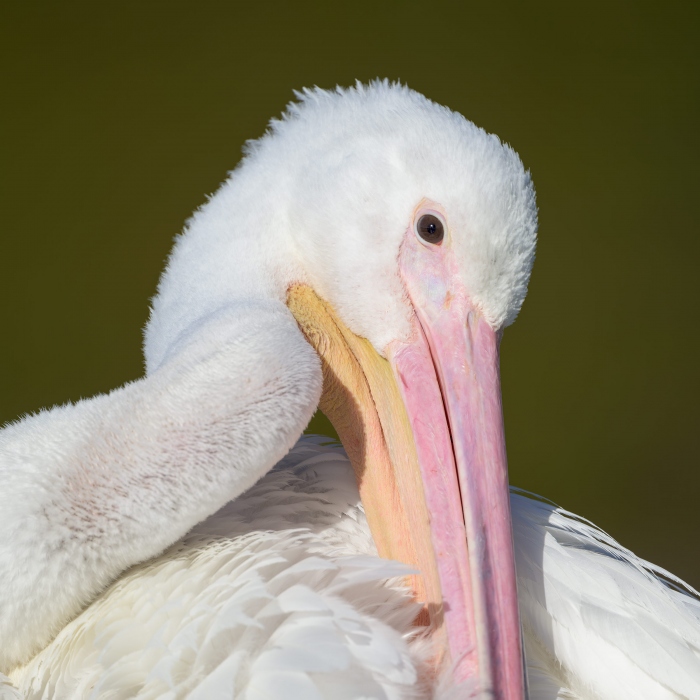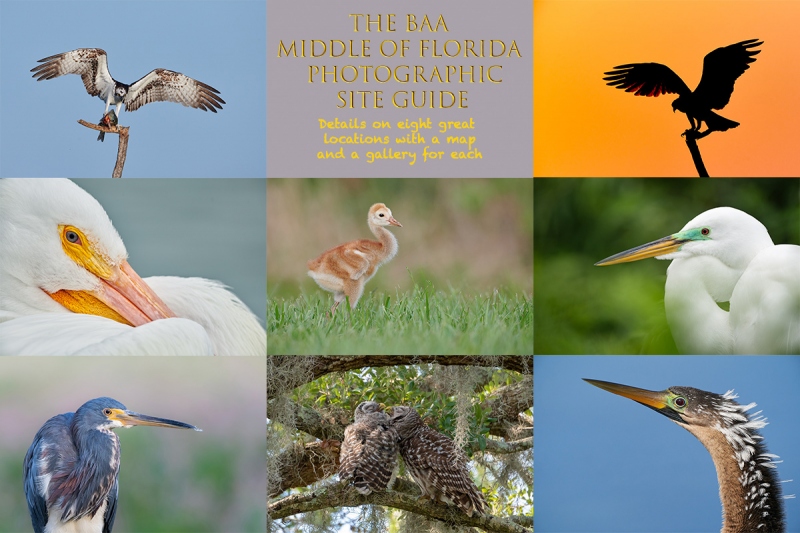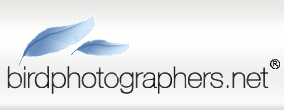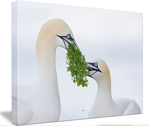March 7th, 2024 Announcing the 2024 Nickerson Beach IPT
|
|
Join me to photograph Black Skimmers, Common Terns, American Oystercatchers, and more!
|
The Summer 2024 Nickerson Beach 3 1/2 day Terns, Skimmers, & Oystercatchers IPTs
July 29 – August 1, 2024. 3 1/2 days: Afternoon session on MON 29 July through the afternoon session on THURS 8 August: $2099.00. Limit: 6. Openings: 5
August 5-8 2024. 3 1/2 days: Afternoon session on MON 5 August through the afternoon session on THURS 1 August: $2099.00. Limit: 6.
Join me at Nickerson Beach Park this summer to photograph Black Skimmers, Common Terns, and American Oystercatchers. The trip is timed so that we should get to photograph tiny chicks as well as fledglings. There will be lots of flight photography including adults flying with baitfish and mole crabs. Creating great images of the chicks being fed is a challenge but I will do my best to help you toward that end. We will get to photograph a variety of breeding behaviors including courtship, sitting on (incubating) eggs, chick feeding, and more. We may get to photograph pre-dawn and early evening blastoffs. There is generally great afternoon skimmer flight photography that includes frequent midair battles sunny days. And with luck, we might even see a few tiny chicks in addition to fledged and flying young. We will also get to photograph the life cycle of American Oystercatcher. This will likely include nests with eggs and small chicks, young being fed, and surely a few fledglings.
Nesting Piping Plover is also possibly. There will be lots of gulls to photograph; most years I am able to find a few lesser black-backeds of varying ages in addition to the Herring, Ring-billed, and Great Black-backed Gulls. You will learn to identify and age the various gull species. There will likely be some Willets feeding along the surf and with luck we might get to photograph a handsome juvenile or two. In addition to the locally breeding shorebirds, we will likely get to see some southbound migrant arctic-and sub-arctic breeding shorebird species such as Sanderling, Semipalmated Plover, and maybe even Red Knot.
|
|
Clockwise from upper left around and back to center: Black Skimmer pair with chick; Black Skimmer fledgling skimming; Black Skimmer with large needlefish; Black Skimmer large chick; Black Skimmer fledgling taking flight; Black Skimmer adult with killifish; Black Skimmer adult landing near nest; Black Skimmer in midair chase; and Black Skimmers at dawn in the red light district.
|
Afternoon sessions will run from 5:30 till sunset (assuming that entry policies are as they were in 2023. Morning sessions will run from pre-dawn till about 9:00 or 9:30am, roughly 3 1/2 hours.
Many folks head home feeling that while our time in the field was fabulous and productive, that the working brunch sessions were even more valuable. During image review you will learn to select the best images from several thousand made with your 20- and 30 fps (or 120 fps!) camera bodies. And we will process a few images and distribute the screen capture videos for you to learn from after the trip. And all IPTs offer follow-up image critiques.
Change your life: sign up for this IPT today. Please shoot me an e-mail if you would like to explore the possibility of renting some Sony gear (including an a1) from me.
|
|
Clockwise from upper left around and back to center: Adult American Oystercatcher foraging at sunrise; Adult American Oystercatcher posing on clean sand; predawn skimmer flock blur; Black Skimmer large chick; Black Skimmer landing at nest on cloudy day; Black Skimmer large chick; Black Skimmer sunrise group blur; Black Skimmer adult with Atlantic Silversides; juvenile Semipalmated Plover, and photographer with oystercatcher family.
|
Some of What You Will Learn on a Nickerson Beach IPT
- 1- The basics and fine points of digital exposure; how to get the right exposure every time after making a single test exposure (or before if you are using SONY gear).
- 2- How and why to work in Manual mode (even if you’re scared of it).
- 3- How to approach free and wild birds without disturbing them.
- 4- Lots about bird behavior and how to use that knowledge to help you create better images.
- 6- To spot the good and great situations and to choose the best perspective.
- 7- To see, evaluate, and understand the light.
- 8- To design pleasing images by mastering your camera’s AF system.
- 9- And perhaps most importantly, to evaluate wind and sky conditions and understand how they affect bird photography. You will learn where and when to be (and why).
- 10- More than you could ever imagine.
|
|
Clockwise from upper left around and back to center: Black Skimmer pair with chick; Common Tern landing at nest with small baitfish; large Common Tern chick on pristine beach; American Oystercatchers courtship flight; Common Tern with pipefish; Common Tern fledgling; American Oystercatcher on eggs in high wind; American Oystercatcher nest with three eggs; and Black Skimmer midair battle.
|
The Details
We will be on the beach very early to enjoy sunrise. The morning sessions will run about 3 1/2 hours. Afternoon sessions will begin at 5:30 and run till sunset. There is never a set schedule on an IPT — we adapt to the conditions. On cloudy mornings with the right wind, we may opt to photograph till 11:30am or so and skip the afternoon session. That especially when the afternoon weather is looking iffy.
There will be a Photoshop/Image Review session before and after brunch (included) each full day. That will be followed by Instructor Nap Time. Each of these IPTs will run with only a single registrant as I do not like disappointing anyone. The best airports are JFK or Islip (if you have lots of Southwest points). Once you register, you will receive an e-mail with lodging information. Do know that it is always best if IPT folks stay in the same general area (rather than at home or at a friend’s place a good distance away).
Folks attending this IPT will be out in the field ridiculously early and stay out late to take advantage of sunrise and sunset colors; this is pretty much a staple on almost all BIRDS AS ART Instructional Photo-Tours. Doing so will often present unique photographic opportunities, opportunities that will be missed by those who need their beauty rest and those who need to get home for a proper dinner. I really love it when I am leaving the beach at 9:00am on a sunny morning after a great session just as a carful or two of well-rested photographers are arriving … We may be getting our feet wet on occasion, especially in the mornings, but those who wish to keep their feet 100% dry can do so.
Your $699 deposit is due now. Credit cards are OK for that. You can register by calling Jim or Jennifer during weekday business hours at 863-692-0906 with a credit card in hand. Once you leave a deposit, you will receive an e-mail with your balance statement and instructions for sending your balance check. Those who wish to pay for the trip in one fell swoop via check may do so by making the check out to BIRDS AS ART and then mailing it to BIRDS AS ART, PO BOX 7245, Indian Lake Estates, FL 33855. You will receive a confirmation e-mail with detailed instructions, and clothing and gear advice right after you register. Please shoot me an e-mail if you plan to register or if you have any questions.
IPT veterans and couples or friends signing up together may e-mail for discount information.
My Call
Though I loved the background and the clean subject in Image #1, Bald Eagle in flight with spruce tree background, my very favorite was Image #4, Adult and young Bald Eagle squabbling.
Your Call?
Which of today’s four featured Nickerson Beach images is the strongest. Why?
What’s Up?
Today is Thursday 7 March 2024. I will be receiving a FedEx package today from Bedfords: in it will be my very own Sony 300mm f/2.8 lens and a Sony A9 III. I will be heading to Stick Marsh tomorrow as the sky conditions and wind direction are looking pretty good. If you would like to join me for a morning In-the-Field Session, stop what you are doing and shoot me an e-mail or try me on my cell at 863-221-2372.
If you plan on purchasing a Sony a9 III Mirrorless Camera (or anything else for that matter), please remember to use or write for either my Bedfords discount code or my B&H affiliate link. Folks who use one of my two affiliate links to purchase the a9 III will receive my .DAT settings (the complete camera set-up) along with a Buttons and Dials Guide.
I have a ton of work to do today. Wherever you are and whatever you are doing, I hope that you are having fun too.
If you would like to enjoy some incredible world class photography and photographic instruction, do yourself a favor and grab one of the two remaining spots on each of the two 2025 Homer Bald Eagle IPTs. Better yet, save $1000.00 by signing up for both! It will be my last ever Homer trip … Both trips will surely fill soon. Scroll down for the details.
Please remember to use the B&H links that are found on most blog pages and to use the BIRDSASART discount code at checkout when purchasing your new gear from Bedfords to get 3% back on your credit card and enjoy free second-day air FedEx. Please, also, consider joining a BAA IPT. You will be amazed at how much you will learn!
If an item — a Delkin flash card, or a tripod head — for example, that is available from B&H and/or Bedfords, is also available in the BAA Online Store, it would be great, and greatly appreciated, if you would opt to purchase from us. We will match any price. Please remember also to use my B&H affiliate links or to earn 3% cash back at Bedfords by using the BIRDSASART discount code at checkout for your major gear purchases. Doing either often earns you free guides and/or discounts. And always earns my great appreciation.
The First Ever BIRDS AS ART Lens Guide
Impressed by my Sony FE 300mm f/2.8 GM OSS Lens (Sony E) images from the last three posts? Use either my Bedfords or B&H affiliate link to purchase your Sony 300mm f/2.8 GM lens and shoot me your receipt via e-mail and request a copy of the first-ever BAA Lens Guide. This short guide will be published sometime in late March as I have a lot more to learn about this amazing new lens.
Canon EF 600mm f4/L IS II Lens (with extras!)
Ralph Fletcher is offering a Canon EF 600mm f4/L IS II lens in excellent condition (with extras as noted) for $4,999.00. The glass is perfect with no scratches or blemishes. The sale include the original carrying case, a lens coat, the rear lens cap, the front lens cover, a Canon 1.4X III TC, a Canon 2X III TC (both in excellent condition), a Wimberley AP 602 Replacement Foot for Canon Long Telephoto Lenses (a $79.00 value), and insured ground shipping via major courier to lower-48 US addresses. The locking knob on the lens hood has been repaired. The lens strap is not included in the sale.
Please contact Ralph via e-mail
The 600mm f/4 lenses have been the state of the art super-telephotos for birds, nature, wildlife, and sports for many years. When I was using Canon and could get it to my location, my 600 II was always my go-to weapon. It is fast and sharp and deadly alone or with either TC. With both the EF 600mm f/4L IS III and the RF 600mm f/4L IS going for $12,999.00, and used 600mm versions IIs very hard to find, you’d do well to grab Ralph’s lens ASAP. Add a Canon Mount Adapter EF-EOS R to use this lens with your Canon mirrorless camera. artie
|
|
|
This image was created on 11 August 2023 at Nickerson Beach Park, Lido Beach, NY. Seated behind my lowered, no-longer available Induro GIT 304L tripod/Levered-Clamp FlexShooter Pro-mounted Sony FE 600mm f/4 GM OSS lens, the Sony FE 2.0x Teleconverter, and The One, the Sony Alpha 1 Mirrorless Digital Camera). The exposure was determined via Zebra technology with ISO on the thumb dial. ISO 1000. 1/1600 sec. at f/8 (wide open) in Manual mode. When evaluated in RawDigger, the raw file brightness was determined to be perfect. AWB at 4:22:55pm on a sunny afternoon.
Tracking: Expand Spot S/AF-C with Bird-Eye/Face Detection enabled performed perfectly. Click on the image to enjoy the high-res version. Be sure to click on the image to enjoy a high-res version.
Image #1: Black Skimmer displaying
|
The Nickerson Beach Target Species
Black Skimmer is the #1 target species at Nickerson during July and August. June is best for Common Tern breeding behavior, and the oystercatchers get started far earlier than the terns (like right now!) The beauty of the breeding season at Nickerson is that it is staggered. In summer, with all three species, you might see copulations, chick feedings, tiny chicks, and fledged chicks on any given day. It is not uncommon the see a few pairs of oystercatchers sitting on eggs into August.
|
|
|
This image was created on 12 August 2023 at Nickerson Beach Park, Long Island, NY. I used the knee-pod technique with the handheld Sony FE 600mm f/4 GM OSS lens, with the Sony FE 1.4x Teleconverter, and The One, the Sony Alpha 1 Mirrorless Digital Camera). The exposure was determined via Zebra technology with ISO on the thumb dial. ISO 3200. 1/250 sec. at 5.6 (wide open) in Manual mode. When evaluated in RawDigger, the raw file brightness was determined to be dead solid perfect. AWB at 6:25:31am on a mostly sunny morning.
Tracking: Expand Spot S/AF-C with Bird-Eye/Face Detection enabled performed perfectly. Click on the image to enjoy the high-res version. Be sure to click on the image to enjoy a high-res version.
Image #2: American Oystercatcher juvenile finishing mole crab breakfast
|
Juvie Oystercatchers
When oystercatcher chicks are tiny, they often remain with one adult while the other parent flies down to the ocean to capture food for the chicks and then flies back to the chick to feed it. As they get larger, they make the short trip to the Atlantic, hang with the adults, and get fed. Once they are fledged, they begin catching some prey items on their own at times, but are still fed often by mom or dad.
|
|
|
This image was created on 12 August 2023 at Nickerson Beach Park, Long Island, NY. I used the no-longer available Induro GIT 304L tripod/Levered-Clamp FlexShooter Pro-mounted Sony FE 600mm f/4 GM OSS lens, the Sony FE 2.0x Teleconverter, and The One, the Sony Alpha 1 Mirrorless Digital Camera). The exposure was determined via Zebra technology with ISO on the thumb dial. ISO 800. 1/1600 sec. at f/8 (wide open) in Manual mode. When evaluated in RawDigger, the raw file brightness was determined to be dead solid perfect. AWB at 8:03:52am on a then sunny morning.
Tracking: Expand Spot S/AF-C with Bird-Eye/Face Detection enabled performed perfectly. Click on the image to enjoy the high-res version. Be sure to click on the image to enjoy a high-res version.
Image #3: Common Tern with spearing (Atlantic Silversides) for chick
|
Spearing
When I was 12, spearing was the preferred bait for snapper blues when I fished on the docks where the Kings Plaza Mall would be built in southeastern Brooklyn. Snappers are baby Bluefish. A large one might be six or eight inches long. I would bring them to my Grandma Selma’s house around the corner from 2026 East 38th Street. She would clean them and fry them up crispy for me. Selma was my Dad’s mom, smoked several packs a day, and died in her sleep at age 75 of a heart attack. She would often make me lunch: a grilled cheese and bacon and tomato sandwich that I would then dunk in chocolate milk made with Fox’s U-bet syrup (in glass jars) that was delivered to homes by the seltzer truck guy.
The skimmers bring back silversides on occasion, preferring the larger sandeels. On the other hand, the terns concentrate on spearing of all sizes for their chicks. Surprisingly, the terns often forage in the wash to capture various stages of mole crabs to bring back for the chicks. The mole carbs are of course the main diet of the oystercatchers.
|
|
|
This image was created on 16 August 2023 at Nickerson Beach Park, Long Island, NY. I used the no-longer available Induro GIT 304L tripod/Levered-Clamp FlexShooter Pro-mounted Sony FE 600mm f/4 GM OSS lens, with the Sony FE 1.4x Teleconverter, and The One, the Sony Alpha 1 Mirrorless Digital Camera). The exposure was determined via Zebra technology with ISO on the thumb dial. ISO 1250. 1/250 sec. at f11 (stopped down two stops) in Manual mode. When evaluated in RawDigger, the raw file brightness was determined to be dead solid perfect. AWB at 8:33:56am on a cloudy.
Tracking: Expand Spot S/AF-C with Bird-Eye/Face Detection enabled performed perfectly. Click on the image to enjoy the high-res version. Be sure to click on the image to enjoy a high-res version.
Image #4: Black Skimmer brooding two small chicks
|
Staggered Breeding
As mentioned above, all of the breeding species at Nickerson are on staggered schedules. By the beginning of August, there are generally lots of large skimmer chicks, and no shortage of fledged and flying young. It was a treat to find some tiny chicks during the second week of August 2023 near the West Colony ropes.
Typos
With all blog posts, feel free to e-mail or to leave a comment regarding any typos or errors.
March 4th, 2024 Re-Published
Yesterday’s blog post is re-published below as the server was down all day while I was flying home from Anchorage, AK.
The First Ever BIRDS AS ART Lens Guide
Impressed by my Sony 300mm f/2.8 images? Use either my Bedfords or B&H affiliate link to purchase your Sony 300mm f/2.8 GM lens and shoot me your receipt via e-mail and request a copy of the first-ever BAA Lens Guide. It will be published sometime in late March as I have a lot more to learn about this amazing new lens.
Text from Eugen Dolan who did both 2024 Homer IPTs
Thank you ever so much for all your teaching, and insight into your photoshop skills which gave me an absolutely wonderful and eventful ITP – the cold notwithstanding. Safe travels.
Eugen
My Call
My two favorite images from the last post were #2, Bald Eagle in flight set against shaded mountainside and #5, Bald Eagles braking to land in low light conditions, each because of the amazingly different backgrounds. My two weakest images were #1, Bald Eagle in flight/late day sun because it was boring and #4, Bald Eagles landing on distant spit on a then dark and dismal morning because it was made at ISO 10,000 and was simply not as strong as the others. That said, several folks liked that one. I actually do too.
Your Call?
Which is today’s strongest image? Why?
What’s Up?
Both Homer IPTs were fabulously successful; all the participants headed home thrilled. The last few days of the 2nd IPT were the coldest I have ever experienced in more than 20 years of visiting Homer. The key to survival was getting the group into sheltered spots with lots of eagles and a variety of backgrounds. We discovered two great new dining spots in Homer: River Cafe for breakfast and lunch, and AJ’s Old Town Grill for some fabulous steak and seafood dinners. Aside from the great folks I had along, my personal highlight was spending lots of quality time with the Sony FE 300mm f/2.8 GM OSS Lens (Sony E).
Today is Sunday 2 March 2024. I took a redeye from Anchorage to Seattle last night and should be flying to Orlando today, arriving in the early evening. Wherever you are and whatever you are doing, I hope that you are having more fun than me.
If you would like to enjoy some incredible world class photography and photographic instruction, do yourself a favor and grab one of the two remaining spots on each of the two 2025 Homer Bald Eagle IPTs. Better yet, save $1000.00 by signing up for both! It will be my last ever Homer trip … Both trips will surely fill soon. Scroll down for the details.
Please remember to use the B&H links that are found on most blog pages and to use the BIRDSASART discount code at checkout when purchasing your new gear from Bedfords to get 3% back on your credit card and enjoy free second-day air FedEx. Please, also, consider joining a BAA IPT. You will be amazed at how much you will learn!
If an item — a Delkin flash card, or a tripod head — for example, that is available from B&H and/or Bedfords, is also available in the BAA Online Store, it would be great, and greatly appreciated, if you would opt to purchase from us. We will match any price. Please remember also to use my B&H affiliate links or to earn 3% cash back at Bedfords by using the BIRDSASART discount code at checkout for your major gear purchases. Doing either often earns you free guides and/or discounts. And always earns my great appreciation.

Save 15%!
If you’d like to try out a new lens or if you need a lens for a specific trip or project (or for an IPT), LensRentals.com is the only way to go. To save 15%, simply click on the logo link above, arrange for your rental, and type in BIRDSASART15. If you type the gear you are looking for in the search box, it will pop right up. LensRentals.com offers affordable insurance. You can decline it, opt for LensCap: Damage Only, or select LensCap: Damage & Theft. Then hit PROCEED TO CHECKOUT. After you enter all of your info but before completing your order, be sure to scroll down to Promo Code box and enter the BIRDSASART15 code to save 15%.
I checked on renting a Sony FE 70-200mm f/2.8 GM OSS II lens for a week. The cost is only $122.00. LensCap: Damage Only coverage can be added for a very low $18.00. Going with LensCap: Damage & Theft would be $27.00. The shipping charge varies. They offer an interesting program called Lensrentals HD. By signing up for this shipping discount program ($99.00/year), you’ll get free Standard Shipping on all the orders you place.
Renting a Sony 600mm f/4 GM OSS lens for a week will cost you $536.00. The two coverage options come in at $76.00 or $114.00. Less your 15% discount when you enter the BIRDSASART15 code into the Promo Code box at checkout and enter the BIRDSASART15 codeine the Promo Code box at checkout to save 15%.
Remember, to save the 15% on your rental you must start your search by clicking on the logo above, or on this link: LensRentals.com


B&H
To ensure that I get credit for your B&H purchases, you can always click here. The tracking is invisible but greatly appreciated. And, you can use your PayBoo card. You must use the website to order. B&H will reopen on Fri April 14. Thanking me for the past 4000 educational blog posts could not be any easier and will not cost you one penny. Please shoot me your B&H receipt for major purchases.
Many folks have written recently stating that they purchased a Sony a1 from B&H and would like their free membership in the Sony 1 Info and Updates Group, a $150.00 value. When I check my affiliate account, their orders have not been there. When I let them know that they get credit for B&H purchases only if they use one of the many B&H affiliate links on the blog or begin their searches with this link, they are always disappointed. If in doubt, please contact me via e-mail and request a BH link. I am always glad to help and to guide you to the right gear.
Bedfords Simplified
Click here to start your search. Choose standard shipping, and when you get to the payment page, enter BIRDSASART in the discount code box and hit apply. You will be upgraded to free second day air Fed-Ex and receive 3% cash back on your credit card once your stuff ships. Either is greatly appreciated by yours truly.
Bedfords Amazing BAA Discount Policy
Folks who have fallen in love with Bedfords can now use the BIRDSASART coupon code at checkout to enjoy a post-purchase, 3% off-statement credit (excluding taxes and shipping charges) on orders paid with a credit card. The 3% credit will be refunded to the card you used for your purchase. Be sure, also, to check the box for free shipping to enjoy free Second Day Air Fed-Ex. This offer does not apply to purchases of Classes, Gift Cards, prior purchases.
Visit the Bedfords website here, shoot Steve Elkins an e-mail, or text him on his cell phone at (479) 381-2592.
Gear Questions and Advice
Too many folks attending BAA IPTs and dozens of photographers whom I see in the field and on BPN, are — out of ignorance — using the wrong gear, especially when it comes to tripods and more especially, tripod heads. And the same is true in spades when ordering new camera bodies or lenses. My advice will often stave you some serious money and may help you avoid making a seriously bad choice. Please know that I am always glad to answer your gear questions via e-mail. If you are desperate, you can try me on my cell at 863-221-2372. Please leave a message and shoot me a text if I do not pick up.
|
|
|
This image was created on 23 February 2024 at Kachemak Bay, AK on a Homer Bald Eagle IPT. I used the handheld Sony FE 300mm f/2.8 GM OSS Lens (Sony E) and The One, the Sony Alpha 1 Mirrorless Digital Camera). The exposure was determined via Zebra technology with ISO on the Thumb Dial. ISO 1250. 1/3200 sec. at f/2.8 (wide open) in Manual mode. When evaluated in RawDigger, the raw file brightness was determined to be dead-solid perfect (ho hum). AWB at 1:35:04pm on cloudy afternoon.
Zone: AF-C with Bird Face/Eye detection enabled performed to perfection. Be sure to click on the image to enjoy a high-res version.
Image #1: Bald Eagle in flight with spruce tree background
|
Spruce Hillside Background
With thousands of sunny day and white sky flight shots of both adult and young Bald Eagles, I am always looking for something a bit out of the ordinary. A spruce covered hillside provided something interesting and different. Unlike dSLRs, Sony a-1 autofocus has no problem with backgrounds other than sky. The adult eagle’s clean white head and pristine tail made this individual a perfect subject.
|
|
|
This image was created on 25 February 2024 at Kachemak Bay, AK on a Homer Bald Eagle IPT. I used the handheld Sony FE 300mm f/2.8 GM OSS Lens (Sony E) with the Sony FE 2x Teleconverter and The One, the Sony Alpha 1 Mirrorless Digital Camera). The exposure was determined via Zebra technology with ISO on the Thumb Dial. ISO 1250. 1/2500 sec. at f/6.3 (stopped down 1/3 stop don’t ask me why) in Manual mode. When evaluated in RawDigger, the raw file brightness was determined to be perfect (ho hum). AWB at 10:14:00am on partly sunny morning.
Tracking: Expand Spot/AF-C with Bird Face/Eye detection enabled performed to perfection. Be sure to click on the image to enjoy a high-res version.
Image #2: Young Bald Eagle on berm
|
On The Edge
I am forever looking for subjects teed up on the edge of some sort of rise or mound so that I can make uncluttered images of birds set against distant backgrounds, When I spotted the handsome young eagle above sitting on the edge of the berm with a pleasing Kachemak Bay blue background, I crouched down and went to work. On average, the young eagles need about 2/3 more light than the white-headed adults.
|
|
|
This image was created on 25 February 2024 at Kachemak Bay, AK on a Homer Bald Eagle IPT. I used the handheldSony FE 300mm f/2.8 GM OSS Lens (Sony E) with the Sony FE 2x Teleconverter and The One, the Sony Alpha 1 Mirrorless Digital Camera). The exposure was determined via Zebra technology with ISO on the Thumb Dial. ISO 1000. 1/3200 sec. at f/6.3 (stopped down 1/3 stop don’t ask me why) in Manual mode. When evaluated in RawDigger, the raw file brightness was determined to be perfect (ho hum). AWB at 10:23:43am on partly sunny morning.
Tracking: Expand Spot/AF-C with Bird Face/Eye detection enabled performed to perfection. Be sure to click on the image to enjoy a high-res version.
Image #3: Adult Bald Eagle head portrait
|
Clean, Tight, and Graphic with the Sony 300mm f/2.8/2X/a-1 Rig
Headhunting with the handheld Sony 300mm f/2.8/2X/a-1 rig is a snap because of its small size and light weight. Thus, you can easily get into position while minimizing disturbance. Working with a big telephoto lens on a tripod is far more challenging. Note the perfect head angle and the detail in the white feathers.
|
|
|
This image was created on 23 February 2024 at Kachemak Bay, AK on a Homer Bald Eagle IPT. I used the handheld Sony FE 300mm f/2.8 GM OSS Lens (Sony E) and The One, the Sony Alpha 1 Mirrorless Digital Camera). The exposure was determined via Zebra technology with ISO on the Thumb Dial. ISO 1250. 1/3200 sec. at f/2.8 (wide open) in Manual mode. When evaluated in RawDigger, the raw file brightness was determined to be dead-solid perfect (ho hum). AWB at 11:54:29am on cloudy morning.
Zone/AF-C with Bird Face/Eye detection enabled performed well enough. Be sure to click on the image to enjoy a high-res version.
Image #4: Adult and Young Bald Eagle squabbling
|
You Know the Drill!
If you’ve heard it here once, you’ve heard it here a thousand times: when unexpected action takes place, push the shutter button. If you so much as think about or attempt to change the exposure or the AF method or point or anything else, you will miss everything. When the two eagles in the image above began squabbling, I had zero expectation of making even a half-way decent image. But I fired off a half dozen frames and was pleasantly surprised when one of the worked out nicely.
As I was properly exposed for the adult, the head and face of the juvie on our right was much too dark, that in part because the head of the young bird was shaded — yes, light almost always has a direction even when the sun is not shining. Once I had the TIFF in Photoshop, opening up the head with Tim Grey Dodge and Burn brought the image to life.
How in the World???
Considering that Zone AF grabbed the middle of the adult’s raised wing, how in the world were the eyes of both eagles rendered perfectly sharp?
|
|
|
This image was created on 23 February 2024 at Kachemak Bay, AK on a Homer Bald Eagle IPT. I used the handheld Sony FE 300mm f/2.8 GM OSS Lens (Sony E) and The One, the Sony Alpha 1 Mirrorless Digital Camera). The exposure was determined via Zebra technology with ISO on the Thumb Dial. ISO 1250. 1/3200 sec. at f/2.8 (wide open) in Manual mode. When evaluated in RawDigger, the raw file brightness was determined to be dead-solid perfect (ho hum). AWB at 11:54:29am on cloudy morning.
Zone/AF-C with Bird Face/Eye detection enabled performed to perfection. Be sure to click on the image to enjoy a high-res version.
Image #5: Adult Bald Eagle on log framed by beach grasses
|
Choose Your Perspective Carefully
To improve your bird photography, be sure to check out your backgrounds carefully when photographing static subjects. With Image #5, I chose my perspective carefully so as to frame the eagle’s head between the two stands of golden beach grasses.
|
|
All images from Homer or Kachemak Bay, AK
|
No Homer IPT Price Increase!
Despite that fact that the hourly boat fee has been increased by 33%, I have decided not to raise the price of the 2025 Homer IPTs. Note that similar trips with 40% less time on the boat cost $5800!
2025 Homer/Kachemak Bay Bald Eagle IPTs
IPT #1: FRI 14 FEB 2025 through the full day on TUES 18 FEB 2025. Five days/20 hours on the boat: $5500.00. Limit 5 photographers/Openings 2.
IPT #2: WED 19 FEB 2025 through the full day on SUN 23 FEB 2025. Five days/20 hours on the boat: $5500.00. Limit 5 photographers/Openings 2.
Register for both trips to maximize your travel dollars and enjoy a $1000 discount while you are at it. In 2024, three of the five participants did both trips!
This trip features non-stop flight photography as well as many opportunities to create both environmental and point-blank portraits of one of North America’s most sought-after avian subjects: Bald Eagle (Haliaeetus leucocephalus). Other reliable subjects will include Sea Otter, Glaucous-winged and Short-billed (formerly Mew) Gulls.
In addition, we should see Common Murre, Black Guillemot, Pelagic Cormorant, two or three species of loons, and a smattering of ducks including two species of merganser, all three scoters, Common and Barrow’s Goldeneyes, Bufflehead, Harlequin, and Long-tailed Ducks. Close-range photographic chances for these species will require some good luck. Some of these species, especially when in flocks, can, however, often be used effectively when pleasing creating bird-scapes.
If we need to be out early, we will be the first boat out. If the conditions are great, we will stay out. And when there is a chance for sunset silhouettes, we will be in the right spot.
We will be traveling through gorgeous wilderness country; landscape and scenic opportunities abound.
Also featured is a professional leader, often referred to as the world’s most knowledgeable bird photography trip leader and instructor. He is conversant in Canon, Nikon, and Sony. You will learn practical and creative solutions to everyday photographic problems. You will learn to see the shot, to create dynamic images by fine-tuning your compositions, to best utilize your camera’s AF system, and how to analyze the wind, the sky conditions, and the direction and quality of the light. This is one of the very few trips Homer trips available where you will not be simply put on the birds and told to have fun. You will learn to be a better photographer.
|
|
All images from Kachemak Bay in 2022!
|
What You Will Learn
You will learn practical and creative solutions to everyday photographic problems. You will learn to see the shot, to create dynamic images by fine-tuning your compositions, to best utilize your camera’s AF system, and how to analyze the wind, the sky conditions, and the direction and quality of the light. This is one of the very few trips Homer trips available where you will not be simply put on the birds and told to have fun. You will learn to be a better photographer.
You will learn to get the right exposure when it is sunny, when it cloudy-bright, when it is cloudy, when it is cloudy-dark, or when it is foggy. Not to mention getting the right exposure when creating silhouettes. You will learn to make pleasing blurs working in manual mode and to create silhouettes working in Shutter Priority mode. Most importantly, you will learn to pick your best flight photographs from tens of thousands of images.
You will enjoy working with the best and most creative boat captain on his sturdy, photography-spacious, seaworthy, open-deck watercraft.
There will be only five photographers (not the usual six), plus the leader.
Small group Photoshop, Image Review, and Image Critiquing sessions.
bb
|
|
All images from Homer or Kachemak Bay, AK
|
What’s Included
One four hour or two two-hour boat trips every day (weather permitting), all boat fees and boat-related expenses (excluding tips), ground transportation to and from the dock and back to the hotel each day, in-the-field instruction and guidance, pre-trip gear advice, small group post-processing and image review sessions, and a thank you dinner for all well-behaved participants.
What’s Not Included
Your airfare to and from Homer, AK (via Anchorage), the cost of your room at Land’s End Resort, all personal items, all meals and beverages, and tips for the boat captain and/or the first mate.
Important Note
On great days, the group may wish to photograph for more than four hours. If the total time on the boat exceeds 20 hours for the five-day trips the group will share the additional expense at a rate of $300.00/hour. The leader will pay for the bait.
Some folks may wish to rent their own vehicle to take advantage of local photographic opportunities around Homer. In 2024 those included Moose, Sea Otter, a variety of sea ducks in the harbor, and Great Grey and Short-eared Owl.
Deposit Information
A $3000 non-refundable deposit/trip is required. You may pay your deposit with credit card or by personal check (the latter made out to BIRDS AS ART) and sent via US mail only to Arthur Morris. PO Box 7245. Indian Lake Estates, FL 33855. Your balance, due 90 days before the date of departure, is payable only by check.
In Closing
I have been going to Homer off and on for close to two decades. Every trip has been nothing short of fantastic. Many folks go in mid-March. The earlier you go, the better the chances for snow. The only way to assure that you are on the best of these two trips is to sign up for both of them. If you have any questions, or are good to go for one or both of these great trips, please let me know via e-mail or give me a call on my cell phone at 863-221-2372.
Typos
With all blog posts, feel free to e-mail or to leave a comment regarding any typos or errors.
February 28th, 2024 What’s Up?
Today is Wednesday 28 February. We are headed out early in search of some more pink/purple/blue earth shadow shots. We are dressing very warmly as the forecast cold weather has arrived. I hope that you too have fun.
With just two slots left on each Homer 2025 trip, I am hoping to sign up two more folks for both trips asap. Details below.
New folks are urged to click on each image to view the larger, sharper high resolution JPEGs.
The Rewards of Good Leadership
Mike Lavigne of Seattle, WA and long-ago multiple IPT vet Chris Loffredo attended the first 2024 Homer Bald Eagle IPT. I was glad to hear from each of them via e-mail yesterday.
From Mike
Hi Artie,
In December, as a raw newbie, when I reached out to you to mentor me, you asked me to trust you. Go with Sony. I did (after almost missing on it). Then you suggested that I do the Morro Bay IPT and if I really wanted to take a big step forward, follow it up with the Homer ITP two weeks later. Also to try and master Photo Mechanic prior to the Morro Bay ITP.
This morning, the day after I got back home, I’m exhausted for sure. But with a big smile on my face.
Today, 70 days after we first touched base, looking in Photo Mechanic at the files I’ve created, it’s hard to believe I how well I did. You have taught me to get sharp pictures, and get them in the frame. Taught me the basics of doing it in manual mode, exposing to the right, filling the frame, getting at the subject eye level, staying on the sun angle, adjusting exposure for different light conditions and different subject situations. You have made me appreciate the Sony Zebra’ process and how it keeps you aware. You have taught me blurs, and how to photograph sunset and dawn color. I’m not yet consistent, and struggle with making quick adjustments, and not always ‘seeing the picture’. But every time I review my daily files, I recognize progress, and learn where I can do better. I feel that if I keep practicing what you have taught me, I’m on a good path with solid fundamentals. And I plan on further Birds As Art IPT adventures.
The Homer ITP was an amazing life experience in a remarkable place. Each session was filled with exceptional opportunities in a world class setting. Your guidance and support along with the boat captain and crew made it easy to make great pictures. Both on the boat and on land. Loved the songbird day, when the seas were too high to sail. I learned so much I can apply at home creating my own set-up. It was great watching and learning from the other ITP participants who all had decades of serious photography experience. it’s not any accident they choose to be there with you. The vibe in the group was tremendous.
Thankyou for all the guidance and friendship. I leaned on you, and you delivered. I’m amazed at how much energy and life force you bring to the process.
love,
Mike Lavigne
From Chris
Artie,
Homer was an unforgettable experience with so many eagle and flight and portrait opportunities, great people and easy logistics. Weather conditions were changing and often unpredictable, but Artie’s plans B, C, & D all resulted in wonderful photo opportunities. I’ve never created so many images in my life nor have I ever deleted so many good photos because I have so many better ones.
My biggest learning was exposing more to the right than I was used too without blowing out the highlights. I learned to read the eagle’s behaviors, about sun angle and backgrounds. The image processing was the icing on the cake.
Stay warm and thanks again for another great experience.
Chris
My Call
There were too many great images in the last blog post. I especially loved the screaming eagle, the cliff image with falling snow, the Pine Grosbeak with the red berries, and the otter in pink. And the other two were not bad either.
Your Call?
Of Today’s five featured images, which are the two weakest?
The First Ever BIRDS AS ART Lens Guide
Use either my Bedfords or B&H affiliate link to purchase your Sony 300mm f/2.8 GM lens and shoot me your receipt via e-mail and request a copy of the first-ever BAA Lens Guide. It will be published sometime in late March as I have a lot more to learn about this amazing new lens.
|
|
|
This image was created on 25 February 2024 at Kachemak Bay, AK on a Homer Bald Eagle IPT. I used the handheld Sony FE 70-200mm f/2.8 GM OSS II lens with the Sony FE 1.4x Teleconverter (at 189mm) and The One, the Sony Alpha 1 Mirrorless Digital Camera.. The exposure was determined via Zebras with ISO on the Thumb Dial. ISO 400: 1/4000 sec. at f/4 (wide-open) in Manual mode. AWB at 4:45:24am on a clear, sunny afternoon.
Zone/AF-C with Bird-Eye/Face Detection performed perfectly. Click on the image to enjoy a high-res version.
Image #1: Bald Eagle in flight/late day sun.
|
Blue Sky Bald Eagles
With their gleaming white heads and dark wings and bodies photographing adult Bald Eagles on bright sunny days is a huge challenge. Many folks state that they “it is impossible to control the exposure of their white heads and tails and that they always over-expose them.” The short story is that they have no clue as to how to get the right exposure. It is easy with Sony Zebras and do-able with Nikon, Canon, and others. With those systems, you must make a test exposure, evaluate the histogram,, check for blinkies (those dependent on your camera system and settings), and make any needed changes. Whatever gear you are using, RawDigger study will enable you to fine-tune your results.
The biggest problems with photographing adult Bald Eagles in full sun have to do with dark shadows, uneven lighting, and high contrast. The best way to eliminate the first two problems is to work right on sun angle as I did in Image #1 and, if photographing the bird from below, wait until the bird’s underwings are fully out-stretched and thus evenly lit. The high contrast can be controlled vis careful processing as details in the Digital Basics III Video Series.
Note that though Image #1 is technically perfect and nicely designed, it is basically boring and does not do much for me at all. For the reasons noted above, I am not a fan of full sun for Bald Eagles photography, especially flight photography. I far prefer clouds and overcast. That said, note that with Image #2 I contradict myself. Image #2 was successful due to the fact that I was striving to create something very different. I did the same thing with Images # 3, 4, and 5.
The Sony FE 70-200mm f/2.8 GM OSS II lens is the perfect complement to the 300 f/2.8 for eagle photography in Kachemak Bay. I use it often both with and without the 1.4 teleconverter.
|
|
|
This image was also created on 25 February 2024 at Kachemak Bay, AK on a Homer Bald Eagle IPT. I used the handheld Sony FE 300mm f/2.8 GM OSS Lens (Sony E) with the Sony FE 1.4x Teleconverter and The One, the Sony Alpha 1 Mirrorless Digital Camera). The exposure was determined via Zebra technology with ISO on the Thumb Dial. ISO 500. 1/4000 sec. at f/4 (wide open) in Manual mode. When evaluated in RawDigger, the raw file brightness was determined to be dead-solid perfect (ho hum). AWB at 4:51:41am on a clear, sunny afternoon.
Zone: AF-C with Bird Face/Eye detection enabled performed to perfection. Be sure to click on the image to enjoy a high-res version.
Image #2: Bald Eagle in flight set against shaded mountainside.
|
Listen to the Leader I
When I saw many adult eagles flying in front of the shade mountainside, I called out to the group, “Shoot the sunlit eagles against the dark mountainside. Don’t worry about the exposure; it will be the same as when the birds were flying out in the open — new are exposing properly for the sunlit white. heads.” Nobody listened. But when they saw Image #2, they all wanted to head back to Sadie Cove to try for the shot. The proportion of the shaded mountainside and the sunlit snowy slope was serendipitously perfect.
|
|
|
This image was also created on 25 February 2024 at Kachemak Bay, AK on a Homer Bald Eagle IPT. I used the handheld Sony FE 300mm f/2.8 GM OSS Lens (Sony E) and The One, the Sony Alpha 1 Mirrorless Digital Camera). The exposure was determined via Zebras with ISO on the Thumb Dial. ISO 1000: 1/4000 sec. at f/3.5 (stopped down 2/3 stop) in Manual mode. When evaluated in RawDigger, the raw file brightness was determined to be one stop too dark for a variety of reasons. AWB at 6:17:09pm, three minutes before the official time of sunset.
Zone/AF-C with Bird-Eye/Face Detection performed perfectly. Click on the image to enjoy a high-res version.
Image #3: Bald Eagle sunset dive silhouette
|
The Wind Direction was Too Good
With the sun setting in the west and a fair breeze from the east when the color materialized, the big problem was that with the birds flying directly at us, their heads were not visible. I got lucky with Image #3. Augustine Volcano is on the horizon just behind the bird.
|
|
|
This image was created on 26 February 2024 at Kachemak Bay, AK on a Homer Bald Eagle IPT. I used the handheld Sony FE 300mm f/2.8 GM OSS Lens (Sony E) and The One, the Sony Alpha 1 Mirrorless Digital Camera). The exposure was determined via Zebras with ISO on the Thumb Dial. ISO 10000! 1/2000 sec. at f/2.8 (wide open) in Manual mode. When evaluated in RawDigger, the raw file brightness was determined to be perfect. AWB at 8:51:31 in extremely low light conditions.
Tracking: Zone/AF-C with Bird-Eye/Face Detection performed perfectly. Click on the image to enjoy a high-res version.
Image #4: Bald Eagles landing on distant spit on a then dark and dismal morning.
|
What the Heck
It was very early on a dark, dingy morning. When I saw two eagles breaking to land on a distant spit, I raised the ISO till I got some significant Zebras on the water, figured “what the heck,” and fired off about six frames. Only one had two decent wing positions. Surprisingly, I was quite pleased with the image.
Sony a1 folks need to make sure to be using Tracking: Zone when they wish to create bird-scapes featuring small-in-the-frame, well off-centered birds. Non-tracking Zone will not focus on a subject outside of the zone brackets.
Note: Last week I distributed SONY Alpha a1 Set-up and Info Notes e-Mail I (19 February 2024) to all in the group. If you are in the group and did not receive my latest missive, please shoot me an e-mail. Please remember that if you change your e-mail address that you need to let me know 🙂
|
|
|
This image was also created on 26 February 2024 at Kachemak Bay, AK on a Homer Bald Eagle IPT. I used the handheld Sony FE 300mm f/2.8 GM OSS Lens (Sony E) and The One, the Sony Alpha 1 Mirrorless Digital Camera). The exposure was determined via Zebras with ISO on the Thumb Dial. ISO 1250. 1/3200 sec. at f/2.8 (wide open) in Manual mode. When evaluated in RawDigger, the raw file brightness was determined to be perfect. AWB at 11:59:36 iafter things brightened up quite a bit.
Tracking: Zone/AF-C with Bird-Eye/Face Detection performed perfectly. Click on the image to enjoy a high-res version.
Image #5: Bald Eagles braking to land in low light conditions.
|
Listen to the Leader II
I called the group together and pointed out the ideal spot on the slope where an eagle might land with a somewhat unique background. Most were using a 70-200mm lens so I instructed them to move closer while I moved back with my new 300mm f/2.8. We set the shutter speeds, the apertures, and the ISOs. Then I told the mate exactly where to toss the herring. He did!
|
|
All images from Homer or Kachemak Bay, AK
|
No Homer IPT Price Increase!
Despite that fact that the hourly boat fee has been increased by 33%, I have decided not to raise the price of the 2025 Homer IPTs. Note that similar trips with 40% less time on the boat cost $5800!
2025 Homer/Kachemak Bay Bald Eagle IPTs
IPT #1: FRI 14 FEB 2025 through the full day on TUES 18 FEB 2025. Five days/20 hours on the boat: $5500.00. Limit 5 photographers/Openings 2.
IPT #2: WED 19 FEB 2025 through the full day on SUN 23 FEB 2025. Five days/20 hours on the boat: $5500.00. Limit 5 photographers/Openings 2.
Register for both trips to maximize your travel dollars and enjoy a $1000 discount while you are at it. In 2024, three of the five participants did both trips!
This trip features non-stop flight photography as well as many opportunities to create both environmental and point-blank portraits of one of North America’s most sought-after avian subjects: Bald Eagle (Haliaeetus leucocephalus). Other reliable subjects will include Sea Otter, Glaucous-winged and Short-billed (formerly Mew) Gulls.
In addition, we should see Common Murre, Black Guillemot, Pelagic Cormorant, two or three species of loons, and a smattering of ducks including two species of merganser, all three scoters, Common and Barrow’s Goldeneyes, Bufflehead, Harlequin, and Long-tailed Ducks. Close-range photographic chances for these species will require some good luck. Some of these species, especially when in flocks, can, however, often be used effectively when pleasing creating bird-scapes.
If we need to be out early, we will be the first boat out. If the conditions are great, we will stay out. And when there is a chance for sunset silhouettes, we will be in the right spot.
We will be traveling through gorgeous wilderness country; landscape and scenic opportunities abound.
Also featured is a professional leader, often referred to as the world’s most knowledgeable bird photography trip leader and instructor. He is conversant in Canon, Nikon, and Sony. You will learn practical and creative solutions to everyday photographic problems. You will learn to see the shot, to create dynamic images by fine-tuning your compositions, to best utilize your camera’s AF system, and how to analyze the wind, the sky conditions, and the direction and quality of the light. This is one of the very few trips Homer trips available where you will not be simply put on the birds and told to have fun. You will learn to be a better photographer.
|
|
All images from Kachemak Bay in 2022!
|
What You Will Learn
You will learn practical and creative solutions to everyday photographic problems. You will learn to see the shot, to create dynamic images by fine-tuning your compositions, to best utilize your camera’s AF system, and how to analyze the wind, the sky conditions, and the direction and quality of the light. This is one of the very few trips Homer trips available where you will not be simply put on the birds and told to have fun. You will learn to be a better photographer.
You will learn to get the right exposure when it is sunny, when it cloudy-bright, when it is cloudy, when it is cloudy-dark, or when it is foggy. Not to mention getting the right exposure when creating silhouettes. You will learn to make pleasing blurs working in manual mode and to create silhouettes working in Shutter Priority mode. Most importantly, you will learn to pick your best flight photographs from tens of thousands of images.
You will enjoy working with the best and most creative boat captain on his sturdy, photography-spacious, seaworthy, open-deck watercraft.
There will be only five photographers (not the usual six), plus the leader.
Small group Photoshop, Image Review, and Image Critiquing sessions.
bb
|
|
All images from Homer or Kachemak Bay, AK
|
What’s Included
One four hour or two two-hour boat trips every day (weather permitting), all boat fees and boat-related expenses (excluding tips), ground transportation to and from the dock and back to the hotel each day, in-the-field instruction and guidance, pre-trip gear advice, small group post-processing and image review sessions, and a thank you dinner for all well-behaved participants.
What’s Not Included
Your airfare to and from Homer, AK (via Anchorage), the cost of your room at Land’s End Resort, all personal items, all meals and beverages, and tips for the boat captain and/or the first mate.
Important Note
On great days, the group may wish to photograph for more than four hours. If the total time on the boat exceeds 20 hours for the five-day trips the group will share the additional expense at a rate of $300.00/hour. The leader will pay for the bait.
Some folks may wish to rent their own vehicle to take advantage of local photographic opportunities around Homer. In 2024 those included Moose, Sea Otter, a variety of sea ducks in the harbor, and Great Grey and Short-eared Owl.
Deposit Information
A $3000 non-refundable deposit/trip is required. You may pay your deposit with credit card or by personal check (the latter made out to BIRDS AS ART) and sent via US mail only to Arthur Morris. PO Box 7245. Indian Lake Estates, FL 33855. Your balance, due 90 days before the date of departure, is payable only by check.
In Closing
I have been going to Homer off and on for close to two decades. Every trip has been nothing short of fantastic. Many folks go in mid-March. The earlier you go, the better the chances for snow. The only way to assure that you are on the best of these two trips is to sign up for both of them. If you have any questions, or are good to go for one or both of these great trips, please let me know via e-mail or give me a call on my cell phone at 863-221-2372.
Typos
With all blog posts, feel free to e-mail or to leave a comment regarding any typos or errors.
February 24th, 2024 This Just In!
Many multiple IPT veteran Joe Barranco signed up for both Homer 2025 IPTs. Best not to tarry as there are now only two spots left on each IPT. I’d advise you to sign up for both today!
The Sony 300mm f/2.8 GM OSS Lens is a Real Game Changer
I fully expected this lens to be fantastic. It has, however, exceeded all of my expectations. It will quickly become a real game changer. Especially for folks like me who are looking to go lighter and lighter. It is so light that I can handhold it all day long without any strain at all. I used it alone a ton on our first fabulous day with the eagles. I handheld it with the 2X TC for eight hours of songbird photography on Thursday and did quite well. And on Friday, I handheld it for another eight great hours of eagle flight photography.
Expect to see more than a few Sony 400mm f/2.8 and 600m f/4 GM lenses for sale fairly soon. You will be seeing lots more 300mm/f/2.8 images here soon.
The First Ever BIRDS AS ART Lens Guide
Use either my Bedfords or B&H affiliate link to purchase your Sony 300mm f/2.8 GM lens and shoot me your receipt via e-mail and request a copy of the first-ever BAA Lens Guide. It will be published sometime in late March as I have a lot more to learn about this amazing new lens.
Calls
Which is your favorite of today’s five 300mm f/2.8 featured images? Why?
By a small margin, I liked the Sanderling image in the last blog post best because of the lovely flight pose and the soft light. Funny that they are the same reasons that I liked the cormorant shot.
What’s Up?
Day one of the first Homer IPT got off to an incredible start. With cloudy skies and an 18mph southeast wind, we enjoyed pretty much perfect flight photography conditions. Whether we photographed from the boat or landed on one of several productive spits, we were pretty much inundated by incoming eagles. And there was just enough snow cover to illuminate the eagle’s undersides. Multiple IPT veteran Chris Loffredo who had been away too long, summed things up nicely after creating more than 12,000 images during our first session when he said, “I could never have even imagined so many eagles so close. I created more images today than I did on a two week African photo safari.” The rest of the group was beyond thrilled as well.
Our day two sailing was cancelled because of high winds and 10 foot seas so we visited a local feeder set-up and enjoyed a spectacular session with Pine Grosbeaks, Boreal Chickadees, Pine Siskins, Red-breasted Nuthatches, both cross bills!, and a single cooperative Gray Jay.
On Friday we had sun to work with for most of the day. We photographed for more than eight hours and were doing great until folks began running out of memory! When we got back to the harbor, we were greeted by a flock of close to 1000 Rock Sandpipers (along with a single wintering Dunlin). We spent nearly 30 minutes working them as Gabe jockeyed the boat in so close that I was photographing single birds with the 300mm/2X TC! That was a first.
Today is Saturday 24 February 2024. With everyone in the group beyond exhausted with tens of thousands of images to cull and facing a horrible morning forecast — 30 knot winds and 10-foot seas, we are taking the morning off. That despite the fact that the forecast fizzled. Wherever you are and whatever you are doing, have fun.
If you would like to enjoy some incredible, world class photography, do yourself a favor and grab one of the three remaining spots on the two 2025 Homer Bald Eagle IPTs. Better yet, save $1000.00 by signing up for both! It will likely be my last ever Homer trip … They will surely fill soon. Scroll down for the details.
Please remember to use the B&H links that are found on most blog pages and to use the BIRDSASART discount code at checkout when purchasing your new gear from Bedfords to get 3% back on your credit card and enjoy free second-day air FedEx. Please, also, consider joining a BAA IPT. You will be amazed at how much you will learn!
If an item — a Delkin flash card, or a tripod head — for example, that is available from B&H and/or Bedfords, is also available in the BAA Online Store, it would be great, and greatly appreciated, if you would opt to purchase from us. We will match any price. Please remember also to use my B&H affiliate links or to earn 3% cash back at Bedfords by using the BIRDSASART discount code at checkout for your major gear purchases. Doing either often earns you free guides and/or discounts. And always earns my great appreciation.

Save 15%!
If you’d like to try out a new lens or if you need a lens for a specific trip or project (or for an IPT), LensRentals.com is the only way to go. To save 15%, simply click on the logo link above, arrange for your rental, and type in BIRDSASART15. If you type the gear you are looking for in the search box, it will pop right up. LensRentals.com offers affordable insurance. You can decline it, opt for LensCap: Damage Only, or select LensCap: Damage & Theft. Then hit PROCEED TO CHECKOUT. After you enter all of your info but before completing your order, be sure to scroll down to Promo Code box and enter the BIRDSASART15 code to save 15%.
I checked on renting a Sony FE 70-200mm f/2.8 GM OSS II lens for a week. The cost is only $122.00. LensCap: Damage Only coverage can be added for a very low $18.00. Going with LensCap: Damage & Theft would be $27.00. The shipping charge varies. They offer an interesting program called Lensrentals HD. By signing up for this shipping discount program ($99.00/year), you’ll get free Standard Shipping on all the orders you place.
Renting a Sony 600mm f/4 GM OSS lens for a week will cost you $536.00. The two coverage options come in at $76.00 or $114.00. Less your 15% discount when you enter the BIRDSASART15 code into the Promo Code box at checkout and enter the BIRDSASART15 codeine the Promo Code box at checkout to save 15%.
Remember, to save the 15% on your rental you must start your search by clicking on the logo above, or on this link: LensRentals.com


B&H
To ensure that I get credit for your B&H purchases, you can always click here. The tracking is invisible but greatly appreciated. And, you can use your PayBoo card. You must use the website to order. B&H will reopen on Fri April 14. Thanking me for the past 4000 educational blog posts could not be any easier and will not cost you one penny. Please shoot me your B&H receipt for major purchases.
Many folks have written recently stating that they purchased a Sony a1 from B&H and would like their free membership in the Sony 1 Info and Updates Group, a $150.00 value. When I check my affiliate account, their orders have not been there. When I let them know that they get credit for B&H purchases only if they use one of the many B&H affiliate links on the blog or begin their searches with this link, they are always disappointed. If in doubt, please contact me via e-mail and request a BH link. I am always glad to help and to guide you to the right gear.
Bedfords Simplified
Click here to start your search. Choose standard shipping, and when you get to the payment page, enter BIRDSASART in the discount code box and hit apply. You will be upgraded to free second day air Fed-Ex and receive 3% cash back on your credit card once your stuff ships. Either is greatly appreciated by yours truly.
Bedfords Amazing BAA Discount Policy
Folks who have fallen in love with Bedfords can now use the BIRDSASART coupon code at checkout to enjoy a post-purchase, 3% off-statement credit (excluding taxes and shipping charges) on orders paid with a credit card. The 3% credit will be refunded to the card you used for your purchase. Be sure, also, to check the box for free shipping to enjoy free Second Day Air Fed-Ex. This offer does not apply to purchases of Classes, Gift Cards, prior purchases.
Visit the Bedfords website here, shoot Steve Elkins an e-mail, or text him on his cell phone at (479) 381-2592.
Gear Questions and Advice
Too many folks attending BAA IPTs and dozens of photographers whom I see in the field and on BPN, are — out of ignorance — using the wrong gear, especially when it comes to tripods and more especially, tripod heads. And the same is true in spades when ordering new camera bodies or lenses. My advice will often stave you some serious money and may help you avoid making a seriously bad choice. Please know that I am always glad to answer your gear questions via e-mail. If you are desperate, you can try me on my cell at 863-221-2372. Please leave a message and shoot me a text if I do not pick up.
|
|
|
This image was created on 21 February 2024 at Kachemak Bay, AK on a Homer Bald Eagle IPT. I used the handheld Sony FE 300mm f/2.8 GM OSS Lens (Sony E) and The One, the Sony Alpha 1 Mirrorless Digital Camera). The exposure was determined via Zebra technology with ISO on the Thumb Dial. ISO 2500. 1/3200 sec. at f/2.8 (wide open) in Manual mode. When evaluated in RawDigger, the raw file brightness was determined to be dead-solid perfect (ho hum). AWB at 11:33:42am on blessedly cloudy morning.
Zone: AF-C with Bird Face/Eye detection enabled performed to perfection. Be sure to click on the image to enjoy a high-res version.
Image #1: Bald Eagle in flight on final approach
|
The Sony 300mm f/2.8 GM Lens, the Sony a-1 Mirrorless Camera, and Homer, AK: a Three-Way Match Made in Heaven
Huge thanks to Sony’s Mark Weir who arranged for a loaner 300mm f/2.8 to coincide with my Homer trip. My copy should be arriving from Bedfords soon after I get back to Florida. And boy, I cannot wait to get my hands on it.
With low light conditions not uncommon in Homer, the 300 f/2.8 might be the perfect lens but for the fact that it is often a bit too long. It is the perfect companion to the Sony FE 70-200mm f/2.8 GM OSS II lens. Both of these lenses performs extraordinarily well with either TC. I used the prime lens alone to create Image #1 and barely fit the whole bird into the frame. It was so tight — but not clipped on either side, that I added a bit of canvas left, right, and above. With the perfect conditions and soft light, I advised the group to strive for images with a strip of beach grass at the bottom of the frame.
|
|
|
This image was also created on 21 February 2024 at Kachemak Bay, AK on a Homer Bald Eagle IPT. I used the handheld Sony FE 300mm f/2.8 GM OSS Lens (Sony E) and The One, the Sony Alpha 1 Mirrorless Digital Camera). The exposure was determined via Zebra technology with ISO on the Thumb Dial. ISO 3200. 1/2500 sec. at f/2.8 (wide open) in Manual mode. When evaluated in RawDigger, the raw file brightness was determined to be dead-solid perfect (ho hum). AWB at 11:33:41am on blessedly cloudy morning.
Zone: AF-C with Bird Face/Eye detection enabled performed to perfection. Be sure to click on the image to enjoy a high-res version.
Image #2: Bald Eagle screaming in flight
|
Too Long a Lens!
Here, I clipped the eagle’s right wing but wound up loving the result after a crop from our left and below. Images of eagles screaming in flight are quite rare.
|
|
|
This image was also created on 21 February 2024 at Kachemak Bay, AK on a Homer Bald Eagle IPT. I used the handheld Sony FE 300mm f/2.8 GM OSS Lens (Sony E) and The One, the Sony Alpha 1 Mirrorless Digital Camera). The exposure was determined via Zebra technology with ISO on the Thumb Dial. ISO 3200. 1/2500 sec. at f/2.8 (wide open) in Manual mode. When evaluated in RawDigger, the raw file brightness was determined to be perfect (ho hum). AWB at 10:59:54am on blessedly cloudy morning.
Zone: AF-C with Bird Face/Eye detection enabled performed to perfection. Be sure to click on the image to enjoy a high-res version.
Image #3: Bald Eagle flight with dark cliff background and falling snow
|
When the snow flurries began, I called out to the group, “Shoot them in flight against the dark wall of the cliff. A fast shutter speed will render the snow as pinpoints.”
I love when I make an image that I had pre-visualized.
|
|
|
This image was also created on 21 February 2024 at Kachemak Bay, AK on a Homer Bald Eagle IPT. I used the handheld Sony FE 300mm f/2.8 GM OSS Lens (Sony E) and The One, the Sony Alpha 1 Mirrorless Digital Camera). The exposure was determined via Zebra technology with ISO on the Thumb Dial. ISO 3200. 1/2500 sec. at f/2.8 (wide open) in Manual mode. When evaluated in RawDigger, the raw file brightness was determined to be perfect (ho hum). AWB at 1:59:47am on still blessedly cloudy morning.
Zone: AF-C with Bird Face/Eye detection enabled performed to perfection. Be sure to click on the image to enjoy a high-res version.
Image #4: Juvenile Bald Eagle in flight
|
Don’t Stop Shooting!
With today’s amazing mirrorless camera bodies, do not quit shooting when a bird flies right at you and gets larger and larger in the frame. DSLR AF had very little chance in those situations. Though mirrorless does not nail focus perfectly every time, it succeeds more often than not. And like the bad child when it is good, mirrorless AF can be very, very good with birds flying at you at point blank range. This image is so, so sharp that you can see the blood vessels in the young eagles’ eyes.
|
|
|
This image was created on 22 February 2024 at Anchor Point, AK on a Homer Bald Eagle IPT. I used the handheld Sony FE 300mm f/2.8 GM OSS Lens (Sony E) with the Sony FE 2x Teleconverter and The One, the Sony Alpha 1 Mirrorless Digital Camera). The exposure was determined via Zebra technology with ISO on the Thumb Dial. ISO 1250. 1/1000 sec. at f/5.6 (wide open) in Manual mode. When evaluated in RawDigger, the raw file brightness was determined to be perfect (ho hum). AWB at 9:33:40am on barely sunny morning.
Tracking Expand Spot/AF-C with Bird Face/Eye detection enabled performed to perfection. Be sure to click on the image to enjoy a high-res version.
Image #5: Pine Grosbeak eating Mountain Ash berries
|
A Lightweight, Hand-holdable 600mm F/5.6 Lens
Adding the 2X TÇ to the new Sony 300mm f/2.8 lens yields a lightweight 600mm f/5.6 lens with deadly fast and accurate AF. The resulting images are tack sharp and feature the crisp eye-skins that I love. Hand-holding this rig while everyone in the group was on a tripod most of the time enabled me to move quickly to get right on sun angle for the various perches. And that is just what I did to create Image #5.
I have not yet had a chance to use the new lens with the 1.4X TC but I would bet my life that the images will be beyond amazing.
|
|
|
This image was also created on 23 February 2024 at Kachemak Bay, AK on a Homer Bald Eagle IPT. I used the handheld Sony FE 300mm f/2.8 GM OSS Lens (Sony E) and The One, the Sony Alpha 1 Mirrorless Digital Camera). The exposure was determined via Zebra technology with ISO on the Thumb Dial. ISO 2500. 1/2500 sec. at f/2.8 (wide open) in Manual mode. When evaluated in RawDigger, the raw file brightness was determined to be perfect (ho hum). AWB at 8:40:17am on dead clear morning.
Tracking: Expand-Spot/AF-C with Animal Face/Eye detection enabled performed to perfection. Be sure to click on the image to enjoy a high-res version.
Image #6: Sea Otter with its wake in pink, pre-dawn reflections.
|
Small in the Frame Sea Otter!
After checking out the forecast and consulting with Captain Gabe, we left the dock super-early, crossed Kachemak Bay, and enjoyed the pink/purple/blue skies that you will see the world over in the western sky (opposite the sunrise) on crisp, clear mornings. We had dozens of eagles in the air all around the boat well before the sun was anywhere near coming over the mountains behind us. I kept calling out, “Look for the pink backgrounds!” Someone called out, “There’s a Sea Otter swimming toward us.” It was far from us so I had time to get into Tracking: Zone and switch from Bird-Eye to Animal-Eye AF. I adjusted the exposure by getting lots of Zebras on the pink water and then got lucky when the otter turned its head to the left.
My new workflow transformed the pale, washed out raw file into a colorful, very fine, very subtle, and very different image. Who would have thought that a small in the frame Sea Otter shot would work so well. After the sun came up, we enjoyed some great flight photography. After 1 1/2 hours, another eagle photo tour boat crossed from the spit, albeit quite a bit late — they had missed 90 minutes of wondrous photography.
|
|
All images from Homer or Kachemak Bay, AK
|
No Homer IPT Price Increase!
Despite that fact that the hourly boat fee has been increased by 33%, I have decided not to raise the price of the 2025 Homer IPTs. Note that similar trips with 40% less time on the boat cost $5800!
2025 Homer/Kachemak Bay Bald Eagle IPTs
IPT #1: FRI 14 FEB 2025 through the full day on TUES 18 FEB 2025. Five days/20 hours on the boat: $5500.00. Limit 5 photographers/Openings 2.
IPT #2: WED 19 FEB 2025 through the full day on SUN 23 FEB 2025. Five days/20 hours on the boat: $5500.00. Limit 5 photographers/Openings 2.
Register for both trips to maximize your travel dollars and enjoy a $1000 discount while you are at it. In 2024, three of the five participants did both trips!
This trip features non-stop flight photography as well as many opportunities to create both environmental and point-blank portraits of one of North America’s most sought-after avian subjects: Bald Eagle (Haliaeetus leucocephalus). Other reliable subjects will include Sea Otter, Glaucous-winged and Short-billed (formerly Mew) Gulls.
In addition, we should see Common Murre, Black Guillemot, Pelagic Cormorant, two or three species of loons, and a smattering of ducks including two species of merganser, all three scoters, Common and Barrow’s Goldeneyes, Bufflehead, Harlequin, and Long-tailed Ducks. Close-range photographic chances for these species will require some good luck. Some of these species, especially when in flocks, can, however, often be used effectively when pleasing creating bird-scapes.
If we need to be out early, we will be the first boat out. If the conditions are great, we will stay out. And when there is a chance for sunset silhouettes, we will be in the right spot.
We will be traveling through gorgeous wilderness country; landscape and scenic opportunities abound.
Also featured is a professional leader, often referred to as the world’s most knowledgeable bird photography trip leader and instructor. He is conversant in Canon, Nikon, and Sony. You will learn practical and creative solutions to everyday photographic problems. You will learn to see the shot, to create dynamic images by fine-tuning your compositions, to best utilize your camera’s AF system, and how to analyze the wind, the sky conditions, and the direction and quality of the light. This is one of the very few trips Homer trips available where you will not be simply put on the birds and told to have fun. You will learn to be a better photographer.
|
|
All images from Kachemak Bay in 2022!
|
What You Will Learn
You will learn practical and creative solutions to everyday photographic problems. You will learn to see the shot, to create dynamic images by fine-tuning your compositions, to best utilize your camera’s AF system, and how to analyze the wind, the sky conditions, and the direction and quality of the light. This is one of the very few trips Homer trips available where you will not be simply put on the birds and told to have fun. You will learn to be a better photographer.
You will learn to get the right exposure when it is sunny, when it cloudy-bright, when it is cloudy, when it is cloudy-dark, or when it is foggy. Not to mention getting the right exposure when creating silhouettes. You will learn to make pleasing blurs working in manual mode and to create silhouettes working in Shutter Priority mode. Most importantly, you will learn to pick your best flight photographs from tens of thousands of images.
You will enjoy working with the best and most creative boat captain on his sturdy, photography-spacious, seaworthy, open-deck watercraft.
There will be only five photographers (not the usual six), plus the leader.
Small group Photoshop, Image Review, and Image Critiquing sessions.
bb
|
|
All images from Homer or Kachemak Bay, AK
|
What’s Included
One four hour or two two-hour boat trips every day (weather permitting), all boat fees and boat-related expenses (excluding tips), ground transportation to and from the dock and back to the hotel each day, in-the-field instruction and guidance, pre-trip gear advice, small group post-processing and image review sessions, and a thank you dinner for all well-behaved participants.
What’s Not Included
Your airfare to and from Homer, AK (via Anchorage), the cost of your room at Land’s End Resort, all personal items, all meals and beverages, and tips for the boat captain and/or the first mate.
Important Note
On great days, the group may wish to photograph for more than four hours. If the total time on the boat exceeds 20 hours for the five-day trips the group will share the additional expense at a rate of $300.00/hour. The leader will pay for the bait.
Some folks may wish to rent their own vehicle to take advantage of local photographic opportunities around Homer. In 2024 those included Moose, Sea Otter, a variety of sea ducks in the harbor, and Great Grey and Short-eared Owl.
Deposit Information
A $3000 non-refundable deposit/trip is required. You may pay your deposit with credit card or by personal check (the latter made out to BIRDS AS ART) and sent via US mail only to Arthur Morris. PO Box 7245. Indian Lake Estates, FL 33855. Your balance, due 90 days before the date of departure, is payable only by check.
In Closing
I have been going to Homer off and on for close to two decades. Every trip has been nothing short of fantastic. Many folks go in mid-March. The earlier you go, the better the chances for snow. The only way to assure that you are on the best of these two trips is to sign up for both of them. If you have any questions, or are good to go for one or both of these great trips, please let me know via e-mail or give me a call on my cell phone at 863-221-2372.
Typos
With all blog posts, feel free to e-mail or to leave a comment regarding any typos or errors.
February 19th, 2024 What’s Up?
I hit the sack at 7:30pm on Sunday evening.
Today is Monday 19 February 2024. I woke to the alarm at 2:40am after sleeping a handsome 7+ hours. As Jim was kindly driving me to the airport, I began working on this blog post at 4:15am and am hoping to finish it after I check in. I am, of course, headed to Homer, AK, two IPTs, and lots of eagles. Wherever you are and whatever you are doing, enjoy.
Please remember to use the B&H links that are found on most blog pages and to use the BIRDSASART discount code at checkout when purchasing your new gear from Bedfords to get 3% back on your credit card and enjoy free second-day air FedEx. Please, also, consider joining a BAA IPT. You will be amazed at how much you will learn!
If an item — a Delkin flash card, or a tripod head — for example, that is available from B&H and/or Bedfords, is also available in the BAA Online Store, it would be great, and greatly appreciated, if you would opt to purchase from us. We will match any price. Please remember also to use my B&H affiliate links or to earn 3% cash back at Bedfords by using the BIRDSASART discount code at checkout for your major gear purchases. Doing either often earns you free guides and/or discounts. And always earns my great appreciation.

DeSoto Spring IPT
Sign up for this trip soon to explore the possibility of sharing an AirBnB with multiple IPT veteran Jim Miller and me. Details below.
Save 15%!
If you’d like to try out a new lens or if you need a lens for a specific trip or project (or for an IPT), LensRentals.com is the only way to go. To save 15%, simply click on the logo link above, arrange for your rental, and type in BIRDSASART15. If you type the gear you are looking for in the search box, it will pop right up. LensRentals.com offers affordable insurance. You can decline it, opt for LensCap: Damage Only, or select LensCap: Damage & Theft. Then hit PROCEED TO CHECKOUT. After you enter all of your info but before completing your order, be sure to scroll down to Promo Code box and enter the BIRDSASART15 code to save 15%.
I checked on renting a Sony FE 70-200mm f/2.8 GM OSS II lens for a week. The cost is only $122.00. LensCap: Damage Only coverage can be added for a very low $18.00. Going with LensCap: Damage & Theft would be $27.00. The shipping charge varies. They offer an interesting program called Lensrentals HD. By signing up for this shipping discount program ($99.00/year), you’ll get free Standard Shipping on all the orders you place.
Renting a Sony 600mm f/4 GM OSS lens for a week will cost you $536.00. The two coverage options come in at $76.00 or $114.00. Less your 15% discount when you enter the BIRDSASART15 code into the Promo Code box at checkout and enter the BIRDSASART15 codeine the Promo Code box at checkout to save 15%.
Remember, to save the 15% on your rental you must start your search by clicking on the logo above, or on this link: LensRentals.com


B&H
To ensure that I get credit for your B&H purchases, you can always click here. The tracking is invisible but greatly appreciated. And, you can use your PayBoo card. You must use the website to order. B&H will reopen on Fri April 14. Thanking me for the past 4000 educational blog posts could not be any easier and will not cost you one penny. Please shoot me your B&H receipt for major purchases.
Many folks have written recently stating that they purchased a Sony a1 from B&H and would like their free membership in the Sony 1 Info and Updates Group, a $150.00 value. When I check my affiliate account, their orders have not been there. When I let them know that they get credit for B&H purchases only if they use one of the many B&H affiliate links on the blog or begin their searches with this link, they are always disappointed. If in doubt, please contact me via e-mail and request a BH link. I am always glad to help and to guide you to the right gear.
Bedfords Simplified
Click here to start your search. Choose standard shipping, and when you get to the payment page, enter BIRDSASART in the discount code box and hit apply. You will be upgraded to free second day air Fed-Ex and receive 3% cash back on your credit card once your stuff ships. Either is greatly appreciated by yours truly.
Bedfords Amazing BAA Discount Policy
Folks who have fallen in love with Bedfords can now use the BIRDSASART coupon code at checkout to enjoy a post-purchase, 3% off-statement credit (excluding taxes and shipping charges) on orders paid with a credit card. The 3% credit will be refunded to the card you used for your purchase. Be sure, also, to check the box for free shipping to enjoy free Second Day Air Fed-Ex. This offer does not apply to purchases of Classes, Gift Cards, prior purchases.
Visit the Bedfords website here, shoot Steve Elkins an e-mail, or text him on his cell phone at (479) 381-2592.
Gear Questions and Advice
Too many folks attending BAA IPTs and dozens of photographers whom I see in the field and on BPN, are — out of ignorance — using the wrong gear, especially when it comes to tripods and more especially, tripod heads. And the same is true in spades when ordering new camera bodies or lenses. My advice will often stave you some serious money and may help you avoid making a seriously bad choice. Please know that I am always glad to answer your gear questions via e-mail. If you are desperate, you can try me on my cell at 863-221-2372. Please leave a message and shoot me a text if I do not pick up.
|
|
|
This image was created on 28 March 2023 at Fort DeSoto Park in Tierra Verde, FL. Standing at full height, I used the handheld Sony FE 400mm f/2.8 GM OSS lens and The One, the Sony Alpha 1 Mirrorless Digital Camera). The exposure was determined via Zebra technology with ISO on the Thumb Dial. ISO 800. 1/1250 sec. at f/2.8 (wide open) in Manual mode. When evaluated in RawDigger, the raw file brightness was determined to be dead-solid perfect (ho hum). AWB at 8:11:01am on cloudy morning.
Tracking: Zone/AF-C with Bird Face/Eye detection enabled performed to perfection. Be sure to click on the image to enjoy a high-res version.
Image #1: the original — Sanderling — non-breeding plumage in flight
|
An Alternate Photographic Strategy: Shoot Wide and Crop!
When I used film, I worked very hard at getting as close as possible to my free and wild subjects. And for 24 years with digital, I always tried to maximize the number of pixels on the subject. Heck, my first digital keeper was created at 1200mm. In recent years, however, I have learned that on occasion, shooting wide and cropping is a viable option. Cropping became much more of a reality with the superb images files of the Sony a-1. And the same can be said about other high-end mirrorless bodies.
The Advantages
Shooting wide (often without a teleconverter) offers many advantages:
1- Faster initial focusing acquisition.
2- Greater depth of field.
3- It is easier to keep a rapidly moving subject in the frame.
4- More accurate tracking (due to the wider aperture as a result of not using a TC).
5- Working without a TC allows for faster shutter speeds without having to increase the ISO.
6- The chances of clipping the action are greatly decreased.
|
|
|
This image was created on 28 March 2023 at Fort DeSoto Park in Tierra Verde, FL. Standing at full height, I used the handheld Sony FE 400mm f/2.8 GM OSS lens and The One, the Sony Alpha 1 Mirrorless Digital Camera). The exposure was determined via Zebra technology with ISO on the Thumb Dial. ISO 800. 1/1250 sec. at f/2.8 (wide open) in Manual mode. When evaluated in RawDigger, the raw file brightness was determined to be dead-solid perfect (ho hum). AWB at 8:11:01am on cloudy morning.
Tracking: Zone/AF-C with Bird Face/Eye detection enabled performed to perfection. Be sure to click on the image to enjoy a high-res version.
Image #1: Sanderling — non-breeding plumage in flight
|
Huge Crops
With sharp properly exposed-to-the-right raw files, relatively huge crops can yield excellent images with lots of detail while retaining image quality. As most shorebird are fast, erratic fliers, working wide is often the way to go.
|
|
|
This image was created on 18 January 2024 at La Jolla, CA. Standing at full height, I used the handheld Sony FE 400mm f/2.8 GM OSS lens and The One, the Sony Alpha 1 Mirrorless Digital Camera). The exposure was determined via Zebra technology with ISO on the Thumb Dial. ISO 4000. 1/2500 sec. at f/2.8 (wide open) in Manual mode. When evaluated in RawDigger, the raw file brightness was determined to be perfect (ho hum). AWB at 7:11:05am on cloudy morning.
Zone/AF-C with Bird Face/Eye detection enabled performed to perfection. Be sure to click on the image to enjoy a high-res version.
Image #2: Brandt’s Cormorant in flight — wings fully down flight pose
|
A Big (but actually small) Surprise
I am not sure what led me to press the shutter button in this situation as the bird in the original frame was a speck. Raising the ISO to 4000 for the dark subject as I saw it coming ensured a very good exposure. That, and careful processing led to the creation of a fine-looking image. I love the wings down flight pose and an Average Blur Color Balance adjustment yielded a natural look.
|
|
|
Click on the composite to view a larger version and be even more impressed.
|
by Arash Hazeghi and Arthur Morris
First of all, if you use Nikon or Canon (or Olympus or Fuji) gear, do not be put off by the title. While a portion of the guide deals with the Sony α-1, there is a ton of priceless information, tips, and techniques that can help you become a better flight photographer. No matter what system you are using. If you do not use an α-1, be sure to read down to the bottom to save a few bucks.
Arash Hazeghi and Arthur Morris have created the definitive and most comprehensive ever treatise on photographing birds in flight. With more than sixty years of experience photographing birds, they know what you need to know but have not figured out yet! You will be astounded by the depth of their knowledge and the tips they have to offer. More than six months in the making, the guide contains 229 pages, 24,321 words,97 exceptional and inspirational flight images — each with a legendary, enlightening BIRDS AS ART caption, and 22 screen captures. The guide contains a wealth of useful, practical, and for the most part — never-before-available information.
Purchase
Click here to purchase your copy in the BAA Online Store.
What Everyone Will Learn
We will teach you the basic concepts that you need to master to become a great flight photographer along with the techniques used by the world’s best flight photographers.
You will learn that most any telephoto lens can be perfect for flight photography in a given situation; focal lengths for the images in the book range from 200mm to 1200mm and everywhere in between.
We discuss the merits of various lenses in depth, including and especially comparing the 400mm f/2.8 lenses with the 600mm f/4s.
We guide you in getting your hands on the flight photography lens that will best meet your needs. We offer a variety of handholding and rest position tips and include tips on working with a big lens on a tripod when working with a flight lens that is otherwise too heavy for you.
Both authors offer their thoughts on getting the right exposure when photographing birds in flight. You will learn to get the right exposure on foggy days and even when photographing black birds in white sky conditions.
You will learn the tremendous importance of pre-focusing, of finding the bird in the viewfinder quickly, acquiring focus almost instantly (with tips on doing all three).
You will learn the role of image stabilization in flight photography and the best settings.
Both authors share their thoughts on using the focus range limiter switch. In the same vein, you will learn to use Direct Manual Focus to make your flight photography life easier.
All will learn about the best wing positions and the importance of the background with images of birds in flight. With lots of examples.
You will learn about the best shutter speeds (and the best aperture) to use when photographing flying birds.
You will learn to photograph flight while seated and the many advantages of doing so.
You will learn the best methods of controlling high ISO noise.
All will learn to format their flash cards properly and safely.
You will learn what to do when your AF system is temporarily blinded.
All will learn the huge effect that wind strength and direction has on flight photography and to evaluate the quality and direction of the light on both sunny and cloudy days.
You will learn why it is vitally important to shoot aggressively when photographing birds in flight.
You will learn to carefully observe and evaluate a variety of bird behaviors that may shine light on some excellent opportunities for photographing birds in flight. And about getting into the best position from which to photograph.
You will learn to be a much better flight photographer.
What Sony Folks Will Learn
Exactly how Artie uses Zebras to come up with perfect exposure after perfect exposure.
The fine points and recommended settings for Optical Steady Shot (OSS).
The concept of Auto-Focus (AF) tracking in the α-1.
Everything there is to know about the complex Sony autofocus system.
About all the AF patterns, how to quickly switch them, and about those favored by each author. And why.
The Tracking and Non-tracking AF patterns. When and why Arash uses Non-Tracking Zone. And why Artie uses only two AF patterns.
How to set and use Bird Face-Eye detection for flight photography.
How and why to assign various custom functions to the various programmable buttons on the α-1 body.
The perfect settings for the many, many Menu items that are vitally related to flight photography.
How and why the Sony α-1 uses both contrast and phase detection AF to determine focus (and the benefits thereof).
Which are the best memory cards for the Sony α-1.
To quickly access frequently used menu items.
Non-Sony α-1 Discount
Using the honor system, folks who do not use a Sony α-1 body are invited to click here to save $25.00 on the purchase price of the guide.
|
|
|
Be sure to click on the composite to view a larger, high-res version. All images from 2023 Fort DeSoto Spring IPTs.
Clockwise from upper left around to center: Snowy Egret in breeding plumage with crest blowing; Osprey striking; Brown Pelican sunrise silhouette; Royal Terns copulating; Marbled Godwit striding; Royal Tern courtship feeding; Snowy Egret hunting; Laughing Gull in breeding plumage along flight; Reddish Egret in flight with killifish.
|
Unsolicited via e-mail from Pete Myers
I just spent 4 days in the field in a graduate course in bird photography taught by Artie Morris at Fort DeSoto. After almost 50 years of experience pointing cameras at birds from the Arctic to Tierra del Fuego, New Zealand and beyond, I thought I was good enough. But what I learned from Artie in just four days has taken me to a whole new level. As he aptly puts it, “birds as art,” not simply bird photography. One of those 4 days was the most satisfying I’d ever experienced, anywhere. The IPT left me euphoric about what I’d learned, and frighteningly committed to recreating my portfolio with the techniques and insights he taught me.
Unsolicited via e-mail from IPT veteran Eugen Dolan
Arthur, Thank you very much for your overwhelming infectious enthusiasm that helped get me up on some mornings. Also, your ability to express yourself- and explain in great detail why you like or may not like an image – was very helpful in allowing me to better analyze my images. Eugen
Via e-mail from Jim Miller
I can’t stop thinking about how much fun the DeSoto IPT was, and how much I learned. There were so many things that suddenly made perfect sense after I had been confused for so long. Thank you very much for the wonderful trip, and for being a great teacher. As I worked through the raw files last week, I realized what a fantastic lens the 600 IS is. Thanks for the rental! Maybe someday I will be able to afford one. Some images for critique are attached. Thank you again, Artie. It was really wonderful to be with you and learn from you.
Via e-mail from Lee Sommie
I want to thank you for making the Fort DeSoto IPT; it was a fun and educational experience for me. I truly did not want the adventure to end. I now look through the viewfinder with an artist’s mindset. And the real bonus was making new friends with fellow students. Thank you for sharing your knowledge and enthusiasm for wildlife photography. I had a great time with you and look forward to more adventures on future IPTs.
Via e-mail from Muhammad Arif
I had a great time at Fort De Soto. Thank you for all the instruction, for your help and pointers; my photography has already improved tremendously, and I’ve never made such good bird photos before. I wish I could’ve joined you on Monday and Tuesday morning as well, but work got in the way. It was also nice meeting the folks on the IPT. Thanks again for everything and I hope to join you at a future IPT sometime again.
|
|
|
Fort DeSoto in spring is rife with tame birds, many in full breeding plumage. Click on the composite to enjoy a larger version.
Clockwise from upper left around to center: Laughing Gull landing on head of Brown Pelican, Laughing Gull in flight, Reddish Egret sunrise silhouette, Great Blue Heron with needlefish, Yellow-crowned Night Heron with ghost crab, Roseate Spoonbill, Sanderling in breeding plumage, and white morph Reddish Egret in glorious breeding plumage.
|
The 2024 Spring Fort DeSoto Instructional Photo Tour (IPT)
The Spring Fort DeSoto IPT: Wednesday 8 May through the morning session on SAT 11 May 2023. 3 1/2 Days: $1899.00 includes three working brunches. Limit six photographers. Openings: 5.
Fort DeSoto, located just south of St. Petersburg, FL, is a mecca for terns and gulls, wading birds, and shorebirds in springtime. Though DeSoto can be great any day of the year, spring is my very favorite time to be there as many of the birds will be in full breeding plumage. Simply put, DeSoto is the new Ding Darling. Migrant shorebirds are in abundance, and many are exceedingly tame. We should have great chances on Royal and Sandwich Terns and both white- and dark-morph Reddish Egrets. Great Egret, Snowy Egret, Great Blue Heron, Tricolored Heron, and White Ibis are easy as well and we will almost surely come up with a tame Yellow-crowned Night-Heron or two along with some American Oystercatchers. We will enjoy lots of great flight photography, especially with the Brown Pelicans.
Act fast to explore the possibility of sharing an AirBnB with Jim Miller and me. Doing so would greatly reduce the cost of lodging for this great trip.
|
|
|
Again, Fort DeSoto in spring is rife with tame birds, most in breeding plumage. Click on the composite to enjoy a larger version.
Clockwise from upper left around to center: Laughing Gull in flight, Yellow-crowned Night-Heron, Sandwich Terns copulating, Roseate Spoonbill, Great Egret with reflection, breeding plumage Short-billed Dowitcher, American Oystercatcher, Royal Tern, white morph Reddish Egret, and Snowy Egret in marsh.
|
In Addition!
We should also get to photograph a variety of other shorebirds including Black-bellied, Semipalmated, Wilson’s, Snowy, and Piping Plovers, Willet, Dunlin, Short-billed Dowitcher, Marbled Godwit, and most especially, Red Knot. On the May trip, many of the shorebirds will be in their handsome breeding plumages. In spring the T-shaped peninsula and the newly formed sandbar, Outback Key, are literally packed with avian treasures.
With just a bit of luck, we may get to photograph one of Florida’s most desirable species: Roseate Spoonbill. And we will surely get to do some Brown Pelican flight photography. With luck, they will have Laughing Gulls landing on their heads. And though not guaranteed, Wood Stork might well be expected. And we will be on the lookout for a migrant passerine fallout in the event of a thunderstorm or two. I almost forgot to mention — Laughing Gulls in breeding plumage are to die for!
You do NOT need a fast super-telephoto lens to do this trip!
|
|
|
Yes, Fort DeSoto in spring is rife with tame birds, most in breeding plumage. Click on the composite to enjoy a larger version.
Clockwise from upper left around to center: breeding plumage Dunlin, dark morph Reddish Egret displaying, Laughing Gull vertical front-end portrait, Laughing Gull with prey item, landing on head of Brown Pelican, breeding plumage Royal Tern displaying, Royal Terns — pre-copulatory stance, Laughing Gulls copulating, Laughing Gull head portrait, breeding plumage Sandwich Tern with fish, and a rare treat, a breeding plumage White-rumped Sandpiper.
|
What You Will Learn on a DeSoto IPT
- 1- The basics and fine points of digital exposure; how to get the right exposure every time after making a single test exposure (or before if you are using SONY gear).
- 2- How and why to work in Manual mode (even if you’re scared of it).
- 3- How to approach free and wild birds without disturbing them.
- 4- Lots about bird behavior and how to use that knowledge to help you create better images.
- 5- To age and identify many species of shorebirds including various sandpipers, plovers, dowitchers, and possibly yellowlegs.
- 6- To spot good situations and to choose the best perspective.
- 7- To see, evaluate, and understand the light.
- 8- To design pleasing images by mastering your camera’s AF system.
- 9- And perhaps most importantly, to evaluate wind and sky conditions and understand how they affect bird photography.
- 10- More than you could ever imagine.
|
|
|
You got it by now! Fort DeSoto in spring is rife with tame birds, most in breeding plumage. Click on the composite to enjoy a larger version.
Clockwise from upper left around to center: Roseate Spoonbill, immature Brown Pelican in flight, the heron/egret hybrid, American Oystercatcher feeding, immature Royal Tern on railing, Great Egret morning silhouette, Black Skimmer in surf, and underside head portrait of Great Blue Heron.
|
The Details
Morning sessions will run about two and one-half hours; afternoon sessions about two. There is never a set schedule on an IPT — we adapt to the conditions. On cloudy mornings with the right wind, we may opt to photograph till 11:30 or so and skip the afternoon session. That especially when the afternoon weather is looking iffy. We may opt to visit a great North Tampa rookery if conditions warrant that.
There will be a Photoshop/Image Review session during and after brunch (included) each of the three full days. That will be followed by Instructor Nap Time. This IPT will run with only a single registrant as I do not like disappointing anyone. The best airport is Tampa (TPA). Once you register, you will receive an e-mail with lodging information. Do know that it is always best if IPT folks stay in the same general area (rather than at home or at a friend’s place a good distance away). For folks who register soon, the is an excellent chance that we can share an AirBnb to reduce lodging and meal costs and maximize your learning opportunities.
Folks attending this IPT will be out in the field as early as possible and stay out late to take advantage of sunset colors. Doing so will often present unique photographic opportunities, opportunities that will be missed by those who need their beauty rest and those who need to get home for a proper dinner. I really love it when I am leaving the beach at 9:30am on a sunny morning after a great session just as a carful or two of well-rested photographers are arriving … We will be getting wet.
Your non-refundable $599 deposit is due now. Credit cards are OK for that. You can register by calling Jim or Jennifer during weekday business hours at 863-692-0906 with a credit card in hand. Once you leave a deposit, you will receive an e-mail with your balance statement and instructions for sending your balance check three months before the trip begins. If you wish to pay in full right off the bat, you can make your check out to BIRDS AS ART and send it via US mail here: BIRDS AS ART, PO BOX 7245, Indian Lake Estates, FL 33855. You will receive a confirmation e-mail with detailed instructions, and clothing and gear advice two months before the trip. Please shoot me an e-mail if you plan to register or if you have any questions.
IPT veterans and couples or friends signing up together may e-mail for discount information. If you have any questions, or are good to go for one of these great trips, please let me know via e-mail or give me a call on my cell phone at 863-221-2372 for more info.
Typos
With all blog posts, feel free to e-mail or to leave a comment regarding any typos or errors.
February 15th, 2024 What’s Up?
Though I just got home, I am beginning to pack my suitcases and one of my Thank Tank rolling bags for my upcoming trip to Homer, AK. I fly to Anchorage this coming Monday. I’ve been relaxing a bit, walking everyday and spending time in the pool, and working on identifying and reducing stress in my life.
Today is Thursday 15 February 2024. Wherever you are and whatever you are doing, enjoy.
Please remember to use the B&H links that are found on most blog pages and to use the BIRDSASART discount code at checkout when purchasing your new gear from Bedfords to get 3% back on your credit card and enjoy free second-day air FedEx. Please, also, consider joining a BAA IPT. You will be amazed at how much you will learn!
If an item — a Delkin flash card, or a tripod head — for example, that is available from B&H and/or Bedfords, is also available in the BAA Online Store, it would be great, and greatly appreciated, if you would opt to purchase from us. We will match any price. Please remember also to use my B&H affiliate links or to earn 3% cash back at Bedfords by using the BIRDSASART discount code at checkout for your major gear purchases. Doing either often earns you free guides and/or discounts. And always earns my great appreciation.

Save 15%!
If you’d like to try out a new lens or if you need a lens for a specific trip or project (or for an IPT), LensRentals.com is the only way to go. To save 15%, simply click on the logo link above, arrange for your rental, and type in BIRDSASART15. If you type the gear you are looking for in the search box, it will pop right up. LensRentals.com offers affordable insurance. You can decline it, opt for LensCap: Damage Only, or select LensCap: Damage & Theft. Then hit PROCEED TO CHECKOUT. After you enter all of your info but before completing your order, be sure to scroll down to Promo Code box and enter the BIRDSASART15 code to save 15%.
I checked on renting a Sony FE 70-200mm f/2.8 GM OSS II lens for a week. The cost is only $122.00. LensCap: Damage Only coverage can be added for a very low $18.00. Going with LensCap: Damage & Theft would be $27.00. The shipping charge varies. They offer an interesting program called Lensrentals HD. By signing up for this shipping discount program ($99.00/year), you’ll get free Standard Shipping on all the orders you place.
Renting a Sony 600mm f/4 GM OSS lens for a week will cost you $536.00. The two coverage options come in at $76.00 or $114.00. Less your 15% discount when you enter the BIRDSASART15 code into the Promo Code box at checkout and enter the BIRDSASART15 codeine the Promo Code box at checkout to save 15%.
Remember, to save the 15% on your rental you must start your search by clicking on the logo above, or on this link: LensRentals.com


B&H
To ensure that I get credit for your B&H purchases, you can always click here. The tracking is invisible but greatly appreciated. And, you can use your PayBoo card. You must use the website to order. B&H will reopen on Fri April 14. Thanking me for the past 4000 educational blog posts could not be any easier and will not cost you one penny. Please shoot me your B&H receipt for major purchases.
Many folks have written recently stating that they purchased a Sony a1 from B&H and would like their free membership in the Sony 1 Info and Updates Group, a $150.00 value. When I check my affiliate account, their orders have not been there. When I let them know that they get credit for B&H purchases only if they use one of the many B&H affiliate links on the blog or begin their searches with this link, they are always disappointed. If in doubt, please contact me via e-mail and request a BH link. I am always glad to help and to guide you to the right gear.
Bedfords Simplified
Click here to start your search. Choose standard shipping, and when you get to the payment page, enter BIRDSASART in the discount code box and hit apply. You will be upgraded to free second day air Fed-Ex and receive 3% cash back on your credit card once your stuff ships. Either is greatly appreciated by yours truly.
Bedfords Amazing BAA Discount Policy
Folks who have fallen in love with Bedfords can now use the BIRDSASART coupon code at checkout to enjoy a post-purchase, 3% off-statement credit (excluding taxes and shipping charges) on orders paid with a credit card. The 3% credit will be refunded to the card you used for your purchase. Be sure, also, to check the box for free shipping to enjoy free Second Day Air Fed-Ex. This offer does not apply to purchases of Classes, Gift Cards, prior purchases.
Visit the Bedfords website here, shoot Steve Elkins an e-mail, or text him on his cell phone at (479) 381-2592.
Gear Questions and Advice
Too many folks attending BAA IPTs and dozens of photographers whom I see in the field and on BPN, are — out of ignorance — using the wrong gear, especially when it comes to tripods and more especially, tripod heads. And the same is true in spades when ordering new camera bodies or lenses. My advice will often save you some serious money and may help you avoid making a seriously bad choice. Please know that I am always glad to answer your gear questions via e-mail. If you are desperate, you can try me on my cell at 863-221-2372. Please leave a message and shoot me a text if I do not pick up.
|
|
|
This image was created on 20 April 2017 on a Fort DeSoto IPT. I used the no-longer available Induro GIT 304L tripod/Mongoose M3.6 Action head-mounted Canon 600mm f/4L IS lens with the 2X III teleconverter and the EOS 5D Mark IV dSLR. The exposure was determined by creating a test image and then evaluating the histogram (and Highlight Alert Warnings (AKA blinkies). ISO 400. 1/1250 sec. at f/9 (stopped down 1/3-stop) in Manual mode. When evaluated in RawDigger this morning, the raw file exposure was determined to be two full stops under-exposed! AWB at 9:13:50am on a completely sunny day.
Image #1: Royal Tern in breeding plumage
|
The Times They Have Changed
Seven years ago I was using the Mongoose M3.6 Action head. And I was still using Canon despite the fact that I had been let go (fired) as a Canon Explorer of Light after a great 19-year run. The 5D Mark IV had a frame rate of 7 fps and produced 30.4MP files (and still does). Compare that with 30 fps and the 51MP image files of the Sony a1 and you realized the tremendous changes that have occurred in the past 7 years.
I had never heard of RawDigger and thus, most of my images were one to two full stops too dark. Unless I got lucky. Zebras were only on safari and in zoos. Now, after studying my Sony images in RawDigger for several years I am routinely and consistently able to produce perfect and dead-solid perfect exposures.
In less than a year, I would learn of the original FLexShooter Pro and soon thereafter, of the huge advantages of the /Levered-Clamp FlexShooter Pro. I introduced both to North America and put them on the map. The latter is the world’s best tripod head for all lenses. By far.
Monte Brown — February 4, 2024 at 10:29pm
Artie, I have the Mongoose 3.6 head and really like it, if the camera falls over it is operator error. What is the difference between the Mongoose 3.6 and the Lever Clamped Flex Shooter Pro?
Arthur Morris/BIRDS AS ART — February 5, 2024 at 8:25pm
Monte. Thanks for your recent comments and questions. Both have been greatly appreciated. The Mongoose M3.6 Action head is a great head for super-telephoto lenses. I used one for more than a decade and we still sell a few each year. It is far lighter than the old standards, the Wimberley V1 and V2 heads.
With any system, folks should not be walking around with a big lens clamped on any tripod head. All of the manufacturers specifically deny liability should a clamp fail. In addition, it is much better for your shoulder health to carry the lens in one hand and the tripod in the other when walking any appreciable distance.
And now to get to your question -:). The Levered-clamp FlexShooter Pro is a ballhead that acts like a gimbal. Once you level the black ball, you can point the lens in any direction and it stays square to the world. The silver ball features a counter-balanced spring mechanism that enables you to point the lens anywhere and have the lens sit like a dog. The levered-clamp enables you to mount the lens in two seconds without fiddling and removing it in one second if a good bird flies by overhead. Last is the bi-directional clamp that enables you to mount the camera with a short lens attached in addition to all telephoto lenses and telephoto zooms.
with love, artie
ps: click on the link and watch the video as I probably left a few good things out!
|
|
|
This image was created on 17 April 2019 on a Fort DeSoto IPT. I used the handheld Nikon 500mm PF lens and the D850 dSLR. The exposure was determined by creating a test image and then evaluating the histogram and the Highlight Alert Warnings (AKA blinkies). ISO 800. 1/800 sec. at f/6.3 (stopped down 1/3-stop) in Manual mode. When evaluated in RawDigger this morning, the raw file exposure was determined to be one-half stop under-exposed. AWB at 7:21:35am on a mostly sunny morning.
Image #2: Laughing Gull in breeding plumage with tiny baitfish
|
DeSoto Spring Beauties
Both Royal Terns and Laughing Gulls are handsome birds in non-breeding (winter) plumage. As they are when in their juvenile and first-winter plumages. But in spring at the height of breeding (alternate) plumage, their beauty is dazzling. The former features gleaming, bright white underparts, snazzy jet-black crests, and bright orange bills. Laughing Gulls in spring sport wine-red bills and legs, jet-black hoods, white eye crescents, and red eye rings. Their beauty is greatly under appreciated and they are often neglected as photographic subjects. But never by me.
Note: By 2019, was trying Nikon. Though the AF was better than Canon dSLR AF, I would soon learn that Sony AF was far better. That superiority, combined with the Zebra technology that enables folks to determine the correct exposure in the viewfinder before making a single image, and incredibly high quality image files makes Sony (specifically with the a1), the best system presently available for bird photography.
|
|
|
Be sure to click on the composite to view a larger, high-res version. All images from 2023 Fort DeSoto Spring IPTs.
Clockwise from upper left around to center: Snowy Egret in breeding plumage with crest blowing; Osprey striking; Brown Pelican sunrise silhouette; Royal Terns copulating; Marbled Godwit striding; Royal Tern courtship feeding; Snowy Egret hunting; Laughing Gull in breeding plumage along flight; Reddish Egret in flight with killifish.
|
Unsolicited via e-mail from Pete Myers
I just spent 4 days in the field in a graduate course in bird photography taught by Artie Morris at Fort DeSoto. After almost 50 years of experience pointing cameras at birds from the Arctic to Tierra del Fuego, New Zealand and beyond, I thought I was good enough. But what I learned from Artie in just four days has taken me to a whole new level. As he aptly puts it, “birds as art,” not simply bird photography. One of those 4 days was the most satisfying I’d ever experienced, anywhere. The IPT left me euphoric about what I’d learned, and frighteningly committed to recreating my portfolio with the techniques and insights he taught me.
Unsolicited via e-mail from IPT veteran Eugen Dolan
Arthur, Thank you very much for your overwhelming infectious enthusiasm that helped get me up on some mornings. Also, your ability to express yourself- and explain in great detail why you like or may not like an image – was very helpful in allowing me to better analyze my images. Eugen
Via e-mail from Jim Miller
I can’t stop thinking about how much fun the DeSoto IPT was, and how much I learned. There were so many things that suddenly made perfect sense after I had been confused for so long. Thank you very much for the wonderful trip, and for being a great teacher. As I worked through the raw files last week, I realized what a fantastic lens the 600 IS is. Thanks for the rental! Maybe someday I will be able to afford one. Some images for critique are attached. Thank you again, Artie. It was really wonderful to be with you and learn from you.
Via e-mail from Lee Sommie
I want to thank you for making the Fort DeSoto IPT; it was a fun and educational experience for me. I truly did not want the adventure to end. I now look through the viewfinder with an artist’s mindset. And the real bonus was making new friends with fellow students. Thank you for sharing your knowledge and enthusiasm for wildlife photography. I had a great time with you and look forward to more adventures on future IPTs.
Via e-mail from Muhammad Arif
I had a great time at Fort De Soto. Thank you for all the instruction, for your help and pointers; my photography has already improved tremendously, and I’ve never made such good bird photos before. I wish I could’ve joined you on Monday and Tuesday morning as well, but work got in the way. It was also nice meeting the folks on the IPT. Thanks again for everything and I hope to join you at a future IPT sometime again.
|
|
|
Fort DeSoto in spring is rife with tame birds, many in full breeding plumage. Click on the composite to enjoy a larger version.
Clockwise from upper left around to center: Laughing Gull landing on head of Brown Pelican, Laughing Gull in flight, Reddish Egret sunrise silhouette, Great Blue Heron with needlefish, Yellow-crowned Night Heron with ghost crab, Roseate Spoonbill, Sanderling in breeding plumage, and white morph Reddish Egret in glorious breeding plumage.
|
The 2024 Spring Fort DeSoto Instructional Photo Tour (IPT)
The Spring Fort DeSoto IPT: Wednesday 8 May through the morning session on SAT 11 May 2023. 3 1/2 Days: $1899.00 includes three working brunches. Limit six photographers. Openings: 5.
Fort DeSoto, located just south of St. Petersburg, FL, is a mecca for terns and gulls, wading birds, and shorebirds in springtime. Though DeSoto can be great any day of the year, spring is my very favorite time to be there as many of the birds will be in full breeding plumage. Simply put, DeSoto is the new Ding Darling. Migrant shorebirds are in abundance, and many are exceedingly tame. We should have great chances on Royal and Sandwich Terns and both white- and dark-morph Reddish Egrets. Great Egret, Snowy Egret, Great Blue Heron, Tricolored Heron, and White Ibis are easy as well and we will almost surely come up with a tame Yellow-crowned Night-Heron or two along with some American Oystercatchers. We will enjoy lots of great flight photography, especially with the Brown Pelicans.
Act fast to explore the possibility of sharing an AirBnB with Jim Miller and me. Doing so would greatly reduce the cost of lodging for this great trip.
|
|
|
Again, Fort DeSoto in spring is rife with tame birds, most in breeding plumage. Click on the composite to enjoy a larger version.
Clockwise from upper left around to center: Laughing Gull in flight, Yellow-crowned Night-Heron, Sandwich Terns copulating, Roseate Spoonbill, Great Egret with reflection, breeding plumage Short-billed Dowitcher, American Oystercatcher, Royal Tern, white morph Reddish Egret, and Snowy Egret in marsh.
|
In Addition!
We should also get to photograph a variety of other shorebirds including Black-bellied, Semipalmated, Wilson’s, Snowy, and Piping Plovers, Willet, Dunlin, Short-billed Dowitcher, Marbled Godwit, and most especially, Red Knot. On the May trip, many of the shorebirds will be in their handsome breeding plumages. In spring the T-shaped peninsula and the newly formed sandbar, Outback Key, are literally packed with avian treasures.
With just a bit of luck, we may get to photograph one of Florida’s most desirable species: Roseate Spoonbill. And we will surely get to do some Brown Pelican flight photography. With luck, they will have Laughing Gulls landing on their heads. And though not guaranteed, Wood Stork might well be expected. And we will be on the lookout for a migrant passerine fallout in the event of a thunderstorm or two. I almost forgot to mention — Laughing Gulls in breeding plumage are to die for!
You do NOT need a fast super-telephoto lens to do this trip!
|
|
|
Yes, Fort DeSoto in spring is rife with tame birds, most in breeding plumage. Click on the composite to enjoy a larger version.
Clockwise from upper left around to center: breeding plumage Dunlin, dark morph Reddish Egret displaying, Laughing Gull vertical front-end portrait, Laughing Gull with prey item, landing on head of Brown Pelican, breeding plumage Royal Tern displaying, Royal Terns — pre-copulatory stance, Laughing Gulls copulating, Laughing Gull head portrait, breeding plumage Sandwich Tern with fish, and a rare treat, a breeding plumage White-rumped Sandpiper.
|
What You Will Learn on a DeSoto IPT
- 1- The basics and fine points of digital exposure; how to get the right exposure every time after making a single test exposure (or before if you are using SONY gear).
- 2- How and why to work in Manual mode (even if you’re scared of it).
- 3- How to approach free and wild birds without disturbing them.
- 4- Lots about bird behavior and how to use that knowledge to help you create better images.
- 5- To age and identify many species of shorebirds including various sandpipers, plovers, dowitchers, and possibly yellowlegs.
- 6- To spot good situations and to choose the best perspective.
- 7- To see, evaluate, and understand the light.
- 8- To design pleasing images by mastering your camera’s AF system.
- 9- And perhaps most importantly, to evaluate wind and sky conditions and understand how they affect bird photography.
- 10- More than you could ever imagine.
|
|
|
You got it by now! Fort DeSoto in spring is rife with tame birds, most in breeding plumage. Click on the composite to enjoy a larger version.
Clockwise from upper left around to center: Roseate Spoonbill, immature Brown Pelican in flight, the heron/egret hybrid, American Oystercatcher feeding, immature Royal Tern on railing, Great Egret morning silhouette, Black Skimmer in surf, and underside head portrait of Great Blue Heron.
|
The Details
Morning sessions will run about two and one-half hours; afternoon sessions about two. There is never a set schedule on an IPT — we adapt to the conditions. On cloudy mornings with the right wind, we may opt to photograph till 11:30 or so and skip the afternoon session. That especially when the afternoon weather is looking iffy. We may opt to visit a great North Tampa rookery if conditions warrant that.
There will be a Photoshop/Image Review session during and after brunch (included) each of the three full days. That will be followed by Instructor Nap Time. This IPT will run with only a single registrant as I do not like disappointing anyone. The best airport is Tampa (TPA). Once you register, you will receive an e-mail with lodging information. Do know that it is always best if IPT folks stay in the same general area (rather than at home or at a friend’s place a good distance away). For folks who register soon, the is an excellent chance that we can share an AirBnb to reduce lodging and meal costs and maximize your learning opportunities.
Folks attending this IPT will be out in the field as early as possible and stay out late to take advantage of sunset colors. Doing so will often present unique photographic opportunities, opportunities that will be missed by those who need their beauty rest and those who need to get home for a proper dinner. I really love it when I am leaving the beach at 9:30am on a sunny morning after a great session just as a carful or two of well-rested photographers are arriving … We will be getting wet.
Your non-refundable $599 deposit is due now. Credit cards are OK for that. You can register by calling Jim or Jennifer during weekday business hours at 863-692-0906 with a credit card in hand. Once you leave a deposit, you will receive an e-mail with your balance statement and instructions for sending your balance check three months before the trip begins. If you wish to pay in full right off the bat, you can make your check out to BIRDS AS ART and send it via US mail here: BIRDS AS ART, PO BOX 7245, Indian Lake Estates, FL 33855. You will receive a confirmation e-mail with detailed instructions, and clothing and gear advice two months before the trip. Please shoot me an e-mail if you plan to register or if you have any questions.
IPT veterans and couples or friends signing up together may e-mail for discount information. If you have any questions, or are good to go for one of these great trips, please let me know via e-mail or give me a call on my cell phone at 863-221-2372 for more info.
Typos
With all blog posts, feel free to e-mail or to leave a comment regarding any typos or errors.
February 12th, 2024 My Call
In the last blog post, my favorite was Image #1 by a slim margin over Image #3 because of the super-low perspective. The weakest of the lot was Image #4. Though the square crop was the best available, I did not like it because the bird seems stuffed into the frame with nowhere to go.
Your Call?
Which of today’s three featured Morro Bay sunset images is the strongest? Which is the weakest? Why for both?
What’s Up?
After two blessedly uneventful flights — SBO (San Luis Obispo) > DFW > MCO — I arrived home from California early on Sunday night, two hours after midnight. Congrats to the Kansas City Chiefs, who — after a poor-for-them regular season, outlasted the 49ers in a gritty overtime battle to win their second straight NFL Super Bowl. Good luck to QB Patrick Mahomes, coach Andy Reid, and the rest of the team in their quest for an unprecedented three-peat. Note: the Chiefs were the underdogs in all three of their 2024 Playoff wins,
Today is Monday 12 February, 2024. I fly to Anchorage, AK in a week for the two Homer Bald Eagle IPTs. Wherever you are and whatever you are doing, enjoy.
Please remember to use the B&H links that are found on most blog pages and to use the BIRDSASART discount code at checkout when purchasing your new gear from Bedfords to get 3% back on your credit card and enjoy free second-day air FedEx. Please, also, consider joining a BAA IPT. You will be amazed at how much you will learn!
If an item — a Delkin flash card, or a tripod head — for example, that is available from B&H and/or Bedfords, is also available in the BAA Online Store, it would be great, and greatly appreciated, if you would opt to purchase from us. We will match any price. Please remember also to use my B&H affiliate links or to earn 3% cash back at Bedfords by using the BIRDSASART discount code at checkout for your major gear purchases. Doing either often earns you free guides and/or discounts. And always earns my great appreciation.

Save 15%!
If you’d like to try out a new lens or if you need a lens for a specific trip or project (or for an IPT), LensRentals.com is the only way to go. To save 15%, simply click on the logo link above, arrange for your rental, and type in BIRDSASART15. If you type the gear you are looking for in the search box, it will pop right up. LensRentals.com offers affordable insurance. You can decline it, opt for LensCap: Damage Only, or select LensCap: Damage & Theft. Then hit PROCEED TO CHECKOUT. After you enter all of your info but before completing your order, be sure to scroll down to Promo Code box and enter the BIRDSASART15 code to save 15%.
I checked on renting a Sony FE 70-200mm f/2.8 GM OSS II lens for a week. The cost is only $122.00. LensCap: Damage Only coverage can be added for a very low $18.00. Going with LensCap: Damage & Theft would be $27.00. The shipping charge varies. They offer an interesting program called Lensrentals HD. By signing up for this shipping discount program ($99.00/year), you’ll get free Standard Shipping on all the orders you place.
Renting a Sony 600mm f/4 GM OSS lens for a week will cost you $536.00. The two coverage options come in at $76.00 or $114.00. Less your 15% discount when you enter the BIRDSASART15 code into the Promo Code box at checkout and enter the BIRDSASART15 codeine the Promo Code box at checkout to save 15%.
Remember, to save the 15% on your rental you must start your search by clicking on the logo above, or on this link: LensRentals.com


B&H
To ensure that I get credit for your B&H purchases, you can always click here. The tracking is invisible but greatly appreciated. And, you can use your PayBoo card. You must use the website to order. B&H will reopen on Fri April 14. Thanking me for the past 4000 educational blog posts could not be any easier and will not cost you one penny. Please shoot me your B&H receipt for major purchases.
Many folks have written recently stating that they purchased a Sony a1 from B&H and would like their free membership in the Sony 1 Info and Updates Group, a $150.00 value. When I check my affiliate account, their orders have not been there. When I let them know that they get credit for B&H purchases only if they use one of the many B&H affiliate links on the blog or begin their searches with this link, they are always disappointed. If in doubt, please contact me via e-mail and request a BH link. I am always glad to help and to guide you to the right gear.
Bedfords Simplified
Click here to start your search. Choose standard shipping, and when you get to the payment page, enter BIRDSASART in the discount code box and hit apply. You will be upgraded to free second day air Fed-Ex and receive 3% cash back on your credit card once your stuff ships. Either is greatly appreciated by yours truly.
Bedfords Amazing BAA Discount Policy
Folks who have fallen in love with Bedfords can now use the BIRDSASART coupon code at checkout to enjoy a post-purchase, 3% off-statement credit (excluding taxes and shipping charges) on orders paid with a credit card. The 3% credit will be refunded to the card you used for your purchase. Be sure, also, to check the box for free shipping to enjoy free Second Day Air Fed-Ex. This offer does not apply to purchases of Classes, Gift Cards, prior purchases.
Visit the Bedfords website here, shoot Steve Elkins an e-mail, or text him on his cell phone at (479) 381-2592.
Gear Questions and Advice
Too many folks attending BAA IPTs and dozens of photographers whom I see in the field and on BPN, are — out of ignorance — using the wrong gear, especially when it comes to tripods and more especially, tripod heads. And the same is true in spades when ordering new camera bodies or lenses. My advice will often save you some serious money and may help you avoid making a seriously bad choice. Please know that I am always glad to answer your gear questions via e-mail. If you are desperate, you can try me on my cell at 863-221-2372. Please leave a message and shoot me a text if I do not pick up.
|
|
|
This image was created on 8 February 2024 on the Morro Bay IPT. While standing at full height, I used the handheld Sony FE 70-200mm f/2.8 GM OSS II lens with the Sony FE 2x teleconverter (at 342mm), and The One, the Sony Alpha 1 Mirrorless Digital Camera.. The exposure was determined via Zebras with ISO on the Thumb Wheel. ISO 1600: 1/1600 sec. at f/5.6 (wide open) in Manual mode. AWB at 5:36:49pm on a mostly sunny late afternoon.
Tracking: Expand Spot AF/C (with Bird-Eye/Face Detection) performed perfectly. Click on the image to enjoy a high-res version.
Image #1: Bird Sh_t Rock silhouette, Morro Bay, CA
|
Bird Sh_t Rock
It rained all afternoon on the first day of the Morro Bay IPT. On Day 2, we did a three hour session after brunch at Frankie and Lola’s Front Street Cafe. The food was great, and the owner, Kirk, was gracious. I helped three of the four participants get Photo Mechanic Ingest set up and reviewed the procedures for picking keepers by Tagging them (T) and then deleting the Untagged. Warren Hatch already has a good handle on things from a previous Homer IPT. Then we spent some time reviewing images; that gave me a good idea of the type of help that each would need in the field. It clouded over in the afternoon so sunset was a no-go.
After another long brunch session, we rested and then met at 4:45pm for a short session, hoping for a sunset. Though things were looking decent, we discussed the fact that you do not want to get into the business of predicting sunset color. We were blessed. And any time that there is some decent sunset color, Bird Sh_t Rock offers many opportunities. We talked about maximizing color by choosing different perspectives as sun made its way toward the horizon. And we talked about designing the image. With only 400mm in hand, I was trying to isolate Bird Sh_t Rock. But my favorite image came when I zoomed out to include a sliver of Morro Rock on the left side of the frame.
To me, it looked as if a guy on the left was staring at the knight-shaped, cormorant-topped rock on the right. I recently came up with a new way of intensifying sunset colors by duplicating the top layer, changing the Blending Mode to Overlay, and then reducing the Opacity of that layer to taste.
|
|
|
This image was created on 9 February 2024 on the Morro Bay IPT. While standing at full height, I used the handheld Sony FE 70-200mm f/2.8 GM OSS II lens with the Sony FE 2x teleconverter (at 360mm), and The One, the Sony Alpha 1 Mirrorless Digital Camera.. The exposure was determined via Zebras with Exposure Compensation (EC) on the Thumb Dial. Shutter Priority +1.3 stops. AUTO ISO set ISO 2500: 1/2000 sec. at f/5.6 (wide open). AWB at 5:31:17pm about five minutes before sunset.
Tracking: Expand Spot AF/C (with Bird-Eye/Face Detection) performed perfectly. Click on the image to enjoy a high-res version.
Image #2: Long-billed Curlew slinging mud silhouette, Morro Bay, CA
|
Flying Mudballs!
Be sure to enlarge Image #2 to see the tiny, flying mudballs. Most days, on most tidal stages, sunset silhouettes of Long-billed Curlews at Morro Bay are there for the taking. The trick to making effective images is to see the color in the wash, keep moving until the bird is centered in the brightest color and parallel to the imaging sensor, and then fire off a series of images while hoping that the bird does something interesting.
|
|
|
This image was created on 9 February 2024 on the Morro Bay IPT. While standing at full height, I used the handheld Sony FE 70-200mm f/2.8 GM OSS II lens with the Sony FE 2x teleconverter (at 382mm), and The One, the Sony Alpha 1 Mirrorless Digital Camera.. The exposure was determined via Zebras with Exposure Compensation (EC) on the Thumb Dial. Shutter Priority +1.3 stops. AUTO ISO set ISO 160: 1/15 sec. at f/5.6 (wide open). AWB at 5:58:20pm about 20 minutes after sunset.
Tracking: Expand Spot AF/C (with Bird-Eye/Face Detection) performed perfectly. Click on the image to enjoy a high-res version.
Sunset reflections pan-blur, Morro Bay, CA
|
The Pan-Blur Option
Stick around until well after the sun is down. If the birds have headed for their evening roost, set a slow shutter speed, and, centering on the brightest colors, create some pan-blurs. As they are free with digital, make lots of them and look for a winner or two.
A Guide to Pleasing Blurs
Learn everything there is to know about creating pleasingly blurred images in A Guide to Pleasing Blurs by Denise Ippolito and yours truly. This 20,585 word, 271 page PDF is illustrated with 144 different, exciting, and artistic images. The guide covers the basics of creating pleasingly blurred images, the factors that influence the degree of blurring, the use of filters in creating pleasing blurs, and a great variety of both in-the-field and Photoshop techniques that can be used to create pleasingly blurred images.
Artie and Denise teach you many different ways to move your lens during the exposure to create a variety of pleasingly blurred images of flowers and trees and water and landscapes. They will teach you to recognize situations where subject movement can be used to your advantage to create pan blurs, wind blurs, and moving water blurs. They will teach you to create zoom-blurs both in the field and during post-processing. Artie shares the techniques that he has used and developed for making blurred images of flocks of geese in flight at his beloved Bosque del Apache and Denise shares her flower blur magic as well as a variety of creative Photoshop techniques that she has developed.
With the advent of digital capture creating blurred images has become a great and inexpensive way to go out with your camera and have fun. And while many folks think that making successful blurred images is the result of being a sloppy photographer, nothing could be further from the truth. In “A Guide to Pleasing Blurs” Artie and Denise will help you to unleash your creative self.
|
|
|
Be sure to click on the composite to view a larger, high-res version. All images from 2023 Fort DeSoto Spring IPTs.
Clockwise from upper left around to center: Snowy Egret in breeding plumage with crest blowing; Osprey striking; Brown Pelican sunrise silhouette; Royal Terns copulating; Marbled Godwit striding; Royal Tern courtship feeding; Snowy Egret hunting; Laughing Gull in breeding plumage along flight; Reddish Egret in flight with killifish.
|
Unsolicited via e-mail from Pete Myers
I just spent 4 days in the field in a graduate course in bird photography taught by Artie Morris at Fort DeSoto. After almost 50 years of experience pointing cameras at birds from the Arctic to Tierra del Fuego, New Zealand and beyond, I thought I was good enough. But what I learned from Artie in just four days has taken me to a whole new level. As he aptly puts it, “birds as art,” not simply bird photography. One of those 4 days was the most satisfying I’d ever experienced, anywhere. The IPT left me euphoric about what I’d learned, and frighteningly committed to recreating my portfolio with the techniques and insights he taught me.
Unsolicited via e-mail from IPT veteran Eugen Dolan
Arthur, Thank you very much for your overwhelming infectious enthusiasm that helped get me up on some mornings. Also, your ability to express yourself- and explain in great detail why you like or may not like an image – was very helpful in allowing me to better analyze my images. Eugen
Via e-mail from Jim Miller
I can’t stop thinking about how much fun the DeSoto IPT was, and how much I learned. There were so many things that suddenly made perfect sense after I had been confused for so long. Thank you very much for the wonderful trip, and for being a great teacher. As I worked through the raw files last week, I realized what a fantastic lens the 600 IS is. Thanks for the rental! Maybe someday I will be able to afford one. Some images for critique are attached. Thank you again, Artie. It was really wonderful to be with you and learn from you.
Via e-mail from Lee Sommie
I want to thank you for making the Fort DeSoto IPT; it was a fun and educational experience for me. I truly did not want the adventure to end. I now look through the viewfinder with an artist’s mindset. And the real bonus was making new friends with fellow students. Thank you for sharing your knowledge and enthusiasm for wildlife photography. I had a great time with you and look forward to more adventures on future IPTs.
Via e-mail from Muhammad Arif
I had a great time at Fort De Soto. Thank you for all the instruction, for your help and pointers; my photography has already improved tremendously, and I’ve never made such good bird photos before. I wish I could’ve joined you on Monday and Tuesday morning as well, but work got in the way. It was also nice meeting the folks on the IPT. Thanks again for everything and I hope to join you at a future IPT sometime again.
|
|
|
Fort DeSoto in spring is rife with tame birds, many in full breeding plumage. Click on the composite to enjoy a larger version.
Clockwise from upper left around to center: Laughing Gull landing on head of Brown Pelican, Laughing Gull in flight, Reddish Egret sunrise silhouette, Great Blue Heron with needlefish, Yellow-crowned Night Heron with ghost crab, Roseate Spoonbill, Sanderling in breeding plumage, and white morph Reddish Egret in glorious breeding plumage.
|
The 2024 Spring Fort DeSoto Instructional Photo Tours (IPTs)
Spring Fort DeSoto IPT #1: THURS 14 March through the morning session on SUN 17 March, 2024. 3 1/2 Days: $1899.00 includes three working brunches. Limit six photographers.
Spring Fort DeSoto IPT #2: Wednesday 8 May through the morning session on SAT 11 May 2023. 3 1/2 Days: $1899.00 includes three working brunches. Limit six photographers.
Fort DeSoto, located just south of St. Petersburg, FL, is a mecca for terns and gulls, wading birds, and shorebirds in springtime. Though DeSoto can be great any day of the year, spring is my very favorite time to be there as many of the birds will be in full breeding plumage. Simply put, DeSoto is the new Ding Darling. Migrant shorebirds are in abundance, and many are exceedingly tame. We should have great chances on Royal and Sandwich Terns and both white- and dark-morph Reddish Egrets. Great Egret, Snowy Egret, Great Blue Heron, Tricolored Heron, and White Ibis are easy as well and we will almost surely come up with a tame Yellow-crowned Night-Heron or two along with some American Oystercatchers. We will enjoy lots of great flight photography, especially with the Brown Pelicans.
|
|
|
Again, Fort DeSoto in spring is rife with tame birds, most in breeding plumage. Click on the composite to enjoy a larger version.
Clockwise from upper left around to center: Laughing Gull in flight, Yellow-crowned Night-Heron, Sandwich Terns copulating, Roseate Spoonbill, Great Egret with reflection, breeding plumage Short-billed Dowitcher, American Oystercatcher, Royal Tern, white morph Reddish Egret, and Snowy Egret in marsh.
|
In Addition!
We should also get to photograph a variety of other shorebirds including Black-bellied, Semipalmated, Wilson’s, Snowy, and Piping Plovers, Willet, Dunlin, Short-billed Dowitcher, Marbled Godwit, and most especially, Red Knot. On the May trip, many of the shorebirds will be in their handsome breeding plumages. In spring the T-shaped peninsula and the newly formed sandbar, Outback Key, are literally packed with avian treasures.
With just a bit of luck, we may get to photograph one of Florida’s most desirable species: Roseate Spoonbill. And we will surely get to do some Brown Pelican flight photography. With luck, they will have Laughing Gulls landing on their heads. And though not guaranteed, Wood Stork might well be expected. And we will be on the lookout for a migrant passerine fallout in the event of a thunderstorm or two. I almost forgot to mention — Laughing Gulls in breeding plumage are to die for!
You do NOT need a fast super-telephoto lens to do this trip!
|
|
|
Yes, Fort DeSoto in spring is rife with tame birds, most in breeding plumage. Click on the composite to enjoy a larger version.
Clockwise from upper left around to center: breeding plumage Dunlin, dark morph Reddish Egret displaying, Laughing Gull vertical front-end portrait, Laughing Gull with prey item, landing on head of Brown Pelican, breeding plumage Royal Tern displaying, Royal Terns — pre-copulatory stance, Laughing Gulls copulating, Laughing Gull head portrait, breeding plumage Sandwich Tern with fish, and a rare treat, a breeding plumage White-rumped Sandpiper.
|
What You Will Learn on a DeSoto IPT
- 1- The basics and fine points of digital exposure; how to get the right exposure every time after making a single test exposure (or before if you are using SONY gear).
- 2- How and why to work in Manual mode (even if you’re scared of it).
- 3- How to approach free and wild birds without disturbing them.
- 4- Lots about bird behavior and how to use that knowledge to help you create better images.
- 5- To age and identify many species of shorebirds including various sandpipers, plovers, dowitchers, and possibly yellowlegs.
- 6- To spot good situations and to choose the best perspective.
- 7- To see, evaluate, and understand the light.
- 8- To design pleasing images by mastering your camera’s AF system.
- 9- And perhaps most importantly, to evaluate wind and sky conditions and understand how they affect bird photography.
- 10- More than you could ever imagine.
|
|
|
You got it by now! Fort DeSoto in spring is rife with tame birds, most in breeding plumage. Click on the composite to enjoy a larger version.
Clockwise from upper left around to center: Roseate Spoonbill, immature Brown Pelican in flight, the heron/egret hybrid, American Oystercatcher feeding, immature Royal Tern on railing, Great Egret morning silhouette, Black Skimmer in surf, and underside head portrait of Great Blue Heron.
|
The Details
Morning sessions will run two and one-half to three hours; afternoon sessions about two. There is never a set schedule on an IPT — we adapt to the conditions. On cloudy mornings with the right wind, we may opt to photograph till noon and skip the afternoon session. That especially when the afternoon weather is looking iffy. We may opt to visit a great North Tampa rookery if conditions warrant that.
There will be a Photoshop/Image Review session during and after brunch (included) each of the three full days. That will be followed by Instructor Nap Time. Each of these IPTs will run with only a single registrant as I do not like disappointing anyone. The best airport is Tampa (TPA). Once you register, you will receive an e-mail with lodging information. Do know that it is always best if IPT folks stay in the same general area (rather than at home or at a friend’s place a good distance away). For folks who register soon, the is an excellent chance that we can share an AirBnb to reduce lodging and meal costs and maximize your learning opportunities.
Folks attending this IPT will be out in the field as early as possible and stay out late to take advantage of sunset colors. Doing so will often present unique photographic opportunities, opportunities that will be missed by those who need their beauty rest and those who need to get home for a proper dinner. I really love it when I am leaving the beach at 9:30am on a sunny morning after a great session just as a carful or two of well-rested photographers are arriving … We will be getting wet.
Your non-refundable $599 deposit is due now. Credit cards are OK for that. You can register by calling Jim or Jennifer during weekday business hours at 863-692-0906 with a credit card in hand. Once you leave a deposit, you will receive an e-mail with your balance statement and instructions for sending your balance check three months before the trip begins. If you wish to pay in full right off the bat, you can make your check out to BIRDS AS ART and send it via US mail here: BIRDS AS ART, PO BOX 7245, Indian Lake Estates, FL 33855. You will receive a confirmation e-mail with detailed instructions, and clothing and gear advice two months before the trip. Please shoot me an e-mail if you plan to register or if you have any questions.
IPT veterans and couples or friends signing up together may e-mail for discount information. If you have any questions, or are good to go for one of these great trips, please let me know via e-mail or give me a call on my cell phone at 863-221-2372 for more info.
Typos
With all blog posts, feel free to e-mail or to leave a comment regarding any typos or errors.
February 9th, 2024 Apologies
As I have had just one day off from teaching since I arrived in CA here weeks ago. I have fallen behind badly with regards to answering e-mails. As I fly home this coming Saturday, I should begin catching up early next week.
What’s Up?
As in San Diego, we have dodged lots of challenging weather on the Morro Bay IPT. But we have had many great chances and done well. Best of all, everyone is learning. As expected, the Long-billed Curlews have been the stars of the show. On Wednesday, there were several hundred Short-billed Gulls. On other days, just a few. This species was formerly named Mew Gull or Common Gull. It is best described as a miniature version of Ring-billed Gull with a tiny bill. The first winter birds are quite handsome.
And on Thursday evening we enjoyed a pretty sweet sunset.
Today is Friday 9 February 2024, the third full day of the IPT. We are again headed out early. Wherever you are and whatever you choose to do, I hope that you too have a great day.
Please remember to use the B&H links that are found on most blog pages and to use the BIRDSASART discount code at checkout when purchasing your new gear from Bedfords to get 3% back on your credit card and enjoy free second-day air FedEx. Please, also, consider joining a BAA IPT. You will be amazed at how much you will learn!
If an item — a Delkin flash card, or a tripod head — for example, that is available from B&H and/or Bedfords, is also available in the BAA Online Store, it would be great, and greatly appreciated, if you would opt to purchase from us. We will match any price. Please remember also to use my B&H affiliate links or to earn 3% cash back at Bedfords by using the BIRDSASART discount code at checkout for your major gear purchases. Doing either often earns you free guides and/or discounts. And always earns my great appreciation.
Go Chiefs.
My Call
In the last blog post, I loved both images but my favorite was the cormorant blur. The venerable Cliff Beittel agreed when he commented and summed up my thoughts precisely: The blur, perhaps because of the panning, is perfect. The vibrating x-ray-like sharpness in the primaries is amazing. Love the panned waves and color.
Your Call?
Which of today’s four featured Morro Bay images is the strongest? Which is the weakest? Why for both?
Swamped by a Rogue Wave
Sony a-1 Weather Sealing
Many complain about the weather sealing of the Sony a-1 against both moisture and grit. As I routinely abuse all three of my a-1 bodies, I never complain. I recently sent in my two oldest a-1 bodies for a clean and check. (Free including round-trip FedEx shipping for SONY ProSupport members — $100 annually.) Because of sand and corrosion, I was charged about $500 for each. Both bodies were restored to pretty much like new condition. I was happy.
Many know that I totaled and a-1 in San Diego two years ago by dropping an a-1 on the 200-600 into a foot deep tide pool while clambering around on the low cliffs at La Jolla (camera-end first). The lens was fine. The camera was insured.
On Wednesday morning, I was sitting on the beach at Morro Bay with my 2-6. I saw a rogue wave coming. I turned to my right and attempted to crawl away quickly on my knees and elbows. In a flash, I was swamped. I was aghast when I saw my rig disappear under the salt water for 2-3 seconds. I had a gallon of the ocean in my right hand parka pocket along with several ounces of sand. I was pretty sure that the body was toast, but was surprised that it did not go haywire. After a few minutes, the Thumb Dial quit responding followed soon thereafter by the Fn button. All else continued to work just fine. I had to turn off Display from My Menu and set the ISO off the menu item. That cost me a ton of time. But I still made some good images.
When we finished the morning session, I turned the camera off to close the shutter. When I got back to the AirBnB, I removed the battery, removed the front cover, opened the flash card door, and placed the camera and the lens in the far end of a pillow case. Then I positioned a hair dryer with the nozzle pointed into the pillow case, set it to low, and turned it on for an hour. Both the Thumb Dial and the Fn button worked perfectly.
Yes, there is the chance that the camera will succumb to corrosion from the salt at any time. After using it all day on Thursday, I was impressed that it is worked perfectly.
Had I simply raised the camera and faced the wave head on, the rig would have stayed dry and out of harm’s way. My mistake was thinking that I might escape unscathed.

Save 15%!
If you’d like to try out a new lens or if you need a lens for a specific trip or project (or for an IPT), LensRentals.com is the only way to go. To save 15%, simply click on the logo link above, arrange for your rental, and type in BIRDSASART15. If you type the gear you are looking for in the search box, it will pop right up. LensRentals.com offers affordable insurance. You can decline it, opt for LensCap: Damage Only, or select LensCap: Damage & Theft. Then hit PROCEED TO CHECKOUT. After you enter all of your info but before completing your order, be sure to scroll down to Promo Code box and enter the BIRDSASART15 code to save 15%.
I checked on renting a Sony FE 70-200mm f/2.8 GM OSS II lens for a week. The cost is only $122.00. LensCap: Damage Only coverage can be added for a very low $18.00. Going with LensCap: Damage & Theft would be $27.00. The shipping charge varies. They offer an interesting program called Lensrentals HD. By signing up for this shipping discount program ($99.00/year), you’ll get free Standard Shipping on all the orders you place.
Renting a Sony 600mm f/4 GM OSS lens for a week will cost you $536.00. The two coverage options come in at $76.00 or $114.00. Less your 15% discount when you enter the BIRDSASART15 code into the Promo Code box at checkout and enter the BIRDSASART15 codeine the Promo Code box at checkout to save 15%.
Remember, to save the 15% on your rental you must start your search by clicking on the logo above, or on this link: LensRentals.com


B&H
To ensure that I get credit for your B&H purchases, you can always click here. The tracking is invisible but greatly appreciated. And, you can use your PayBoo card. You must use the website to order. B&H will reopen on Fri April 14. Thanking me for the past 4000 educational blog posts could not be any easier and will not cost you one penny. Please shoot me your B&H receipt for major purchases.
Many folks have written recently stating that they purchased a Sony a1 from B&H and would like their free membership in the Sony 1 Info and Updates Group, a $150.00 value. When I check my affiliate account, their orders have not been there. When I let them know that they get credit for B&H purchases only if they use one of the many B&H affiliate links on the blog or begin their searches with this link, they are always disappointed. If in doubt, please contact me via e-mail and request a BH link. I am always glad to help and to guide you to the right gear.
Bedfords Simplified
Click here to start your search. Choose standard shipping, and when you get to the payment page, enter BIRDSASART in the discount code box and hit apply. You will be upgraded to free second day air Fed-Ex and receive 3% cash back on your credit card once your stuff ships. Either is greatly appreciated by yours truly.
Bedfords Amazing BAA Discount Policy
Folks who have fallen in love with Bedfords can now use the BIRDSASART coupon code at checkout to enjoy a post-purchase, 3% off-statement credit (excluding taxes and shipping charges) on orders paid with a credit card. The 3% credit will be refunded to the card you used for your purchase. Be sure, also, to check the box for free shipping to enjoy free Second Day Air Fed-Ex. This offer does not apply to purchases of Classes, Gift Cards, prior purchases.
Visit the Bedfords website here, shoot Steve Elkins an e-mail, or text him on his cell phone at (479) 381-2592.
Gear Questions and Advice
Too many folks attending BAA IPTs and dozens of photographers whom I see in the field and on BPN, are — out of ignorance — using the wrong gear, especially when it comes to tripods and more especially, tripod heads. And the same is true in spades when ordering new camera bodies or lenses. My advice will often save you some serious money and may help you avoid making a seriously bad choice. Please know that I am always glad to answer your gear questions via e-mail. If you are desperate, you can try me on my cell at 863-221-2372. Please leave a message and shoot me a text if I do not pick up.
|
|
|
This image was created on 6 February while photographing with Mike Lavigne who drove down from Seattle for a day of private instruction before the Morro Bay IPT. We had a great morning. Seated on damp sand behind my flattened Robus RC-5558 Vantage Series 3 Carbon Fiber Tripod topped by a Levered-Clamp FlexShooter Pro, I worked off the rear monitor with the the Sony FE 600mm f/4 GM OSS lens and The One, the Sony Alpha 1 Mirrorless Digital Camera.. The exposure was determined by Zebra technology with ISO on the Thumb Dial. ISO 2500: 1/1000 second at f/4. AWB at 7:49:40am on a then cloudy morning.
Tracking: Expand Spot/AF-C with Bird-Eye/Face Detection performed perfectly. Click on the image to enjoy the high-res version.
Image #1: Long-billed Curlew posing for portrait
|
The Huge Advantage
Sitting behind your lowered tripod allows for much more intimate portraits than those created while standing at full height. Nothing, however, can match the intimacy of getting super-low by working off your flattened tripod (as I did with all of today’s images), by using the heel pod technique, or by placing the lens hood right on the ground. In general, the lower you go, the sweeter and more distant the background. Image #1 illustrates this perfectly. Working wide open eliminates any possible distracting lines in the background — the beach melts into the ocean and the ocean connects seamlessly with the sky.
|
|
|
This image was also created on 6 February while photographing with Mike Lavigne who drove down from Seattle for a day of private instruction before the Morro Bay IPT. We had a great morning. Seated on damp sand behind my flattened Robus RC-5558 Vantage Series 3 Carbon Fiber Tripod topped by a Levered-Clamp FlexShooter Pro, I worked off the rear monitor with the the Sony FE 600mm f/4 GM OSS lens and The One, the Sony Alpha 1 Mirrorless Digital Camera.. The exposure was determined by Zebra technology with ISO on the Thumb Dial. ISO 2000: 1/3200 second at f/4. AWB at 8:26:30am on a then still cloudy morning.
Tracking: Expand Spot/AF-C with Bird-Eye/Face Detection performed perfectly. Click on the image to enjoy the high-res version.
Image #2: Herman’s Gull adult breeding plumage
|
Heermann’s Gull
There are a zillion Heermann’s Gulls in Morro Bay. Though most are juveniles and 2nd winter birds, there are more than enough breeding plumages adults around to make any bird photographer happy. If you are in love with the intimate super-low look, be sure to bring your reading glasses if you need them as they make it much easier to see the location of the AF point or points and to carefully frame each image.
The Levered-Clamp FlexShooter Pro is beyond compare when working super low. Once you firm the tripod into the sand, take a moment to level the silver ball and then lock the black lever. Then rotate the lens in the tripod collar to the click stop. When you activate the level you will note that your rig is perfectly square to the world no matter where you point the lens. You can pan left or right without ever having to worry about crooked horizon lines.
|
|
|
This image was also created on 6 February while photographing with Mike Lavigne who drove down from Seattle for a day of private instruction before the Morro Bay IPT. We had a great morning. Seated on damp sand behind my flattened Robus RC-5558 Vantage Series 3 Carbon Fiber Tripod topped by a Levered-Clamp FlexShooter Pro, I worked off the rear monitor with the the Sony FE 600mm f/4 GM OSS lens and The One, the Sony Alpha 1 Mirrorless Digital Camera.. The exposure was determined by Zebra technology with ISO on the Thumb Dial. ISO 1600: 1/2500 second at f/4. AWB at 8:27:42am on a then cloudy bright morning.
Tracking: Zone/AF-C with Bird-Eye/Face Detection performed perfectly. Click on the image to enjoy the high-res version.
Image #3: Long-billed Curlew escaping with Mole Crab
|
Not Easy
Even with the smooth, level panning provided by the Levered-Clamp FlexShooter Pro, tracking and framing moving subjects is difficult when working super low. In Image #3, however, I was able to fire off six image when a gull began chasing this curlew in hopes of grabbing its crab. I was able to pan quickly enough so that the first four images were well framed. Three of the four featured very pleasing wing positions. With the last two images, I was unable to pan quickly enough and the bird’s long bill was clipped.
|
|
|
This image was also created on 6 February while photographing with Mike Lavigne who drove down from Seattle for a day of private instruction before the Morro Bay IPT. We had a great morning. Seated on damp sand behind my flattened Robus RC-5558 Vantage Series 3 Carbon Fiber Tripod topped by a Levered-Clamp FlexShooter Pro, I worked off the rear monitor with the the Sony FE 600mm f/4 GM OSS lens and The One, the Sony Alpha 1 Mirrorless Digital Camera.. The exposure was determined by Zebra technology with ISO on the Thumb Dial. ISO 640: 1/3200 second at f/4. AWB at 9:03:02am on a then partly sunny morning.
Tracking: Zone/AF-C with Bird-Eye/Face Detection performed perfectly. Click on the image to enjoy the high-res version.
Image #4: Herman’s Gull second winter plumage running
|
Still Not Easy
As this second winter Heermann’s Gull began chasing a curlew, I did not pan quickly enough to keep the bird back in the frame. I tried several times to add canvas in front of the bird, but with the varying patterns in the water, I gave up and went to a square crop. Following moving subjects when working super-low is far more difficult than when working off your lowered tripod or when handholding (either seated or standing). What are you looking for, art or action? In Image #3 I was lucky enough to come up with both. Note that handholding is only an option if you are easily able to manage the weight of the lens you wish to use.
Typos
With all blog posts, feel free to e-mail or to leave a comment regarding any typos or errors.
February 6th, 2024 Change Your Life
Sign up for a Spring Fort DeSoto IPT. Details below.
Your Call?
Which of today’s featured 1/15 second images do you like best? Why?
My Call
I liked all of the images in the last blog post. My surprise favorite was Image #3, the Wet and Injured Brandt’s Cormorant. I love the bird’s incredible sapphire blue iris and the amazing plumage detail, revealed beautifully by exposing far to the right.
What’s Up?
I rested most of Sunday. The drive up to Morro Bay on Monday was uneventful but long, with several rest, food, and pitstops. Today is Tuesday 6 February 2024. First timer Mike Lavigne drove down a day early for a day of private instruction and brought his brand new Sony gear with him. I cannot wait to help him excel!
Wherever you are and whatever you choose to do, I hope that you too have a great day.
Please remember to use the B&H links that are found on most blog pages and to use the BIRDSASART discount code at checkout when purchasing your new gear from Bedfords to get 3% back on your credit card and enjoy free second-day air FedEx. Please, also, consider joining a BAA IPT. You will be amazed at how much you will learn!
If an item — a Delkin flash card, or a tripod head — for example, that is available from B&H and/or Bedfords, is also available in the BAA Online Store, it would be great, and greatly appreciated, if you would opt to purchase from us. We will match any price. Please remember also to use my B&H affiliate links or to earn 3% cash back at Bedfords by using the BIRDSASART discount code at checkout for your major gear purchases. Doing either often earns you free guides and/or discounts. And always earns my great appreciation.

Save 15%!
If you’d like to try out a new lens or if you need a lens for a specific trip or project (or for an IPT), LensRentals.com is the only way to go. To save 15%, simply click on the logo link above, arrange for your rental, and type in BIRDSASART15. If you type the gear you are looking for in the search box, it will pop right up. LensRentals.com offers affordable insurance. You can decline it, opt for LensCap: Damage Only, or select LensCap: Damage & Theft. Then hit PROCEED TO CHECKOUT. After you enter all of your info but before completing your order, be sure to scroll down to Promo Code box and enter the BIRDSASART15 code to save 15%.
I checked on renting a Sony FE 70-200mm f/2.8 GM OSS II lens for a week. The cost is only $122.00. LensCap: Damage Only coverage can be added for a very low $18.00. Going with LensCap: Damage & Theft would be $27.00. The shipping charge varies. They offer an interesting program called Lensrentals HD. By signing up for this shipping discount program ($99.00/year), you’ll get free Standard Shipping on all the orders you place.
Renting a Sony 600mm f/4 GM OSS lens for a week will cost you $536.00. The two coverage options come in at $76.00 or $114.00. Less your 15% discount when you enter the BIRDSASART15 code into the Promo Code box at checkout and enter the BIRDSASART15 codeine the Promo Code box at checkout to save 15%.
Remember, to save the 15% on your rental you must start your search by clicking on the logo above, or on this link: LensRentals.com


B&H
To ensure that I get credit for your B&H purchases, you can always click here. The tracking is invisible but greatly appreciated. And, you can use your PayBoo card. You must use the website to order. B&H will reopen on Fri April 14. Thanking me for the past 4000 educational blog posts could not be any easier and will not cost you one penny. Please shoot me your B&H receipt for major purchases.
Many folks have written recently stating that they purchased a Sony a1 from B&H and would like their free membership in the Sony 1 Info and Updates Group, a $150.00 value. When I check my affiliate account, their orders have not been there. When I let them know that they get credit for B&H purchases only if they use one of the many B&H affiliate links on the blog or begin their searches with this link, they are always disappointed. If in doubt, please contact me via e-mail and request a BH link. I am always glad to help and to guide you to the right gear.
Bedfords Simplified
Click here to start your search. Choose standard shipping, and when you get to the payment page, enter BIRDSASART in the discount code box and hit apply. You will be upgraded to free second day air Fed-Ex and receive 3% cash back on your credit card once your stuff ships. Either is greatly appreciated by yours truly.
Bedfords Amazing BAA Discount Policy
Folks who have fallen in love with Bedfords can now use the BIRDSASART coupon code at checkout to enjoy a post-purchase, 3% off-statement credit (excluding taxes and shipping charges) on orders paid with a credit card. The 3% credit will be refunded to the card you used for your purchase. Be sure, also, to check the box for free shipping to enjoy free Second Day Air Fed-Ex. This offer does not apply to purchases of Classes, Gift Cards, prior purchases.
Visit the Bedfords website here, shoot Steve Elkins an e-mail, or text him on his cell phone at (479) 381-2592.
Gear Questions and Advice
Too many folks attending BAA IPTs and dozens of photographers whom I see in the field and on BPN, are — out of ignorance — using the wrong gear, especially when it comes to tripods and more especially, tripod heads. And the same is true in spades when ordering new camera bodies or lenses. My advice will often save you some serious money and may help you avoid making a seriously bad choice. Please know that I am always glad to answer your gear questions via e-mail. If you are desperate, you can try me on my cell at 863-221-2372. Please leave a message and shoot me a text if I do not pick up.
|
|
|
This image was created on 3 February on the second 2024 San Diego IPT. Standing at full height, I used the handheld Sony FE 200-600mm f/5.6-6.3 G OSS lens (at 600mm) and The One, the Sony Alpha 1 Mirrorless digital camera. ) Shutter Priority +1.7 stops. AUTO ISO set ISO 400: 1/15th sec at f/0.3 (wide open). AWB at 6:39:32m well before sunrise. RawDigger showed the raw file brightness to be 1/3 stop too dark.
Zone/AF-C with Animal Face/Eye Detection performed perfectly. Be sure to click on the image to enjoy a high-res version.
Image #1: Brandt’s Cormorants slow shutter speed pan blur
|
Pleasing Blur Strategy
After setting Tom and Jeanette up in shutter priority +1.7 stops at 1/15 second with AUTO ISO, I showed them how to pan with the cormorants that were flying out for breakfast. On some days they fly out in large groups. On Saturday past, they flew out in dribs and drabs. I explained that when trying to create pleasing blurs that the slower the shutter speed, the fewer keepers you will make but the greater your chances of winning an international photo contest. I also told them that to come up with a pleasing blur you should strive to pan fast enough with the bird to keep it back in the frame and to make as many images as possible each time that you acquire focus.
I created more than 370 images in 24 minutes that morning, and kept only seven. For me, Image #1, above, was the most successful by far.
A Guide to Pleasing Blurs
Learn everything there is to know about creating pleasingly blurred images in A Guide to Pleasing Blurs by Denise Ippolito and yours truly. This 20,585 word, 271 page PDF is illustrated with 144 different, exciting, and artistic images. The guide covers the basics of creating pleasingly blurred images, the factors that influence the degree of blurring, the use of filters in creating pleasing blurs, and a great variety of both in-the-field and Photoshop techniques that can be used to create pleasingly blurred images.
Artie and Denise teach you many different ways to move your lens during the exposure to create a variety of pleasingly blurred images of flowers and trees and water and landscapes. They will teach you to recognize situations where subject movement can be used to your advantage to create pan blurs, wind blurs, and moving water blurs. They will teach you to create zoom-blurs both in the field and during post-processing. Artie shares the techniques that he has used and developed for making blurred images of flocks of geese in flight at his beloved Bosque del Apache and Denise shares her flower blur magic as well as a variety of creative Photoshop techniques that she has developed.
With the advent of digital capture creating blurred images has become a great and inexpensive way to go out with your camera and have fun. And while many folks think that making successful blurred images is the result of being a sloppy photographer, nothing could be further from the truth. In “A Guide to
Pleasing Blurs,” artie and Denise will help you to unleash your creative self
In Ridiculous Low Light Situations
When working in near darkness with long super-telephoto focal lengths, using a remote release is pretty much a necessity once you go below 1/60 second. If your tripod is set up correctly, if you tighten the tripod head, and if the bird holds still for a moment, making sharp images at 1/15th second is as close to child’s play as you can get. You can, however, go slower than that and make some sharp images on occasion. Sony offers a variety of fancy-ass remote releases that most everyone complain about. I have been doing just fine with in-expensive Vello RS-S2II Wired Remote Switch for Select Cameras with Sony Multi-Terminal Connector.
|
|
|
Be sure to click on the composite to view a larger, high-res version. All images from 2023 Fort DeSoto Spring IPTs.
Clockwise from upper left around to center: Snowy Egret in breeding plumage with crest blowing; Osprey striking; Brown Pelican sunrise silhouette; Royal Terns copulating; Marbled Godwit striding; Royal Tern courtship feeding; Snowy Egret hunting; Laughing Gull in breeding plumage along flight; Reddish Egret in flight with killifish.
|
Unsolicited via e-mail from Pete Myers
I just spent 4 days in the field in a graduate course in bird photography taught by Artie Morris at Fort DeSoto. After almost 50 years of experience pointing cameras at birds from the Arctic to Tierra del Fuego, New Zealand and beyond, I thought I was good enough. But what I learned from Artie in just four days has taken me to a whole new level. As he aptly puts it, “birds as art,” not simply bird photography. One of those 4 days was the most satisfying I’d ever experienced, anywhere. The IPT left me euphoric about what I’d learned, and frighteningly committed to recreating my portfolio with the techniques and insights he taught me.
Unsolicited via e-mail from IPT veteran Eugen Dolan
Arthur, Thank you very much for your overwhelming infectious enthusiasm that helped get me up on some mornings. Also, your ability to express yourself- and explain in great detail why you like or may not like an image – was very helpful in allowing me to better analyze my images. Eugen
Via e-mail from Jim Miller
I can’t stop thinking about how much fun the DeSoto IPT was, and how much I learned. There were so many things that suddenly made perfect sense after I had been confused for so long. Thank you very much for the wonderful trip, and for being a great teacher. As I worked through the raw files last week, I realized what a fantastic lens the 600 IS is. Thanks for the rental! Maybe someday I will be able to afford one. Some images for critique are attached. Thank you again, Artie. It was really wonderful to be with you and learn from you.
Via e-mail from Lee Sommie
I want to thank you for making the Fort DeSoto IPT; it was a fun and educational experience for me. I truly did not want the adventure to end. I now look through the viewfinder with an artist’s mindset. And the real bonus was making new friends with fellow students. Thank you for sharing your knowledge and enthusiasm for wildlife photography. I had a great time with you and look forward to more adventures on future IPTs.
Via e-mail from Muhammad Arif
I had a great time at Fort De Soto. Thank you for all the instruction, for your help and pointers; my photography has already improved tremendously, and I’ve never made such good bird photos before. I wish I could’ve joined you on Monday and Tuesday morning as well, but work got in the way. It was also nice meeting the folks on the IPT. Thanks again for everything and I hope to join you at a future IPT sometime again.
|
|
|
Fort DeSoto in spring is rife with tame birds, many in full breeding plumage. Click on the composite to enjoy a larger version.
Clockwise from upper left around to center: Laughing Gull landing on head of Brown Pelican, Laughing Gull in flight, Reddish Egret sunrise silhouette, Great Blue Heron with needlefish, Yellow-crowned Night Heron with ghost crab, Roseate Spoonbill, Sanderling in breeding plumage, and white morph Reddish Egret in glorious breeding plumage.
|
The 2024 Spring Fort DeSoto Instructional Photo Tours (IPTs)
Spring Fort DeSoto IPT #1: THURS 14 March through the morning session on SUN 17 March 2024. 3 1/2 Days: $1899.00 includes three working brunches. Limit six photographers.
Spring Fort DeSoto IPT #2: Wednesday 8 May through the morning session on SAT 11 May 2023. 3 1/2 Days: $1899.00 includes three working brunches. Limit six photographers/Openings: 5.
Fort DeSoto, located just south of St. Petersburg, FL, is a mecca for terns and gulls, wading birds, and shorebirds in springtime. Though DeSoto can be great any day of the year, spring is my very favorite time to be there as many of the birds will be in full breeding plumage. Simply put, DeSoto is the new Ding Darling. Migrant shorebirds are in abundance, and many are exceedingly tame. We should have great chances on Royal and Sandwich Terns and both white- and dark-morph Reddish Egrets. Great Egret, Snowy Egret, Great Blue Heron, Tricolored Heron, and White Ibis are easy as well and we will almost surely come up with a tame Yellow-crowned Night-Heron or two along with some American Oystercatchers. We will enjoy lots of great flight photography, especially with the Brown Pelicans.
|
|
|
Again, Fort DeSoto in spring is rife with tame birds, most in breeding plumage. Click on the composite to enjoy a larger version.
Clockwise from upper left around to center: Laughing Gull in flight, Yellow-crowned Night-Heron, Sandwich Terns copulating, Roseate Spoonbill, Great Egret with reflection, breeding plumage Short-billed Dowitcher, American Oystercatcher, Royal Tern, white morph Reddish Egret, and Snowy Egret in marsh.
|
In Addition!
We should also get to photograph a variety of other shorebirds including Black-bellied, Semipalmated, Wilson’s, Snowy, and Piping Plovers, Willet, Dunlin, Short-billed Dowitcher, Marbled Godwit, and most especially, Red Knot. On the May trip, many of the shorebirds will be in their handsome breeding plumages. In spring the T-shaped peninsula and the newly formed sandbar, Outback Key, are literally packed with avian treasures.
With just a bit of luck, we may get to photograph one of Florida’s most desirable species: Roseate Spoonbill. And we will surely get to do some Brown Pelican flight photography. With luck, they will have Laughing Gulls landing on their heads. And though not guaranteed, Wood Stork might well be expected. And we will be on the lookout for a migrant passerine fallout in the event of a thunderstorm or two. I almost forgot to mention — Laughing Gulls in breeding plumage are to die for!
You do NOT need a fast super-telephoto lens to do this trip!
|
|
|
Yes, Fort DeSoto in spring is rife with tame birds, most in breeding plumage. Click on the composite to enjoy a larger version.
Clockwise from upper left around to center: breeding plumage Dunlin, dark morph Reddish Egret displaying, Laughing Gull vertical front-end portrait, Laughing Gull with prey item, landing on head of Brown Pelican, breeding plumage Royal Tern displaying, Royal Terns — pre-copulatory stance, Laughing Gulls copulating, Laughing Gull head portrait, breeding plumage Sandwich Tern with fish, and a rare treat, a breeding plumage White-rumped Sandpiper.
|
What You Will Learn on a DeSoto IPT
- 1- The basics and fine points of digital exposure; how to get the right exposure every time after making a single test exposure (or before if you are using SONY gear).
- 2- How and why to work in Manual mode (even if you’re scared of it).
- 3- How to approach free and wild birds without disturbing them.
- 4- Lots about bird behavior and how to use that knowledge to help you create better images.
- 5- To age and identify many species of shorebirds including various sandpipers, plovers, dowitchers, and possibly yellowlegs.
- 6- To spot good situations and to choose the best perspective.
- 7- To see, evaluate, and understand the light.
- 8- To design pleasing images by mastering your camera’s AF system.
- 9- And perhaps most importantly, to evaluate wind and sky conditions and understand how they affect bird photography.
- 10- More than you could ever imagine.
|
|
|
You got it by now! Fort DeSoto in spring is rife with tame birds, most in breeding plumage. Click on the composite to enjoy a larger version.
Clockwise from upper left around to center: Roseate Spoonbill, immature Brown Pelican in flight, the heron/egret hybrid, American Oystercatcher feeding, immature Royal Tern on railing, Great Egret morning silhouette, Black Skimmer in surf, and underside head portrait of Great Blue Heron.
|
The Details
Morning sessions will run two and one-half to three hours; afternoon sessions about two. There is never a set schedule on an IPT — we adapt to the conditions. On cloudy mornings with the right wind, we may opt to photograph till noon and skip the afternoon session. That especially when the afternoon weather is looking iffy. We may opt to visit a great North Tampa rookery if conditions warrant that.
There will be a Photoshop/Image Review session during and after brunch (included) each of the three full days. That will be followed by Instructor Nap Time. Each of these IPTs will run with only a single registrant as I do not like disappointing anyone. The best airport is Tampa (TPA). Once you register, you will receive an e-mail with lodging information. Do know that it is always best if IPT folks stay in the same general area (rather than at home or at a friend’s place a good distance away). For folks who register soon, the is an excellent chance that we can share an AirBnb to reduce lodging and meal costs and maximize your learning opportunities.
Folks attending this IPT will be out in the field as early as possible and stay out late to take advantage of sunset colors. Doing so will often present unique photographic opportunities, opportunities that will be missed by those who need their beauty rest and those who need to get home for a proper dinner. I really love it when I am leaving the beach at 9:30am on a sunny morning after a great session just as a carful or two of well-rested photographers are arriving … We will be getting wet.
Your non-refundable $599 deposit is due now. Credit cards are OK for that. You can register by calling Jim or Jennifer during weekday business hours at 863-692-0906 with a credit card in hand. Once you leave a deposit, you will receive an e-mail with your balance statement and instructions for sending your balance check three months before the trip begins. If you wish to pay in full right off the bat, you can make your check out to BIRDS AS ART and send it via US mail here: BIRDS AS ART, PO BOX 7245, Indian Lake Estates, FL 33855. You will receive a confirmation e-mail with detailed instructions, and clothing and gear advice two months before the trip. Please shoot me an e-mail if you plan to register or if you have any questions.
IPT veterans and couples or friends signing up together may e-mail for discount information. If you have any questions, or are good to go for one of these great trips, please let me know via e-mail or give me a call on my cell phone at 863-221-2372 for more info.
Typos
With all blog posts, feel free to e-mail or to leave a comment regarding any typos or errors.
February 4th, 2024 Change Your Life
Sign up for a spring Fort DeSoto IPT. Details below.
What’s Up?
A Must Read for Everyone
The second 2024 San Diego IPT lost a morning to rain and the last two mornings featured difficult wind against sun conditions, but the amount of learning that went on was astronomical. Jeanette LaPorte arrived with her Canon EOS 5D Mark IV and a 100-400 II as a total beginner. Tom Baker, with his Olympus 100-400/OM 1 rig was more experienced, but his approach to bird photography was haphazard. Neither had a plan as to how to create a sharp, well-framed, properly exposed image. And both arrived with tripod heads that were a complete hindrance, totally unusable. Tom’s sidekick-type head and a RRS BH-55 ballhead cost more than $700.00 new and was totally unsuitable for bird photography. His RRS tripod was adequate but far over-priced. Jeanette was in the same boat with a flimsy tripod and a tiny ballhead that would have put her camera and lens at risk had she used it. Not to mention that framing an image and locking the head was a virtually impossible task.
We worked first on seeing the shot, looking for birds on the edges of the cliffs, ideally those standing on small rock mounds with distant backgrounds. Then we discussed the minimum shutter speeds needed when handholding. Next up was adding lots of light to the metered exposure when working in low light conditions and trusting the meter to plus or minus 1/3-stop when the sun was shining. (I came up with a great new teaching technique to drive home those points.) I showed both of them how to read the analog exposure scale in the viewfinder. Tom learned to use his in-viewfinder histogram to create more consistent exposures, and Jeanette learned to check the histogram and to enable and use Highlight Alert to check a test image. As both were using zoom lenses, the next step was to learn to frame the shot and use the camera’s AF system to come up with a decently composed image.
With the goal of having them become more consistent, we reviewed the steps needed to create a good image time after time:
1- See the shot.
2- Set a shutter speed that will allow you to create a sharp image.
3- Zoom in and out and select an AF mode or point that will yield the framing that you want, and ultimately, a pleasing image.
4- Set a good exposure by adjusting the ISO.
5- Keep the lens as still as possible.
6- Push the shutter button.
Both participants ended up understanding all the steps necessary to create decent images of birds.
As we kissed goodbye, I reminded them again of the many advantages of using a decent tripod topped by a Levered-clamp FlexShooter Pro:
1- Making sharper images at slower shutter speeds and correspondingly lower ISOs.
2- Slowing you down thus allowing you time to check your exposure!
3- Slowing you down thus allowing you to check your framing!
4- Enabling smooth, level panning when doing flight photography on a tripod. As both students were so deficient in the basics, we did not spend a lot of time on flight photography.
Galapagos and Homer IPT veteran Vasili Chernishof was very proud of his new $800.00 Gitzo ballhead when he arrived in San Diego for five days of bird photography. The plate that came with the tripod was huge, impossible to hand-tighten via the ridiculous flip-up twist lever (??), and could never be leveled properly. And every time that he loosened the head, his $10,000 lens flopped violently to one side of the other. Though his new $13,000 Canon RF 600mm f/4 lens was waiting for him when he got back home, he was still resisting my suggestion that he purchase a Levered-clamp FlexShooter Pro even though we did a half hour session in the lobby of a parking garage demonstrating the huge and numerous advantages of the spring-balanced ballhead that acts like a gimbal and can easily be leveled perfectly. And prevents ballhead flop.
In every blog post I offer to guide folks on the purchase of new gear. Few take advantage of this free offer and opt to spend hundreds or thousands of dollars on gear that will not do the job.
Today is Sunday 4 February 2024 and I am staying in to rest and pack up for the drive to Morro Bay on Monday. Wherever you are and whatever you are doing, I hope that you too have a great day.
Gear Questions and Advice
Too many folks attending BAA IPTs and dozens of photographers whom I see in the field and on BPN, are — out of ignorance — using the wrong gear, especially when it comes to tripods and more especially, tripod heads. And the same is true in spades when ordering new camera bodies or lenses. My advice will often save you some serious money and may help you avoid making a seriously bad choice. Please know that I am always glad to answer your gear questions via e-mail. If you are desperate, you can try me on my cell at 863-221-2372. Please leave a message and shoot me a text if I do not pick up.
Your Call?
Which of today’s seven featured images is your favorite? Which is the weakest of the lot? All are invited to learn by leaving a comment and letting us know why they made their choices. My favorite will likely confound everyone.
Please Remember
Please remember to use the B&H links that are found on most blog pages and to use the BIRDSASART discount code at checkout when purchasing your new gear from Bedfords to get 3% back on your credit card and enjoy free second-day air FedEx. Please, also, consider joining a BAA IPT. You will be amazed at how much you will learn!
If an item — a Delkin flash card, or a tripod head — for example, that is available from B&H and/or Bedfords, is also available in the BAA Online Store, it would be great, and greatly appreciated, if you would opt to purchase from us. We will match any price. Please remember also to use my B&H affiliate links or to earn 3% cash back at Bedfords by using the BIRDSASART discount code at checkout for your major gear purchases. Doing either often earns you free guides and/or discounts. And always earns my great appreciation.
My Call
In the last blog post, my favorite image was the square drake Wood Duck head because of the bright colors, the perfect exposure, and the sharpness.
That image led to the interesting and educational discussion below in the Comments section:
High Level Question (I doubt if anyone will get this one)
You are photographing a bird with lots of dark tones and some small bright white highlights — a drake Wood Duck or a drake Ring-necked Duck, for example, and are working in an automatic exposure mode — Shutter Priority, for example. The bird is swimming toward you. Why will you need to use more and more negative Exposure Compensation as the bird gets closer and closer?
Joel Eade. February 1, 2024 at 12:38:pm
My guess on your exposure question is that as the bird gets closer the bright white area is getting larger and thus represents more and more pixels in the final image. So, to keep the overall exposure optimum you have to dial in more negative compensation.
Arthur Morris/BIRDS AS ART. February 1, 2024 at 2:54pm
Good try, Doc. You wound up with the correct answer, “More negative compensation,” but your reasoning was faulty. Yes, the small white area get bigger as the bird gets closer. The bird, however, is predominantly dark so as the bird swims closer the dark dominates the bright whites more. Thus, you need more negative compensation to save to save the whites. In addition, the amount of white is such so so tiny that it will barely influence the meter.
That goes back to a basic principle covered in the original The Art of Bird Photography in the Exposure chapter — the larger a light or dark area is in the frame, the more it will affect the meter. Even though The Art of Bird Photography uses all film images, I still urge people to study and master the information there on exposure theory as it is completely relevant with digital capture.
with love and thanks for leaving a comment.
a
Joel Eade. February 2, 2024 at 8:50am
So, what you are saying is: the camera’s meter is reading the image as darker overall as the bird approaches and is thus trying to increase the exposure which will blow out the whites unless you dial in more negative compensation.
That’s interesting, is that true for all metering modes?
Arthur Morris/BIRDS AS ART. February 2, 2024 at 9:17am
Hey Joel,
Thanks for getting back to me on this.
You are correct.
As for “all metering modes,” the answer is yes, but not, of course, for spot metering. But again, as I wrote in the original ABP, using spot metering for birds with film was very difficult at best. With digital, using it is a total waste of time (and makes zero sense). As I have long said, folks who truly want to understand exposure need to study the chapter on Exposure and Exposure Theory in the original The Art of Bird Photography
with love, a
ps: As the drake Wood Duck fills more and more of the frame, there is less light water in the background to influence the meter reading toward underexposure …
Bill Eaton. February 1, 2024 at 7:21pm
As the bird gets closer there is less background affecting the exposure.
Arthur Morris/BIRDS AS ART. February 2, 2024 at 11:04am
Correct, as noted in my Reply to Joel’s second comment.
with love, a
|
|
|
This image was created on 1 February on the second 2024 San Diego IPT. Standing at full height, I used the handheld Sony FE 200-600mm f/5.6-6.3 G OSS lens (at 525mm) and The One, the Sony Alpha 1 Mirrorless digital camera. ) The exposure was determined using Zebra technology with ISO on the Thumb Dial. ISO 1600. 1/3200 second at f/7.1 (stopped down 1/3-stop in error) in Manual Mode. AWB at 3:37:14pm on a partly sunny afternoon. RawDigger showed the exposure to be dead solid perfect.
Zone AF-C with Bird Face/Eye Detection performed perfectly. Be sure to click on the image to enjoy a high-res version.
Image #1: Brown Pelican juvenile braking to land
|
A Superb Flight Lens
Simply put, the handheld Sony FE 200-600mm f/5.6-6.3 G OSS is a superb flight lens for most folks. Spot-on accurate tracking AF is a given, and, as with Image #1, being able to zoom out can be a huge plus as the bird gets closer. That, when compared to a faster, heavier, fixed focal length lens.
A bit on the slow side at f/6.3, I did not use this lens in the cloudy, drizzly weather; it does, however, shine when the sun does. Or in cloudy bright conditions.
|
|
|
This image was created on 1 February on the second 2024 San Diego IPT. Sitting on the sidewalk and resting the back of my left hand on a steel railing, I used the handheld Sony FE 200-600mm f/5.6-6.3 G OSS lens (at 600mm) and The One, the Sony Alpha 1 Mirrorless digital camera. ) The exposure was determined using Zebra technology with ISO on the Thumb Dial. ISO 1000. 1/320 second at f/7.1 (stopped down 1/3-stop not in error) in Manual Mode. AWB at 3:44:58pm on a then cloudy bright afternoon. RawDigger showed the exposure to be dead solid perfect.
Tracking: Expand Spot AF-C with Bird Face/Eye Detection performed perfectly. Be sure to click on the image to enjoy a high-res version.
Image #2: Brown Pelican Pacific race, tight detail of resting bird
|
Pelican in Green Heaven
You need to carefully choose your perspective when aiming to create the in-heaven look. In the image above, just the right amount of out-of-focus vegetation placed the pelican in a sublime setting. Had I gotten lower, the suffused green would have blocked our view of the bird. Had I got higher, I would have lost the in-heaven look.
|
|
|
This image was created on 1 February on the second 2024 San Diego IPT. Crouching to a level below the fence along the sidewalk I used the handheld Sony FE 200-600mm f/5.6-6.3 G OSS lens (at 600mm) and The One, the Sony Alpha 1 Mirrorless digital camera. ) The exposure was determined using Zebra technology with ISO on the Thumb Dial. ISO 1000. 1/250 second at f/6.3 (wide open) in Manual Mode. AWB at 4:05:59pm in the shade on a cloudy bright afternoon. RawDigger showed the exposure to be dead solid perfect.
Tracking: Zone AF-C with Bird Face/Eye Detection performed perfectly. Be sure to click on the image to enjoy a high-res version.
Image #3: Wet and Injured Brandt’s Cormorant
|
Hurt and Bleeding
I saw this young Brandt’s Cormorant land and immediately noticed that it was absolutely soaking wet and that there was a gash in the back of its right foot and lots of blood on the rock. I surmised that it got smacked by a big wave as it attempted to climb up on the rocks Rockhopper Penguin style. He slept for a while and was gone within an hour. I am pretty sure that it would survive. The key to the success of this image was exposing far to the right; I went with the water totally Zebra-ed.
|
|
|
This image was created on 1 February on the second 2024 San Diego IPT. Standing at full height, I used the handheld Sony FE 200-600mm f/5.6-6.3 G OSS lens (at 318mm) and The One, the Sony Alpha 1 Mirrorless digital camera. ) The exposure was determined using Zebra technology with ISO on the Thumb Dial. ISO 2000. 1/500 second at f/6.3 (wide open) in Manual Mode. AWB at 4:37:17pm in the shade on a cloudy bright afternoon. RawDigger showed the raw file brightness to be 1/3 stop too dark.
Tracking: Expand Spot AF-C with Animal Face/Eye Detection performed perfectly. Be sure to click on the image to enjoy a high-res version.
Image #4: California Sea Lion mother kissing large pup
|
California Sea Lions
There are a zillion sea lions in La Jolla. They are best photographed on cloudy days or in the shade. I rarely work them but when I saw these two kissing, I adjusted the exposure, went vertical, zoomed out, and clipped a flipper here and there in all but one frame of the series.
|
|
|
This image was created on 1 February on the second 2024 San Diego IPT. Crouching slightly and resting the back of my left hand on a steel railing, I used the handheld Sony FE 200-600mm f/5.6-6.3 G OSS lens with the Sony FE 1.4x Teleconverter and the (at 840mm) and The One, the Sony Alpha 1 Mirrorless digital camera. ) The exposure was determined using Zebra technology with ISO on the Thumb Dial. ISO 2500. 1/200 second at f/9 (wide open) in Manual Mode. AWB at 4:53:25pm in the shade not long before the sun disappeared for good. RawDigger showed the raw file brightness to be perfect.
Tracking: Expand Spot AF-C with Bir Face/Eye Detection performed perfectly. Be sure to click on the image to enjoy a high-res version.
Image #5: Brown Pelican Pacific race, tight detail of head and bill of resting bird
|
The 200-600 & 1.4X TC is a Viable Combination
Whenever I need extra reach when going light with the handheld 200-600, I do not hesitate to add the 1.4X TC. And that is true even when the light levels are very low. With my new 2-step noise reduction (as detailed in the Digital Basics III Series), I do not shy away from ISOs in the 3200 to 20,000 range.
|
|
|
This image was created from two images made just a few minutes apart and combined using a Color Burn blending mode in Photoshop. Both images were made at 600mm in Shutter Priority mode with Auto ISO. The base image of the clouds and sky image at 1/3-stop, and the cormorant flight silhouettes at +1.7 stops. On 1 February on the second 2024 San Diego IPT. Tracking: Expand Spot AF-C for the sky and Zone AF-C with Bird Face/Eye Detection performed perfectly. Be sure to click on the image to enjoy a high-res version.
Image #6: Brandt’s Cormorants returning at sunset
|
Color Burn Blending Mode
I thought about combining the two images moments after I made them. I knew that it was likely that I could blend them successfully. I experimented with several of the blending modes without any success at all. But Color Burn got me on the right track. I did need to lighten the resulting image.
|
|
|
This image was created on 1 February on the second 2024 San Diego IPT. Standing at full height, I used the handheld Sony FE 200-600mm f/5.6-6.3 G OSS lens (at 374mm) and The One, the Sony Alpha 1 Mirrorless digital camera. ) Shutter Priority +2.0 stops. AUTO ISO set ISO 100: 1/15th sec at f/10. AWB at 5:24:04pm just after sunset. RawDigger showed the raw file brightness to be 1/3 stop too dark.
Tracking: Expand Spot AF-C with Animal Face/Eye Detection performed perfectly. Be sure to click on the image to enjoy a high-res version.
Image #7: Brandt’s Cormorants slow shutter speed abstract blur
|
Abstract Blurs
This image features two birds. It is a fairly large crop. Handheld blurs made at shutter speeds slower than 1/30 second and those created when the lens is jerked or not panned smoothly will often result in images with an abstract flair.
|
|
|
Be sure to click on the composite to view a larger, high-res version. All images from 2023 Fort DeSoto Spring IPTs.
Clockwise from upper left around to center: Snowy Egret in breeding plumage with crest blowing; Osprey striking; Brown Pelican sunrise silhouette; Royal Terns copulating; Marbled Godwit striding; Royal Tern courtship feeding; Snowy Egret hunting; Laughing Gull in breeding plumage along flight; Reddish Egret in flight with killifish.
|
Unsolicited via e-mail from Pete Myers
I just spent 4 days in the field in a graduate course in bird photography taught by Artie Morris at Fort DeSoto. After almost 50 years of experience pointing cameras at birds from the Arctic to Tierra del Fuego, New Zealand and beyond, I thought I was good enough. But what I learned from Artie in just four days has taken me to a whole new level. As he aptly puts it, “birds as art,” not simply bird photography. One of those 4 days was the most satisfying I’d ever experienced, anywhere. The IPT left me euphoric about what I’d learned, and frighteningly committed to recreating my portfolio with the techniques and insights he taught me.
Unsolicited via e-mail from IPT veteran Eugen Dolan
Arthur, Thank you very much for your overwhelming infectious enthusiasm that helped get me up on some mornings. Also, your ability to express yourself- and explain in great detail why you like or may not like an image – was very helpful in allowing me to better analyze my images. Eugen
Via e-mail from Jim Miller
I can’t stop thinking about how much fun the DeSoto IPT was, and how much I learned. There were so many things that suddenly made perfect sense after I had been confused for so long. Thank you very much for the wonderful trip, and for being a great teacher. As I worked through the raw files last week, I realized what a fantastic lens the 600 IS is. Thanks for the rental! Maybe someday I will be able to afford one. Some images for critique are attached. Thank you again, Artie. It was really wonderful to be with you and learn from you.
Via e-mail from Lee Sommie
I want to thank you for making the Fort DeSoto IPT; it was a fun and educational experience for me. I truly did not want the adventure to end. I now look through the viewfinder with an artist’s mindset. And the real bonus was making new friends with fellow students. Thank you for sharing your knowledge and enthusiasm for wildlife photography. I had a great time with you and look forward to more adventures on future IPTs.
Via e-mail from Muhammad Arif
I had a great time at Fort De Soto. Thank you for all the instruction, for your help and pointers; my photography has already improved tremendously, and I’ve never made such good bird photos before. I wish I could’ve joined you on Monday and Tuesday morning as well, but work got in the way. It was also nice meeting the folks on the IPT. Thanks again for everything and I hope to join you at a future IPT sometime again.
|
|
|
Fort DeSoto in spring is rife with tame birds, many in full breeding plumage. Click on the composite to enjoy a larger version.
Clockwise from upper left around to center: Laughing Gull landing on head of Brown Pelican, Laughing Gull in flight, Reddish Egret sunrise silhouette, Great Blue Heron with needlefish, Yellow-crowned Night Heron with ghost crab, Roseate Spoonbill, Sanderling in breeding plumage, and white morph Reddish Egret in glorious breeding plumage.
|
The 2024 Spring Fort DeSoto Instructional Photo Tours (IPTs)
Spring Fort DeSoto IPT #1: THURS 14 March through the morning session on SUN 17 March 2024. 3 1/2 Days: $1899.00 includes three working brunches. Limit six photographers.
Spring Fort DeSoto IPT #2: Wednesday 8 May through the morning session on SAT 11 May 2023. 3 1/2 Days: $1899.00 includes three working brunches. Limit six photographers/Openings: 5.
Fort DeSoto, located just south of St. Petersburg, FL, is a mecca for terns and gulls, wading birds, and shorebirds in springtime. Though DeSoto can be great any day of the year, spring is my very favorite time to be there as many of the birds will be in full breeding plumage. Simply put, DeSoto is the new Ding Darling. Migrant shorebirds are in abundance, and many are exceedingly tame. We should have great chances on Royal and Sandwich Terns and both white- and dark-morph Reddish Egrets. Great Egret, Snowy Egret, Great Blue Heron, Tricolored Heron, and White Ibis are easy as well and we will almost surely come up with a tame Yellow-crowned Night-Heron or two along with some American Oystercatchers. We will enjoy lots of great flight photography, especially with the Brown Pelicans.
|
|
|
Again, Fort DeSoto in spring is rife with tame birds, most in breeding plumage. Click on the composite to enjoy a larger version.
Clockwise from upper left around to center: Laughing Gull in flight, Yellow-crowned Night-Heron, Sandwich Terns copulating, Roseate Spoonbill, Great Egret with reflection, breeding plumage Short-billed Dowitcher, American Oystercatcher, Royal Tern, white morph Reddish Egret, and Snowy Egret in marsh.
|
In Addition!
We should also get to photograph a variety of other shorebirds including Black-bellied, Semipalmated, Wilson’s, Snowy, and Piping Plovers, Willet, Dunlin, Short-billed Dowitcher, Marbled Godwit, and most especially, Red Knot. On the May trip, many of the shorebirds will be in their handsome breeding plumages. In spring the T-shaped peninsula and the newly formed sandbar, Outback Key, are literally packed with avian treasures.
With just a bit of luck, we may get to photograph one of Florida’s most desirable species: Roseate Spoonbill. And we will surely get to do some Brown Pelican flight photography. With luck, they will have Laughing Gulls landing on their heads. And though not guaranteed, Wood Stork might well be expected. And we will be on the lookout for a migrant passerine fallout in the event of a thunderstorm or two. I almost forgot to mention — Laughing Gulls in breeding plumage are to die for!
You do NOT need a fast super-telephoto lens to do this trip!
|
|
|
Yes, Fort DeSoto in spring is rife with tame birds, most in breeding plumage. Click on the composite to enjoy a larger version.
Clockwise from upper left around to center: breeding plumage Dunlin, dark morph Reddish Egret displaying, Laughing Gull vertical front-end portrait, Laughing Gull with prey item, landing on head of Brown Pelican, breeding plumage Royal Tern displaying, Royal Terns — pre-copulatory stance, Laughing Gulls copulating, Laughing Gull head portrait, breeding plumage Sandwich Tern with fish, and a rare treat, a breeding plumage White-rumped Sandpiper.
|
What You Will Learn on a DeSoto IPT
- 1- The basics and fine points of digital exposure; how to get the right exposure every time after making a single test exposure (or before if you are using SONY gear).
- 2- How and why to work in Manual mode (even if you’re scared of it).
- 3- How to approach free and wild birds without disturbing them.
- 4- Lots about bird behavior and how to use that knowledge to help you create better images.
- 5- To age and identify many species of shorebirds including various sandpipers, plovers, dowitchers, and possibly yellowlegs.
- 6- To spot good situations and to choose the best perspective.
- 7- To see, evaluate, and understand the light.
- 8- To design pleasing images by mastering your camera’s AF system.
- 9- And perhaps most importantly, to evaluate wind and sky conditions and understand how they affect bird photography.
- 10- More than you could ever imagine.
|
|
|
You got it by now! Fort DeSoto in spring is rife with tame birds, most in breeding plumage. Click on the composite to enjoy a larger version.
Clockwise from upper left around to center: Roseate Spoonbill, immature Brown Pelican in flight, the heron/egret hybrid, American Oystercatcher feeding, immature Royal Tern on railing, Great Egret morning silhouette, Black Skimmer in surf, and underside head portrait of Great Blue Heron.
|
The Details
Morning sessions will run two and one-half to three hours; afternoon sessions about two. There is never a set schedule on an IPT — we adapt to the conditions. On cloudy mornings with the right wind, we may opt to photograph till noon and skip the afternoon session. That especially when the afternoon weather is looking iffy. We may opt to visit a great North Tampa rookery if conditions warrant that.
There will be a Photoshop/Image Review session during and after brunch (included) each of the three full days. That will be followed by Instructor Nap Time. Each of these IPTs will run with only a single registrant as I do not like disappointing anyone. The best airport is Tampa (TPA). Once you register, you will receive an e-mail with lodging information. Do know that it is always best if IPT folks stay in the same general area (rather than at home or at a friend’s place a good distance away). For folks who register soon, the is an excellent chance that we can share an AirBnb to reduce lodging and meal costs and maximize your learning opportunities.
Folks attending this IPT will be out in the field as early as possible and stay out late to take advantage of sunset colors. Doing so will often present unique photographic opportunities, opportunities that will be missed by those who need their beauty rest and those who need to get home for a proper dinner. I really love it when I am leaving the beach at 9:30am on a sunny morning after a great session just as a carful or two of well-rested photographers are arriving … We will be getting wet.
Your non-refundable $599 deposit is due now. Credit cards are OK for that. You can register by calling Jim or Jennifer during weekday business hours at 863-692-0906 with a credit card in hand. Once you leave a deposit, you will receive an e-mail with your balance statement and instructions for sending your balance check three months before the trip begins. If you wish to pay in full right off the bat, you can make your check out to BIRDS AS ART and send it via US mail here: BIRDS AS ART, PO BOX 7245, Indian Lake Estates, FL 33855. You will receive a confirmation e-mail with detailed instructions, and clothing and gear advice two months before the trip. Please shoot me an e-mail if you plan to register or if you have any questions.
IPT veterans and couples or friends signing up together may e-mail for discount information. If you have any questions, or are good to go for one of these great trips, please let me know via e-mail or give me a call on my cell phone at 863-221-2372 for more info.
Typos
With all blog posts, feel free to e-mail or to leave a comment regarding any typos or errors.
February 1st, 2024 My Call
In the last blog post, my favorite image was the one of the sea lion. I liked five of the cute, well made, interesting flight shots equally well. For me, the weakest avian flight image was the oystercatcher because of the relatively harsh, somewhat off angled light. That said, I did like the wing position in that one.
Your Call
Which of today’s five featured duck images is your favorite? The best way to learn is to let us know why you made your choice.
Amazon
In its infinite wisdom, the Amazon affiliate program recently eliminated all types of generic and logo links as well as product-specific links with images such as those formerly featured on the Great (Photographic Accessory) Stuff tab here (and above on the orange-yellow menu bar).
In this and many future blog posts, I will post an item that contains my Amazon Affiliate link. If you do not wish to purchase the item, you can help support the work that I do here by clicking on the link and then continuing to shop. Please consider making it a habit to visit the blog before you do your Amazon shopping online. Great news: it will not cost you a penny more, works great with your Amazon Prime or Amazon Business accounts, and will help support the work that I do here on the blog.
The Sibley Guide to Birds, 2nd Edition
“Undoubtedly the finest guide to North American birds.”—Guy McCaskie.
If you live in North America and own only one field guide, it should be The Sibley Guide to Birds, 2nd Edition. There is a copy of the first edition on my desk at all times.
https://amzn.to/3UoeFrv
Who is Guy McCaskie?
Guy McCaskie is California’s top birder. Nobody else is even a close second. He lives in Imperial Beach about 30 minutes below San Diego. When I was a beginning bird photographer, sometime in the mid- or late 1980s, I had the pleasure of making a trip to the Salton Sea with Guy and several other top CA birders (including Richard E. Webster). Guy has mentored them all! He is an amazing gentleman, a civil engineer by trade, who recently saw his 500th species in San Diego County. Guy has nurtured the budding talents of young birders in California for more than six decades. Learn more about this incredible man in the 1992 article here. Having skimmed it, I absolutely need to give the whole thing a thorough read.
What’s Up?
Wednesday was the first day of the second 2024 San Diego IPT. Facing a dire weather forecast for the next 2 1/2 days, we made hay with a long session while the sun came in and out (after a partly cloudy early morning). With some big waves coming ahead of the next storm, the pelicans were up top for the first time in days. I used only my 70-200mm f/2.8 II lens with both TCs so that I could stay close and work extensively with newbies Tom Baker and Jeanette LaPorte. Tom is using an OM SYSTEM M. Zuiko 150-400mm f/4.5 TC 1.25 IS PRO (Zoom) lens and an OM SYSTEM OM-1 Mirrorless Camera body. Images soon. Jeanette is using the Canon EOS 5D Mark IV and the 100-400 II zoom lens. The 5D IV seems quite the dinosaur when compared to today’s blazingly fast mirrorless camera bodies. It took me a while to remember the controls on the Canon dSLR. But I did figure things out. Jeanette texted me after our morning session: “Artie. I am taking a quick look through this morning’s photos and when I look at the really haphazard shots from last year at La Jolla, well, there is just no comparison. The images from this morning represented a huge improvement! Many thanks.”
Today is Thursday 1 FEB and I will get the group together in some dry place this morning to go over tripod basics. Both Tom and Jeanette arrived with tripod heads that were simply impossible to use for bird photography -:(. Wherever you are and whatever you are doing, I hope that you too have a great day.
Please remember to use the B&H links that are found on most blog pages and to use the BIRDSASART discount code at checkout when purchasing your new gear from Bedfords to get 3% back on your credit card and enjoy free second-day air FedEx. Please, also, consider joining a BAA IPT. You will be amazed at how much you will learn!
If an item — a Delkin flash card, or a tripod head — for example, that is available from B&H and/or Bedfords, is also available in the BAA Online Store, it would be great, and greatly appreciated, if you would opt to purchase from us. We will match any price. Please remember also to use my B&H affiliate links or to earn 3% cash back at Bedfords by using the BIRDSASART discount code at checkout for your major gear purchases. Doing either often earns you free guides and/or discounts. And always earns my great appreciation.

Save 15%!
If you’d like to try out a new lens or if you need a lens for a specific trip or project (or for an IPT), LensRentals.com is the only way to go. To save 15%, simply click on the logo link above, arrange for your rental, and type in BIRDSASART15. If you type the gear you are looking for in the search box, it will pop right up. LensRentals.com offers affordable insurance. You can decline it, opt for LensCap: Damage Only, or select LensCap: Damage & Theft. Then hit PROCEED TO CHECKOUT. After you enter all of your info but before completing your order, be sure to scroll down to Promo Code box and enter the BIRDSASART15 code to save 15%.
I checked on renting a Sony FE 70-200mm f/2.8 GM OSS II lens for a week. The cost is only $122.00. LensCap: Damage Only coverage can be added for a very low $18.00. Going with LensCap: Damage & Theft would be $27.00. The shipping charge varies. They offer an interesting program called Lensrentals HD. By signing up for this shipping discount program ($99.00/year), you’ll get free Standard Shipping on all the orders you place.
Renting a Sony 600mm f/4 GM OSS lens for a week will cost you $536.00. The two coverage options come in at $76.00 or $114.00. Less your 15% discount when you enter the BIRDSASART15 code into the Promo Code box at checkout and enter the BIRDSASART15 codeine the Promo Code box at checkout to save 15%.
Remember, to save the 15% on your rental you must start your search by clicking on the logo above, or on this link: LensRentals.com


B&H
To ensure that I get credit for your B&H purchases, you can always click here. The tracking is invisible but greatly appreciated. And, you can use your PayBoo card. You must use the website to order. B&H will reopen on Fri April 14. Thanking me for the past 4000 educational blog posts could not be any easier and will not cost you one penny. Please shoot me your B&H receipt for major purchases.
Many folks have written recently stating that they purchased a Sony a1 from B&H and would like their free membership in the Sony 1 Info and Updates Group, a $150.00 value. When I check my affiliate account, their orders have not been there. When I let them know that they get credit for B&H purchases only if they use one of the many B&H affiliate links on the blog or begin their searches with this link, they are always disappointed. If in doubt, please contact me via e-mail and request a BH link. I am always glad to help and to guide you to the right gear.
Bedfords Simplified
Click here to start your search. Choose standard shipping, and when you get to the payment page, enter BIRDSASART in the discount code box and hit apply. You will be upgraded to free second day air Fed-Ex and receive 3% cash back on your credit card once your stuff ships. Either is greatly appreciated by yours truly.
Bedfords Amazing BAA Discount Policy
Folks who have fallen in love with Bedfords can now use the BIRDSASART coupon code at checkout to enjoy a post-purchase, 3% off-statement credit (excluding taxes and shipping charges) on orders paid with a credit card. The 3% credit will be refunded to the card you used for your purchase. Be sure, also, to check the box for free shipping to enjoy free Second Day Air Fed-Ex. This offer does not apply to purchases of Classes, Gift Cards, prior purchases.
Visit the Bedfords website here, shoot Steve Elkins an e-mail, or text him on his cell phone at (479) 381-2592.
Gear Questions and Advice
Too many folks attending BAA IPTs and dozens of photographers whom I see in the field and on BPN, are — out of ignorance — using the wrong gear, especially when it comes to tripods and more especially, tripod heads. And the same is true in spades when ordering new camera bodies or lenses. My advice will often save you some serious money and may help you avoid making a seriously bad choice. Please know that I am always glad to answer your gear questions via e-mail. If you are desperate, you can try me on my cell at 863-221-2372. Please leave a message and shoot me a text if I do not pick up.
|
|
|
This image was created by me on 29 January at Santee Lakes on a San Diego private IPT with Homer and Galapagos veteran Vasili Chernishof. Seated on dirt and small rocks (ouch!), I used the handheld Sony FE 600mm f/4 GM OSS lens with the Sony FE 1.4x Teleconverter, and The One, the Sony Alpha 1 Mirrorless Digital Camera.. The exposure was determined by Zebra technology. Shutter Priority at zero with Exposure Compensation assigned to the Thumb Dial. AUTO ISO set ISO 640: 1/3200 second at f/5.6. AWB at 3:41:59 pm on sunny afternoon.
Zone/AF-C with Bird-Eye/Face Detection performed perfectly. Click on the image to enjoy the high-res version.
Image #1: Ring-necked Duck drake braking to land
|
Handholding at 840mm
Ducks are fast and erratic fliers so handholding is always best if possible. But only if you can manage the lens without difficulty.
I began trying to do flight at 840mm figuring that I could get on the more distant incoming subjects before they got to the crowds. But most of the images were poorly framed and featured clipped wings, feet, and heads. For me, handholding at 840mm is a big challenge, but I did get Image #1 just right.
|
|
|
This image was also created on 29 January at Santee Lakes on a San Diego private IPT with Homer and Galapagos veteran Vasili Chernishof. Seated on dirt and small rocks (ouch!), I used the handheld Sony FE 600mm f/4 GM OSS lens and The One, the Sony Alpha 1 Mirrorless Digital Camera.. The exposure was determined by Zebra technology. Shutter Priority +0.3 stops with Exposure Compensation assigned to the Thumb Dial. AUTO ISO set ISO 400: 1/3200 second at f/4. AWB at 3:55:25 pm on sunny afternoon.
Zone/AF-C with Bird-Eye/Face Detection performed perfectly. Click on the image to enjoy the high-res version.
Image #2: Ring-necked Duck hen on final approach
|
Dropping Back to 600mm
I quickly realized that removing the TC was the way to go. Finding the incoming duck is much easier at 600mm than it is when working at 840mm, AF is more efficient, it is much easier to keep the bird in the center of the frame, and you get more depth-of-field with birds at the same distance. And the superb image quality of a sharp, 51MP a-1 files allows for healthy crops.
|
|
|
This image was also created on 29 January at Santee Lakes on a San Diego private IPT with Homer and Galapagos veteran Vasili Chernishof. Again, seated on dirt and small rocks (ouch!), I used the handheld Sony FE 600mm f/4 GM OSS lens and The One, the Sony Alpha 1 Mirrorless Digital Camera.. The exposure was determined by Zebra technology. Shutter Priority +0.3 stops with Exposure Compensation assigned to the Thumb Dial. AUTO ISO set ISO 640: 1/3200 second at f/4. AWB at 4:14:14 pm on sunny afternoon.
Zone/AF-C with Bird-Eye/Face Detection performed perfectly. Click on the image to enjoy the high-res version.
Image #3: Mallard drake landing
|
Mallards are Difficult Exposures
With their blackish green heads and bright white underwings, drake Mallards present a difficult exposure problem. As you cannot toast the whites, you usually have to do some fancy stepping during the image optimization to bring up the color and detail of the dark heads.
Why Shutter Priority?
Shutter Priority mode for duck photography is a viable choice, especially when Sony Zebras are at hand. If I frame an image and do not see a smattering of Zebras on the highlights, I simply increase the ISO a click or two until I do. For flight I will usually go with 1/3200 or 1/4000 sec. as my chosen shutter speed. Note that with the sun out at full strength for Images 1, 2, 3, and 5 that the ECs were between +.03 and -.03. General rule: when the sun is shining the meter will usually not be far off. See more at Image #4.
|
|
|
This image was also created on 29 January at Santee Lakes on a San Diego private IPT with Homer and Galapagos veteran Vasili Chernishof. Seated on wet grass and duck poop behind my flattened Robus RC-5558 Vantage Series 3 Carbon Fiber Tripod topped by a Levered-Clamp FlexShooter Pro, I used the Sony FE 600mm f/4 GM OSS lens and The One, the Sony Alpha 1 Mirrorless Digital Camera.. The exposure was determined by Zebra technology. Shutter Priority +2.0 stops with Exposure Compensation assigned to the Thumb Dial. AUTO ISO set ISO 4000: 1/1250 second at f/4. AWB at 4:58:29pm in the shade — the sun had just disappeared behind the hills to the west.
Zone/AF-C with Bird-Eye/Face Detection performed perfectly. Click on the image to enjoy the high-res version.
Image #4: Gadwall drake swimming
|
In Low Light Conditions with Light -toned Backgrounds
In low light conditions with light -toned backgrounds, the meters in virtually all camera bodies are beyond dumb. Note that the perfect exposure for this image required an EC (Exposure Compensation of +2.0 stops (and a resulting high ISO of 4000). If I had been working in Manual mode with the ducks in flight, I would have needed to reduce the shutter speed and then would have needed to spend a few valuable seconds increasing the ISO by eight or nine clicks. With Shutter Priority, I just needed to up the EC to +2.0 and I was good to go. I do not even pay attention to the ISO.
Remember, in low light conditions with light-toned scenes, your in-camera meter is dumb as a skunk; without your help, the images will be two stops underexposed.
With Digital, it is Always Worth Trying, Even in Seemingly Impossible Situations
Working off the tilted rear monitor at 840mm with a flattened tripod, attempting to frame a quality head shot of a point blank drake Wood Duck is very difficult at best. As is getting the exposure right. As the most dark bird was filling a good portion of the frame, I knew that I would need to use some negative EC to prevent blowing out the bright whites on the duck’s neck and the bill tip. Unlike with film, it does not cost you a penny to push the shutter button. So, I tried and came up with a winner.
High Level Question (I doubt if anyone will get this one)
You are photographing a bird with lots of dark tones and some small bright white highlights — a drake Wood Duck or a drake Ring-necked Duck, for example, and are working in an automatic exposure mode — Shutter Priority, for example. The bird is swimming toward you. Why will you need to use more and more negative Exposure Compensation as the bird gets closer and closer?
Typos
With all blog posts, feel free to e-mail or to leave a comment regarding any typos or errors.
January 29th, 2024 My Call
My favorite Monte Brown image was the tight shot of the back of the pelican’s head and neck, Image #3. Why? Because of the incredible colors and the sweet, sweet, and distant background. Homer IPT vet and great friend Bob Eastman agreed and was the only one to note that the incoming pelican in Monte’s Image #4 was the same individual as the bird in my Image #1 in the Horizontal or Vertical for Tight Incoming Pelican Flight? blog post here. Monte vowed to stay close to me on this IPT and ask a ton of questions. He did just that with the expected results. We were, of course, standing right next to each other when that gorgeous birds flew right at us.
What’s Up
Homer and Galapagos IPT veteran Vasili Chernishof joined me this morning at La Jolla. He will be staying and photographing with me for almost a week. We got off to a very slow start his morning but when we tried my morning back-up spot, the flight photography action heated up to a boil. I created another 4000 images and kept 137 after the first edit. Because of the amazing improvements in autofocus technology, I deleted probably two thousand or more images that would have thrilled me less than a decade ago.
In today’s post blog, I share seven of my very favorites, each created with the tripod-mounted 600mm f/4. Yes, handholding in general is always better for flight photography, but only if you can comfortably manage the lens needed to do the job. Handholding the 600mm f/4 for a long shooting session is really pushing it for me. So I put the best tool on a tripod and with excellent conditions (soft light and a wind from the east) and the Levered-Clamp FlexShooter Pro, I did a pretty good job of keeping the birds in the middle of the frame. That is always step one. Then you get to pick the really special ones on your laptop.
Today is Monday 29 January and we will be heading back to La Jolla early. Wherever you are and whatever you choose to do, I hope that you too have a great day.
Please remember to use the B&H links that are found on most blog pages and to use the BIRDSASART discount code at checkout when purchasing your new gear from Bedfords to get 3% back on your credit card and enjoy free second-day air FedEx. Please, also, consider joining a BAA IPT. You will be amazed at how much you will learn!
If an item — a Delkin flash card, or a tripod head — for example, that is available from B&H and/or Bedfords, is also available in the BAA Online Store, it would be great, and greatly appreciated, if you would opt to purchase from us. We will match any price. Please remember also to use my B&H affiliate links or to earn 3% cash back at Bedfords by using the BIRDSASART discount code at checkout for your major gear purchases. Doing either often earns you free guides and/or discounts. And always earns my great appreciation.

Save 15%!
If you’d like to try out a new lens or if you need a lens for a specific trip or project (or for an IPT), LensRentals.com is the only way to go. To save 15%, simply click on the logo link above, arrange for your rental, and type in BIRDSASART15. If you type the gear you are looking for in the search box, it will pop right up. LensRentals.com offers affordable insurance. You can decline it, opt for LensCap: Damage Only, or select LensCap: Damage & Theft. Then hit PROCEED TO CHECKOUT. After you enter all of your info but before completing your order, be sure to scroll down to Promo Code box and enter the BIRDSASART15 code to save 15%.
I checked on renting a Sony FE 70-200mm f/2.8 GM OSS II lens for a week. The cost is only $122.00. LensCap: Damage Only coverage can be added for a very low $18.00. Going with LensCap: Damage & Theft would be $27.00. The shipping charge varies. They offer an interesting program called Lensrentals HD. By signing up for this shipping discount program ($99.00/year), you’ll get free Standard Shipping on all the orders you place.
Renting a Sony 600mm f/4 GM OSS lens for a week will cost you $536.00. The two coverage options come in at $76.00 or $114.00. Less your 15% discount when you enter the BIRDSASART15 code into the Promo Code box at checkout and enter the BIRDSASART15 codeine the Promo Code box at checkout to save 15%.
Remember, to save the 15% on your rental you must start your search by clicking on the logo above, or on this link: LensRentals.com


B&H
To ensure that I get credit for your B&H purchases, you can always click here. The tracking is invisible but greatly appreciated. And, you can use your PayBoo card. You must use the website to order. B&H will reopen on Fri April 14. Thanking me for the past 4000 educational blog posts could not be any easier and will not cost you one penny. Please shoot me your B&H receipt for major purchases.
Many folks have written recently stating that they purchased a Sony a1 from B&H and would like their free membership in the Sony 1 Info and Updates Group, a $150.00 value. When I check my affiliate account, their orders have not been there. When I let them know that they get credit for B&H purchases only if they use one of the many B&H affiliate links on the blog or begin their searches with this link, they are always disappointed. If in doubt, please contact me via e-mail and request a BH link. I am always glad to help and to guide you to the right gear.
Bedfords Simplified
Click here to start your search. Choose standard shipping, and when you get to the payment page, enter BIRDSASART in the discount code box and hit apply. You will be upgraded to free second day air Fed-Ex and receive 3% cash back on your credit card once your stuff ships. Either is greatly appreciated by yours truly.
Bedfords Amazing BAA Discount Policy
Folks who have fallen in love with Bedfords can now use the BIRDSASART coupon code at checkout to enjoy a post-purchase, 3% off-statement credit (excluding taxes and shipping charges) on orders paid with a credit card. The 3% credit will be refunded to the card you used for your purchase. Be sure, also, to check the box for free shipping to enjoy free Second Day Air Fed-Ex. This offer does not apply to purchases of Classes, Gift Cards, prior purchases.
Visit the Bedfords website here, shoot Steve Elkins an e-mail, or text him on his cell phone at (479) 381-2592.
Gear Questions and Advice
Too many folks attending BAA IPTs and dozens of photographers whom I see in the field and on BPN, are — out of ignorance — using the wrong gear, especially when it comes to tripods and more especially, tripod heads. And the same is true in spades when ordering new camera bodies or lenses. My advice will often save you some serious money and may help you avoid making a seriously bad choice. Please know that I am always glad to answer your gear questions via e-mail. If you are desperate, you can try me on my cell at 863-221-2372. Please leave a message and shoot me a text if I do not pick up.
The Recipe for Success
Put the 600 lens on the tripod. Set the shutter speed to 1/4000 sec. and the aperture wide open at f/4. Use Zone AF with Bird/Face Eye enabled. Set the Limit Range Switch to Not Full. The only variable is the ISO that depends on the light levels and the tonality of the subject. The more you practice shooting flight off a tripod the better you get.
Adjusting the Exposure Based on Subject Tonality
Once we had the base exposure for the most common subjects, the Royal Terns, we would add 1/3 stop of light for the Heermann’s Gulls, and 2/3 stop for the somewhat darker pelicans. Easiest is to raise the ISO to increase the exposure. As the light changes, Sony Zebras make it easy to correctly determine the base exposure.
Include a Breaking Wave
Whenever possible, strive to include a breaking wave at the bottom of a frame. Acquire focus on a pelican, and then hope for a break 🙂
Pure White Backgrounds
Once a wave breaks, a large white area of foam remains for a few seconds. The “wash” that is left behind after a big wave breaks makes for dramatic backgrounds.
Fast Reflexes Needed
When I heard the shrill, distinctive call of the oystercatchers in flight, I swung my lens to the right, acquired focus, tracked the bird as it landed, and made a decent series of images.
Virtually Impossible
At my morning back-up spot, dozens of sea lions are jumping out of the water and surfing in on the breaking waves. Getting one in the frame is extremely difficult. The funny thing is that I have no recollection of making Image #6. I would especially appreciate hearing your thoughts as to whether this image works or would be an insta-delete for you.
Varying Backgrounds
As the terns were dropping out of the sky, the backgrounds were changing each moment. The background for Image #1 was the dark face of a building wave. In #7, the pure white background was created by a wave that had just broken. This situation makes it abundantly clear as to why you must be in manual exposure mode with changing backgrounds. You have correctly set the exposure for the subject; the tonality of the background doesn’t change anything.
Your Call
Which do you think is the strongest image? Why? Which is the weakest image? Why?
|
|
|
Click on the composite to view a larger version and be even more impressed.
|
by Arash Hazeghi and Arthur Morris
First of all, if you use Nikon or Canon (or Olympus or Fuji) gear, do not be put off by the title. While a portion of the guide deals with the Sony α-1, there is a ton of priceless information, tips, and techniques that can help you become a better flight photographer. No matter what system you are using. If you do not use an α-1, be sure to read down to the bottom to save a few bucks.
Arash Hazeghi and Arthur Morris have created the definitive and most comprehensive ever treatise on photographing birds in flight. With more than sixty years of experience photographing birds, they know what you need to know but have not figured out yet! You will be astounded by the depth of their knowledge and the tips they have to offer. More than six months in the making, the guide contains 229 pages, 24,321 words,97 exceptional and inspirational flight images — each with a legendary, enlightening BIRDS AS ART caption, and 22 screen captures. The guide contains a wealth of useful, practical, and for the most part — never-before-available information.
Purchase
Click here to purchase your copy in the BAA Online Store.
What Everyone Will Learn
We will teach you the basic concepts that you need to master to become a great flight photographer along with the techniques used by the world’s best flight photographers.
You will learn that most any telephoto lens can be perfect for flight photography in a given situation; focal lengths for the images in the book range from 200mm to 1200mm and everywhere in between.
We discuss the merits of various lenses in depth, including and especially comparing the 400mm f/2.8 lenses with the 600mm f/4s.
We guide you in getting your hands on the flight photography lens that will best meet your needs. We offer a variety of handholding and rest position tips and include tips on working with a big lens on a tripod when working with a flight lens that is otherwise too heavy for you.
Both authors offer their thoughts on getting the right exposure when photographing birds in flight. You will learn to get the right exposure on foggy days and even when photographing black birds in white sky conditions.
You will learn the tremendous importance of pre-focusing, of finding the bird in the viewfinder quickly, acquiring focus almost instantly (with tips on doing all three).
You will learn the role of image stabilization in flight photography and the best settings.
Both authors share their thoughts on using the focus range limiter switch. In the same vein, you will learn to use Direct Manual Focus to make your flight photography life easier.
All will learn about the best wing positions and the importance of the background with images of birds in flight. With lots of examples.
You will learn about the best shutter speeds (and the best aperture) to use when photographing flying birds.
You will learn to photograph flight while seated and the many advantages of doing so.
You will learn the best methods of controlling high ISO noise.
All will learn to format their flash cards properly and safely.
You will learn what to do when your AF system is temporarily blinded.
All will learn the huge effect that wind strength and direction has on flight photography and to evaluate the quality and direction of the light on both sunny and cloudy days.
You will learn why it is vitally important to shoot aggressively when photographing birds in flight.
You will learn to carefully observe and evaluate a variety of bird behaviors that may shine light on some excellent opportunities for photographing birds in flight. And about getting into the best position from which to photograph.
You will learn to be a much better flight photographer.
What Sony Folks Will Learn
Exactly how Artie uses Zebras to come up with perfect exposure after perfect exposure.
The fine points and recommended settings for Optical Steady Shot (OSS).
The concept of Auto-Focus (AF) tracking in the α-1.
Everything there is to know about the complex Sony autofocus system.
About all the AF patterns, how to quickly switch them, and about those favored by each author. And why.
The Tracking and Non-tracking AF patterns. When and why Arash uses Non-Tracking Zone. And why Artie uses only two AF patterns.
How to set and use Bird Face-Eye detection for flight photography.
How and why to assign various custom functions to the various programmable buttons on the α-1 body.
The perfect settings for the many, many Menu items that are vitally related to flight photography.
How and why the Sony α-1 uses both contrast and phase detection AF to determine focus (and the benefits thereof).
Which are the best memory cards for the Sony α-1.
To quickly access frequently used menu items.
Non-Sony α-1 Discount
Using the honor system, folks who do not use a Sony α-1 body are invited to click here to save $25.00 on the purchase price of the guide.
Typos
With all blog posts, feel free to e-mail or to leave a comment regarding any typos or errors.
January 27th, 2024 Amazon
In it’s infinite wisdom, the Amazon affiliate program recently eliminated all types of generic and logo links as well as product-specific links with images such as those formerly featured on the Great (Photographic Accessory) Stuff tab here (and above on the orange-yellow menu bar).
In this and many future blog posts, I will post an item that contains my Amazon Affiliate link. If you do not wish to purchase the item, you can help support the work that I do here by clicking on the link and then continuing to shop. Please consider making it a habit to visit the blog before you do your Amazon shopping online. Great news: it will not cost you a penny more, works great with your Amazon Prime or Amazon Business accounts, and will be gratefully appreciated.
Quicksilver Scientific Quintessential 3.3 Sachets – Hypertonic Solution – Filtered Sea Water Hydration Packets – Liquid Minerals for Muscle Recovery, Stamina + Mineral Replenishment (30 Count)
Leg Cramps?
I suffered with nighttime leg cramps for several decades. I often woke tangled in the bedding in vicious pain from a leg cramp, unable to stand or find relief. About four years ago Dr. Cliff Oliver suggested that I try Quicksilver Scientific Quintessential 3.3 Sachets – Hypertonic Solution – Filtered Sea Water Hydration Packets – Liquid Minerals for Muscle Recovery, Stamina + Mineral Replenishment (30 Count). The results have been and continue to be amazing. I’ve gone from having several cramps a night to perhaps having one cramp every three of four months. This item is brought to you as a public service.
My Call
In the last blog post, all but Bill Atwood felt that the horizontal pelican flight image was the stronger image. I would agree that Image #1 was the more beautiful photo. But that only because the bird was in full breeding plumage. The bird in Image #2 was a duller 2nd year bird. The image design of Image #2, shot as a vertical original, was however, in my humble opinion, the far stronger composition. But only 25 times better. For me. Folks were reacting to the beautiful colors of the bird in the first photo.
BTW, I never asked anything about either image 🙂
Jeff: January 26, 2024 at 12:25am:
Horizontal looks better and the subject is better. Duh right. Better rethink that grip!
Arthur Morris/BIRDS AS ART: January 27, 2024 at 8:44am
Thanks for the advice, Jeff. But I will be ignoring it. See my reasoning in the next post.
I do agree that the bird in the first image was more colorful and more beautiful than the bird in the second image, but the image design of the vertical original is the far stronger of the two. For me.
with love, a
What’s Up?
On Friday, I took the group to Santee Lake. We were in perfect position for fire in the mist (backlit ground fog on the water), and there was a ton of steam at sunrise, but very few ducks were swimming in the right place. Both sessions were filled with cooperative ducks: Wood, Ring-necked, Ruddy, American Wigeon, Cinnamon Teal, Gadwall, Mallard, Lesser Scaup, Northern Shoveler, and 1.2 zillion coots. Because the photography has been so good and we have done several time consuming image review and Photoshop sessions, I am farther behind in picking my keepers than ever before. Adding in the 3100 images of both drake and hen ducks as well as some nice cormorant silhouettes, I now have more than 15,000 images to go through. Thank god for Photo Mechanic.
Today is Saturday 27 January 2024. Monte and I are headed back to Santee early. Wherever you are and whatever you choose to do, I hope that you too have a great day.
Please remember to use the B&H links that are found on most blog pages and to use the BIRDSASART discount code at checkout when purchasing your new gear from Bedfords to get 3% back on your credit card and enjoy free second-day air FedEx. Please, also, consider joining a BAA IPT. You will be amazed at how much you will learn!
If an item — a Delkin flash card, or a tripod head — for example, that is available from B&H and/or Bedfords, is also available in the BAA Online Store, it would be great, and greatly appreciated, if you would opt to purchase from us. We will match any price. Please remember also to use my B&H affiliate links or to earn 3% cash back at Bedfords by using the BIRDSASART discount code at checkout for your major gear purchases. Doing either often earns you free guides and/or discounts. And always earns my great appreciation.

Save 15%!
If you’d like to try out a new lens or if you need a lens for a specific trip or project (or for an IPT), LensRentals.com is the only way to go. To save 15%, simply click on the logo link above, arrange for your rental, and type in BIRDSASART15. If you type the gear you are looking for in the search box, it will pop right up. LensRentals.com offers affordable insurance. You can decline it, opt for LensCap: Damage Only, or select LensCap: Damage & Theft. Then hit PROCEED TO CHECKOUT. After you enter all of your info but before completing your order, be sure to scroll down to Promo Code box and enter the BIRDSASART15 code to save 15%.
I checked on renting a Sony FE 70-200mm f/2.8 GM OSS II lens for a week. The cost is only $122.00. LensCap: Damage Only coverage can be added for a very low $18.00. Going with LensCap: Damage & Theft would be $27.00. The shipping charge varies. They offer an interesting program called Lensrentals HD. By signing up for this shipping discount program ($99.00/year), you’ll get free Standard Shipping on all the orders you place.
Renting a Sony 600mm f/4 GM OSS lens for a week will cost you $536.00. The two coverage options come in at $76.00 or $114.00. Less your 15% discount when you enter the BIRDSASART15 code into the Promo Code box at checkout and enter the BIRDSASART15 codeine the Promo Code box at checkout to save 15%.
Remember, to save the 15% on your rental you must start your search by clicking on the logo above, or on this link: LensRentals.com


B&H
To ensure that I get credit for your B&H purchases, you can always click here. The tracking is invisible but greatly appreciated. And, you can use your PayBoo card. You must use the website to order. B&H will reopen on Fri April 14. Thanking me for the past 4000 educational blog posts could not be any easier and will not cost you one penny. Please shoot me your B&H receipt for major purchases.
Many folks have written recently stating that they purchased a Sony a1 from B&H and would like their free membership in the Sony 1 Info and Updates Group, a $150.00 value. When I check my affiliate account, their orders have not been there. When I let them know that they get credit for B&H purchases only if they use one of the many B&H affiliate links on the blog or begin their searches with this link, they are always disappointed. If in doubt, please contact me via e-mail and request a BH link. I am always glad to help and to guide you to the right gear.
Bedfords Simplified
Click here to start your search. Choose standard shipping, and when you get to the payment page, enter BIRDSASART in the discount code box and hit apply. You will be upgraded to free second day air Fed-Ex and receive 3% cash back on your credit card once your stuff ships. Either is greatly appreciated by yours truly.
Bedfords Amazing BAA Discount Policy
Folks who have fallen in love with Bedfords can now use the BIRDSASART coupon code at checkout to enjoy a post-purchase, 3% off-statement credit (excluding taxes and shipping charges) on orders paid with a credit card. The 3% credit will be refunded to the card you used for your purchase. Be sure, also, to check the box for free shipping to enjoy free Second Day Air Fed-Ex. This offer does not apply to purchases of Classes, Gift Cards, prior purchases.
Visit the Bedfords website here, shoot Steve Elkins an e-mail, or text him on his cell phone at (479) 381-2592.
Gear Questions and Advice
Too many folks attending BAA IPTs and dozens of photographers whom I see in the field and on BPN, are — out of ignorance — using the wrong gear, especially when it comes to tripods and more especially, tripod heads. And the same is true in spades when ordering new camera bodies or lenses. My advice will often save you some serious money and may help you avoid making a seriously bad choice. Please know that I am always glad to answer your gear questions via e-mail. If you are desperate, you can try me on my cell at 863-221-2372. Please leave a message and shoot me a text if I do not pick up.
|
|
|
This image was created by Monte Brown on the first 2024 San Diego IPT on 22 January 2024. He used the no-longer available Induro GIT 304L tripod/Mongoose M3.6 Action Head-mounted Sony FE 600mm f/4 GM OSS lens, the Sony FE 2.0x Teleconverter, and The One, the Sony Alpha 1 Mirrorless Digital Camera). The exposure was determined via Zebra technology with ISO on the thumb dial. ISO 6400. 1/500 sec. at f/8 (wide open) in Manual mode. When evaluated in RawDigger, the raw file brightness was determined to be dead solid perfect. AWB at 2:53:18pm on a very cloudy afternoon.
Tracking: Expand Spot/AF-C with Bird-Eye/Face Detection performed perfectly. Be sure to click on the image to enjoy a high-res version.
Image #1: Allen’s Hummingbird male
Image Optimization by Arthur Morris/BIRDS AS ART
Image courtesy of and copyright 2024: Monte Brown
|
Ignore the High ISOs!
The Allen’s was amazingly cooperative last Monday. In very low light, we both went with 1200mm. I worked mostly and 1/250 and 1/320 second to “save a bit on the ISO.” Monte Brown, however, actually listened to the teacher and worked at 1/500 second with ISO 6400. Not only does his image look great, but all of his hummer photos were sharper than mine.
Sometimes it pays to listen to the teacher …
|
|
|
This image was created by Monte Brown on the first 2024 San Diego IPT on 24 January 2024. He used the the hand held Sony FE 200-600mm f/5.6-6.3 G OSS lens (at 500mm) and The One, the Sony Alpha 1 Mirrorless digital camera. ) The exposure was determined using Zebra technology with ISO on the Thumb Dial. ISO 1600. 1/640 second at f/6.3 (wide-open) in Manual Mode. AWB at 7:45:09am on a cloudy, fairly bright morning. RawDigger showed the exposure to be perfect.
Tracking: Zone/AF-C with Bird-Eye/Face Detection performed perfectly. Click on the image to enjoy the high-res version. Be sure to click on the image to enjoy a high-res version.
Image #2: Brown Pelican Pacific-race scratching
Image Optimization by Arthur Morris/BIRDS AS ART
Image courtesy of and copyright 2024: Monte Brown
|
Monte and Sony
Like me, Monte used Canon gear for many, many years. He has been on many IPTs. About 1 1/2 years ago, Monte bit the bullet, sold most of his Canon gear, and went all in on Sony. As you can see here today, the improvement in his images has been dramatic. As scratching is not a violent movement, he used an intermediate shutter speed here. As I had suggested, it was fast enough to render the scratching foot sharp. There is no limit as to how much you can learn on an IPT if you are open to listening and if you sincerely want to get better.
|
|
|
This image was created by Monte Brown on the first 2024 San Diego IPT on 24 January 2024. He used the no-longer available Induro GIT 304L tripod/Mongoose M3.6 Action Head-mounted Sony FE 600mm f/4 GM OSS lens, the Sony FE 2.0x Teleconverter, and The One, the Sony Alpha 1 Mirrorless Digital Camera). The exposure was determined via Zebra technology with ISO on the thumb dial. ISO 2500. 1/1000 sec. at f/8 (wide open) in Manual mode. When evaluated in RawDigger, the raw file brightness was determined to be dead solid perfect. AWB at 10:19:09am on a cloudy morning.
Tracking: Expand Spot/AF-C with Bird-Eye/Face Detection performed perfectly. Be sure to click on the image to enjoy a high-res version.
Image #3: Brown Pelican Pacific-race breeding plumage rear view of back of head and neck/abstract
Image Optimization by Arthur Morris/BIRDS AS ART
Image courtesy of and copyright 2024: Monte Brown
|
Long Focal Length/Distant Background
This gorgeous bird was sitting on a dirt ridge. The clouds allowed us to work well off what would have been sun angle had it been a clear day. This enabled us to use the distant cliff as background. The yellowish/brown dirt sets off the bright colors of the pelicans head and neck perfectly. I optimized all four of Monte’s images here with my current BIRDS AS ART digital workflow as detailed in the Digital Basics III Video Series.
|
|
|
This image was created by Monte Brown on the first 2024 San Diego IPT on 24 January 2024. He used the the hand held Sony FE 200-600mm f/5.6-6.3 G OSS lens (at 200mm) and The One, the Sony Alpha 1 Mirrorless digital camera. ) The exposure was determined using Zebra technology with ISO on the Thumb Dial. ISO 1600. 1/2500 second at f/6.3 (wide-open) in Manual Mode. AWB at 11:29:03am on a cloudy, fairly bright morning. RawDigger showed the exposure to be perfect.
Tracking: Zone/AF-C with Bird-Eye/Face Detection performed perfectly. Click on the image to enjoy the high-res version. Be sure to click on the image to enjoy a high-res version.
Image #4: Brown Pelican Pacific-race braking to land
Image Optimization by Arthur Morris/BIRDS AS ART
Image courtesy of and copyright 2024: Monte Brown
|
A Blog Question
If you recognize this individual pelican, please leave a comment and let us know where you last saw it.
Typos
With all blog posts, feel free to e-mail or to leave a comment regarding any typos or errors.
January 25th, 2024 Kudos!
Kudos to Stuart Edwards who left the comment below on the last blog ost.
January 23, 2024 at 11:09am
The relatively short focal length and the distance to the subject makes for the broad area in focus even at the wide aperture.
What’s Up?
Though it stopped raining for the IPT, the weather has been anything but typical San Diego sunshine. As lousy as the weather has been, the pelican photography has been the polar opposite — totally amazing, the best I have ever had in 35 years of photo visits. Right now, I have 7,416 un-editd images from the first two days of the IPT to go through. Monte Brown created more than 8000 images on Wednesday alone! There was so much flight and action on the main cliff that we opted to stay for five hours and skip the afternoon session.
You still have time to have your life changed and learn a ton by signing up soon for the second 2024 San Diego IPT (info below).
Today is Thursday 25 January 2024. I will be meeting Monte and Keith Solberg early for Day 3 of the first San Diego IPT.
Wherever you are and whatever you choose to do, I hope that you too have a great day.
Please remember to use the B&H links that are found on most blog pages and to use the BIRDSASART discount code at checkout when purchasing your new gear from Bedfords to get 3% back on your credit card and enjoy free second-day air FedEx. Please, also, consider joining a BAA IPT. You will be amazed at how much you will learn!
If an item — a Delkin flash card, or a tripod head — for example, that is available from B&H and/or Bedfords, is also available in the BAA Online Store, it would be great, and greatly appreciated, if you would opt to purchase from us. We will match any price. Please remember also to use my B&H affiliate links or to earn 3% cash back at Bedfords by using the BIRDSASART discount code at checkout for your major gear purchases. Doing either often earns you free guides and/or discounts. And always earns my great appreciation.

Save 15%!
If you’d like to try out a new lens, or if you need a lens for a specific trip or project (or for an IPT), LensRentals.com is the only way to go. To save 15%, simply click on the logo link above, arrange for your rental, and type in BIRDSASART15. If you type the gear you are looking for in the search box, it will pop right up. LensRentals.com offers affordable insurance. You can decline it, opt for LensCap: Damage Only, or select LensCap: Damage & Theft. Then hit PROCEED TO CHECKOUT. After you enter all of your info but before completing your order, be sure to scroll down to Promo Code box and enter the BIRDSASART15 code to save 15%.
I checked on renting a Sony FE 70-200mm f/2.8 GM OSS II lens for a week. The cost is only $122.00. LensCap: Damage Only coverage can be added for a very low $18.00. Going with LensCap: Damage & Theft would be $27.00. The shipping charge varies. They offer an interesting program called Lensrentals HD. By signing up for this shipping discount program ($99.00/year), you’ll get free Standard Shipping on all the orders you place.
Renting a Sony 600mm f/4 GM OSS lens for a week will cost you $536.00. The two coverage options come in at $76.00 or $114.00. Less your 15% discount when you enter the BIRDSASART15 code into the Promo Code box at checkout and enter the BIRDSASART15 codeine the Promo Code box at checkout to save 15%.
Remember, to save the 15% on your rental you must start your search by clicking on the logo above, or on this link: LensRentals.com


B&H
To ensure that I get credit for your B&H purchases, you can always click here. The tracking is invisible but greatly appreciated. And, you can use your PayBoo card. You must use the website to order. B&H will reopen on Fri April 14. Thanking me for the past 4000 educational blog posts could not be any easier and will not cost you one penny. Please shoot me your B&H receipt for major purchases.
Many folks have written recently stating that they purchased a Sony a1 from B&H and would like their free membership in the Sony 1 Info and Updates Group, a $150.00 value. When I check my affiliate account, their orders have not been there. When I let them know that they get credit for B&H purchases only if they use one of the many B&H affiliate links on the blog or begin their searches with this link, they are always disappointed. If in doubt, please contact me via e-mail and request a BH link. I am always glad to help and to guide you to the right gear.
Bedfords Simplified
Click here to start your search. Choose standard shipping, and when you get to the payment page, enter BIRDSASART in the discount code box and hit apply. You will be upgraded to free second day air Fed-Ex and receive 3% cash back on your credit card once your stuff ships. Either is greatly appreciated by yours truly.
Bedfords Amazing BAA Discount Policy
Folks who have fallen in love with Bedfords can now use the BIRDSASART coupon code at checkout to enjoy a post-purchase, 3% off-statement credit (excluding taxes and shipping charges) on orders paid with a credit card. The 3% credit will be refunded to the card you used for your purchase. Be sure, also, to check the box for free shipping to enjoy free Second Day Air Fed-Ex. This offer does not apply to purchases of Classes, Gift Cards, prior purchases.
Visit the Bedfords website here, shoot Steve Elkins an e-mail, or text him on his cell phone at (479) 381-2592.
Gear Questions and Advice
Too many folks attending BAA IPTs and dozens of photographers whom I see in the field and on BPN, are — out of ignorance — using the wrong gear, especially when it comes to tripods and more especially, tripod heads. And the same is true in spades when ordering new camera bodies or lenses. My advice will often save you some serious money and may help you avoid making a seriously bad choice. Please know that I am always glad to answer your gear questions via e-mail. If you are desperate, you can try me on my cell at 863-221-2372. Please leave a message and shoot me a text if I do not pick up.
|
|
|
This image was created on 24 January at La Jolla, CA on Day 2 of the first 2024 San Diego IPT. While seated on a dirt cliff I used the handheld Sony FE 70-200mm f/2.8 GM OSS II lens with the Sony FE 2x teleconverter (at 336mm), and The One, the Sony Alpha 1 Mirrorless Digital Camera.. The exposure was determined via Zebra technology with ISO on the Thumb Dial. ISO 1250: 1/2500 sec. at f/5.6 (wide open) in Manual mode. AWB at 11:30:48am on a cloudy morning.
Zone AF/C with Bird-Eye/Face Detection performed perfectly. Click on the image to enjoy a high-res version.
Breeding plumage adult Pacific-race Brown Pelican landing TIGHT — horizontal
|
Midday Flight Photography
Midday flight photography is best done on cloudy days. With a gentle breeze from the northeast early on, there were dozens of pelicans flying in, but in the light wind, most were not high enough. The birds were 100% copasetic — head and shoulders portraits of gorgeous birds were there for the taking with any telephoto lens. We talked about isolation, AF, head throws, and exposure. At about 10:30 the wind switched to the SW and the intensity picked up so we turned around and faced north to photograph the pelicans flying in to land, many right in front of us. For most of the morning I used the 70-200 with either the 1.4X or the 2X TC.
While it is much easier to shoot flight with the camera oriented to horizontal capture, it is very difficult to frame the image as the bird approaches point-blank range without clipping the feet. I did that on about 300 images. I got very lucky with this bird as I mis-framed 22 of the 24 close-range shots. That after 33 more distant images of the same bird flying right at me from a distance. I should have realized soon that turning the camera on end and creating tight vertical flight originals was the best way to deal with clipping the feet. As below.
|
|
|
This image was also created on 24 January at La Jolla, CA on Day 2 of the first 2024 San Diego IPT. Again, while seated on a dirt cliff I used the handheld Sony FE 70-200mm f/2.8 GM OSS II lens with the Sony FE 2x teleconverter (at 400mm), and The One, the Sony Alpha 1 Mirrorless Digital Camera.. The exposure was determined via Zebra technology with ISO on the Thumb Dial. ISO 1600: 1/2500 sec. at f/5.6 (wide open) in Manual mode. AWB at 11:31:44am on a cloudy morning.
Zone AF/C with Bird-Eye/Face Detection performed perfectly. Click on the image to enjoy a high-res version.
2-year old Pacific race Brown Pelican landing TIGHT — vertical original!
|
Duh!
As I said above, shooting vertical originals of pelicans in flight at point blank range is the best way to go when the birds are flying right at you at point blank range. I wish that I had come to my senses sooner 🙂
The traditional use of this technique is when you are working in horizontal format photographing banking birds and clipping the wingtips; you switch to vertical and can then easily fit the banking birds in the frame without clipping the wingtips. Having a vertical grip on your camera body makes shooting vertical flight easier, but I hate the added weight so I sold mine a few moths ago. Without a grip, you simply rotate to your right 90° counter-clockwise and go to work.
|
|
|
San Diego offers a wealth of very attractive natural history subjects, including and especially the Pacific race of California Brown Pelican. With annual visits spanning more than four decades, I have lots of photographic experience there … Click on the composite to enjoy a larger version.
|
The 2024 San Diego Brown Pelicans (and more!) IPTs
San Diego IPT #2: 3 1/2 DAYS: WED 31 JAN thru the morning session on SAT 3 FEB, 2024: $2149.00. Limit: 6 photographers/Openings 4.
Please e-mail for information on personalized pre- and post-IPT morning sessions.
Join me in San Diego to photograph the spectacular breeding plumage Brown Pelicans with their fire-engine red and olive green bill pouches; Brandt’s (nesting) and Double-crested Cormorants; breeding plumage Wood and Ring-necked Ducks; other duck species possible including Lesser Scaup, Redhead, Northern Shoveler and Surf Scoter; a variety of gulls including Western, California, and the gorgeous Heermann’s, all in full breeding plumage; shorebirds including Marbled Godwit, Willet, Sanderling and Black-bellied Plover; many others are possible including Least, Western, and Spotted Sandpiper, Whimbrel, Black and Ruddy Turnstone, Semipalmated Plover, and Surfbird; Harbor Seals and California Sea Lions (both depending on the current regulations and restrictions). And as you can see by studying the IPT cards, there are some nice bird-scape and landscape opportunities as well. Not to mention a ton of excellent flight photography opportunities and instruction.
I discovered some really neat new spots on my 2022/23 visit. As a result, the first and second IPTs may include an afternoon or two of landscape photography.
Please note: where permitted and on occasion, ducks and gulls may be attracted (or re-located) with offerings of grains or healthy bread.
|
|
|
San Diego offers a wealth of very attractive natural history subjects, including and especially the Pacific race of California Brown Pelican. With annual visits spanning more than four decades, I have lots of photographic experience there … Click on the composite to enjoy a larger version.
|
Learning Exposure, Whether You Like It Or Not
Whether you like it or not, we will be beating the subject of exposure like a dead horse. In every new situation, you will hear my thoughts on exposure along with my thoughts on both Nikon and Canon histograms and SONY Zebras. Whether you like it or not, you will learn to work in manual mode so that you can get the right exposure every time (as long as a bird gives you ten seconds with the light constant). Or two seconds with SONY zebras … And you will learn what to do when the light is changing constantly. What you learn about exposure will be one of the great takeaways on every IPT.
|
|
|
Though the pelicans will be the stars of the show on this IPT, there will be many other handsome and captivating subjects in wonderful settings. Click on the composite to enjoy a larger version.
|
It Ain’t Just Pelicans
With gorgeous subjects just sitting there waiting to have their pictures taken, photographing the pelicans on the cliffs is about as easy as nature photography gets. With the winds from the east almost every morning, there is usually some excellent flight photography, at times with 70-200mm lenses! And the pelicans are almost always doing something interesting: preening, scratching, bill pouch cleaning, or squabbling. And then there are those crazy head throws that are thought to be a form of intra-flock communication. You will be guided as to how to make the best of those opportunities. Depending on the weather, the local conditions, and the tides, there are a variety of other fabulous photo chances available in and around San Diego. Each IPT will include one or two duck sessions.
|

|
|
Did I mention that there are lots of great birds and natural history subjects in San Diego in winter? Click on the composite to enjoy a larger version.
|
The San Diego Details
These IPTs will include four or five 3-hour morning photo sessions, three or four 1 1/2-hour afternoon photo sessions, and three or four working brunches that will include image review and Photoshop sessions. On rare cloudy days, we may — at the leader’s discretion, stay out in the morning for a long session and skip that afternoon shoot. To ensure early starts, breakfasts will be your responsibility. And so that we can get some sleep, dinners will be on your own as well. In the extremely unlikely event that Goldfish Point is closed due to local ordinance (or whimsy) — that has never happened in the past fifty years, I will of course do my very best to maximize our photographic opportunities.
Deposit Info
A $699 deposit is required to hold your slot for one of the 2024 San Diego IPT. You can send a check (made out to “BIRDS AS ART”) to us here: BIRDS AS ART, PO Box 7245, Indian Lake Estates, FL, 33855, or call Jim or Jennifer at the office with a credit card at 863-692-0906. Your balance, payable only by check, is due three months before the trip.
|
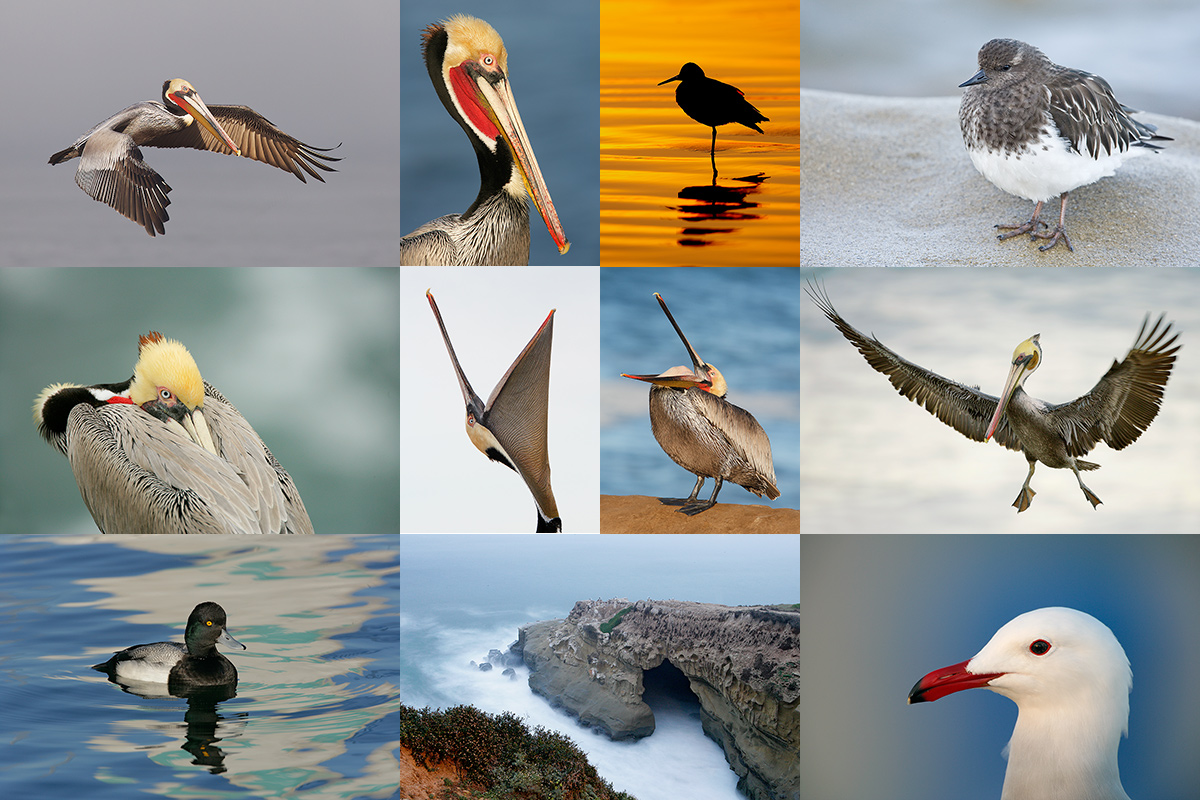
|
|
Variety is surely the spice of life in San Diego. Click on the composite to enjoy a larger version.
|
Getting Up Early and Staying Out Late
On all BIRDS AS ART IPTS including and especially the San Diego IPT, we get into the field early to take advantage of unique and often spectacular lighting conditions and we stay out late to maximize the chances of killer light and glorious sunset silhouette situations. We often arrive at the cliffs a full hour before anyone else shows up to check out the landscape and seascape opportunities.
Typos
With all blog posts, feel free to e-mail or to leave a comment regarding any typos or errors.
January 23rd, 2024 Amazon
In it’s infinite wisdom, the Amazon affiliate program recently eliminated all types of generic and logo links as well as product-specific links such as those formerly featured on the Great (Photographic Accessory) Stuff tab here (and above on the orange-yellow menu bar).
In this and many future blog posts, I will post an item that contains my Amazon Affiliate link. If you do not wish to purchase the item, you can help support the work that I do here by clicking on the link and then continuing to shop. Please consider making it a habit to visit the blog before you do your Amazon shopping online. Great news: it will not cost you a penny more, works great with your Amazon Prime or Amazon Business accounts, and will be gratefully appreciated.
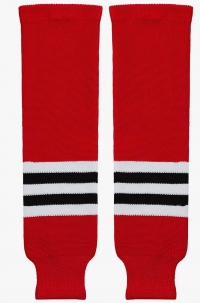
Many years ago — possibly as far back as two decades, someone who follows the blog kindly sent me some gifts: several pairs of hockey socks sewed closed on one end. I have been using them ever since to store my intermediate telephoto lenses. Recently, the Sony FE 70-200mm f/2.8 GM OSS II lens and the Sony FE 200-600mm f/5.6-6.3 G OSS lens made it to San Diego with me nestled in a sewed up hockey sock. My Canon 180mm Macro lens did not make the trip but it rests on a shelf in my garage encased and well protected by a sewed up hockey sock.
Most folks know that I have been protecting my gear with Carhartt Beanies (AKA Watch Caps) for decades. Now they know how I store my intermediate lenses safely. Like the beanies, they are far less costly than the LensCoat stuff, offer far more protection in terms of absorbing shock during travel by air or by car, and yield better protection against moisture as well. Like the beanies, these socks come in a verity of colors and patterns for the anal retentive folks 🙂 If you missed the featured beanies, please see the previous blog post.
What’s Up?
On Sunday Monte and Bryan Love and I photographed for two hours in a pretty steady rain. Then the rain let up, and the skies brightened. And then the sun came out. We did one five hour morning session and called it a day. Doc Love had to head to LA for a meeting and Monte and I had a great brunch at Cafe Vihak. I downloaded all of Monte’s images onto my laptop and went through them. I picked the very best and let Monte know how others could have been improved. He had many very good ones.
The forecast for Monday was for rain all day, heavy most of the time. It was pouring when we awoke. It was still pouring at 11am when I said, “I’m going stir crazy. We gotta go make some bird photos.” To get to my car in the parking lot it was necessary to walk through a stream of one foot deep cold water as the development walkways were flooded. I phoned Monte and picked him up in the smaller parking lot that was uphill of our AirBnb. We scouted around up bit and came up empty as it was still raining pretty good.
We circled back, and by the time we got to the pelicans the rain had let up. We started photographing by noon, and four hours later I had created 4026 images of pelicans, gull, cormorants, and several Selasphorus hummingbirds — Allen’s or Rufous? I’ve been so busy planning future travel that they are only half edited.
There are a zillion gorgeous Pacific-race Brown Pelicans in San Diego right now. Consider buying a plane ticket and join me for the second San Diego IPT. Details below.
Today is Tuesday 23 January 2024. Many multiple IPT veteran and good friend Monte Brown and I will be meeting blog regular and first time IPT participant Keith Solberg at 7:00am this morning for the first day of the 2024 San Diego IPT at La Jolla. Wherever you are and whatever you choose to do, I hope that you too have a great day.
Please remember to use the B&H links that are found on most blog pages and to use the BIRDSASART discount code at checkout when purchasing your new gear from Bedfords to get 3% back on your credit card and enjoy free second-day air FedEx. Please, also, consider joining a BAA IPT. You will be amazed at how much you will learn!
If an item — a Delkin flash card, or a tripod head — for example, that is available from B&H and/or Bedfords, is also available in the BAA Online Store, it would be great, and greatly appreciated, if you would opt to purchase from us. We will match any price. Please remember also to use my B&H affiliate links or to earn 3% cash back at Bedfords by using the BIRDSASART discount code at checkout for your major gear purchases. Doing either often earns you free guides and/or discounts. And always earns my great appreciation.

Save 15%!
If you’d like to try out a new lens, or if you need a lens for a specific trip or project (or for an IPT), LensRentals.com is the only way to go. To save 15%, simply click on the logo link above, arrange for your rental, and type in BIRDSASART15. If you type the gear you are looking for in the search box, it will pop right up. LensRentals.com offers affordable insurance. You can decline it, opt for LensCap: Damage Only, or select LensCap: Damage & Theft. Then hit PROCEED TO CHECKOUT. After you enter all of your info but before completing your order, be sure to scroll down to Promo Code box and enter the BIRDSASART15 code to save 15%.
I checked on renting a Sony FE 70-200mm f/2.8 GM OSS II lens for a week. The cost is only $122.00. LensCap: Damage Only coverage can be added for a very low $18.00. Going with LensCap: Damage & Theft would be $27.00. The shipping charge varies. They offer an interesting program called Lensrentals HD. By signing up for this shipping discount program ($99.00/year), you’ll get free Standard Shipping on all the orders you place.
Renting a Sony 600mm f/4 GM OSS lens for a week will cost you $536.00. The two coverage options come in at $76.00 or $114.00. Less your 15% discount when you enter the BIRDSASART15 code into the Promo Code box at checkout and enter the BIRDSASART15 codeine the Promo Code box at checkout to save 15%.
Remember, to save the 15% on your rental you must start your search by clicking on the logo above, or on this link: LensRentals.com


B&H
To ensure that I get credit for your B&H purchases, you can always click here. The tracking is invisible but greatly appreciated. And, you can use your PayBoo card. You must use the website to order. B&H will reopen on Fri April 14. Thanking me for the past 4000 educational blog posts could not be any easier and will not cost you one penny. Please shoot me your B&H receipt for major purchases.
Many folks have written recently stating that they purchased a Sony a1 from B&H and would like their free membership in the Sony 1 Info and Updates Group, a $150.00 value. When I check my affiliate account, their orders have not been there. When I let them know that they get credit for B&H purchases only if they use one of the many B&H affiliate links on the blog or begin their searches with this link, they are always disappointed. If in doubt, please contact me via e-mail and request a BH link. I am always glad to help and to guide you to the right gear.
Bedfords Simplified
Click here to start your search. Choose standard shipping, and when you get to the payment page, enter BIRDSASART in the discount code box and hit apply. You will be upgraded to free second day air Fed-Ex and receive 3% cash back on your credit card once your stuff ships. Either is greatly appreciated by yours truly.
Bedfords Amazing BAA Discount Policy
Folks who have fallen in love with Bedfords can now use the BIRDSASART coupon code at checkout to enjoy a post-purchase, 3% off-statement credit (excluding taxes and shipping charges) on orders paid with a credit card. The 3% credit will be refunded to the card you used for your purchase. Be sure, also, to check the box for free shipping to enjoy free Second Day Air Fed-Ex. This offer does not apply to purchases of Classes, Gift Cards, prior purchases.
Visit the Bedfords website here, shoot Steve Elkins an e-mail, or text him on his cell phone at (479) 381-2592.
Gear Questions and Advice
Too many folks attending BAA IPTs and dozens of photographers whom I see in the field and on BPN, are — out of ignorance — using the wrong gear, especially when it comes to tripods and more especially, tripod heads. And the same is true in spades when ordering new camera bodies or lenses. My advice will often save you some serious money and may help you avoid making a seriously bad choice. Please know that I am always glad to answer your gear questions via e-mail. If you are desperate, you can try me on my cell at 863-221-2372. Please leave a message and shoot me a text if I do not pick up.
|
|
|
This image was created on 22 January 2024 by Monte Brown on a BAA In-the-Field Session at La Jolla, CA. He used the no longer available Induro GIT 304L/Mongoose 3.6 Action Head-mounted Sony FE 600mm f/4 GM OSS lens and The One, the Sony Alpha 1 Mirrorless digital camera. ISO 1250. Exposure was determined via Zebras with ISO on the rear dial: 1/1000 sec. at f/4 (wide open). AWB at 8:57:25am on an already drizzly morning.
Tracking: Expand Spot/AF-C with Bird Face-Eye enabled performed perfectly. Be sure to click on the image to enjoy the larger version.
Image #1: Brown Pelican Pacific-race preening
Image Optimization by Arthur Morris/BIRDS AS ART
Image courtesy of and copyright 2024: Monte Brown
|
This Could Be Your Photo!
Congrats to Monte Brown for nailing the killer preening pelican image above. This could be your photo if you join the second 2024 San Diego IPT. Compare the processed image above with the (properly exposed, washed out) raw file below. To optimize the image I followed my current digital workflow as detailed in the Digital Basics III Video Series.
|
|
Image #1A: The Photo Mechanic screen capture for the Brown Pelican Pacific-race preening raw file.
Image courtesy of and copyright 2024: Monte Brown
|
Exposing Properly to the Right (is easy with Sony Zebras)
Note the histogram exposed totally to the right. RawDigger showed 2 million, 51,000 OvExp pixels in the lightest portions of the Pacific Ocean — dead solid perfect plus plus!. That lead to the pelican being perfectly exposed with tons of color info and less noise everywhere. Way to go Monte.
|
|
|
This image was created on 21 January 2024 on a BAA In-the-Field session at La Jolla, CA. I used the handheld Sony FE 70-200mm f/2.8 GM OSS II lens (at 185mm) and The One, the Sony Alpha 1 Mirrorless Digital Camera.. The exposure was determined via Zebras with ISO on the Thumb Dial. ISO 400: 1/3200 sec. at f/3.5 (stopped down 2/3-stop) in Manual mode. AWB at 10:22:33am just after the sun came out.
Tracking: Expand Spot AF/C with Bird-Eye/Face Detection performed perfectly. Click on the image to enjoy a high-res version.
Image #2: Trauma surgeon Bryan Love and Pacific race Brown Pelicans on the main cliff
|
This Could Be You!
I have long wanted to make an image just like this for many years. When the rain ended, the cliffs were bathed in soft sunlight. Doc Love was virtually surrounded by dozens of handsome pelicans and I was headed back down to join Bryan and Monte with the 70-200 in my hand. I saw the shot, and a few seconds later, it was in the bag. Sign up for the second 2024 San Diego IPT and this could be you!
Note the careful design and framing of this image. As John Shaw says, the job of a nature photographer is to make order out of chaos. For Image #2, I did that perfectly (he said modestly).
Depth-of-Field Question
What two factors lead to the photographer and all the birds being rendered razor sharp even at the very wide f/3.5 aperture?
|
|
|
San Diego offers a wealth of very attractive natural history subjects, including and especially the Pacific race of California Brown Pelican. With annual visits spanning more than four decades, I have lots of photographic experience there … Click on the composite to enjoy a larger version.
|
The 2024 San Diego Brown Pelicans (and more!) IPTs
San Diego IPT #2: 3 1/2 DAYS: WED 31 JAN thru the morning session on SAT 3 FEB, 2024: $2149.00. Limit: 6 photographers/Openings 4.
Please e-mail for information on personalized pre- and post-IPT morning sessions.
Join me in San Diego to photograph the spectacular breeding plumage Brown Pelicans with their fire-engine red and olive green bill pouches; Brandt’s (nesting) and Double-crested Cormorants; breeding plumage Wood and Ring-necked Ducks; other duck species possible including Lesser Scaup, Redhead, Northern Shoveler and Surf Scoter; a variety of gulls including Western, California, and the gorgeous Heermann’s, all in full breeding plumage; shorebirds including Marbled Godwit, Willet, Sanderling and Black-bellied Plover; many others are possible including Least, Western, and Spotted Sandpiper, Whimbrel, Black and Ruddy Turnstone, Semipalmated Plover, and Surfbird; Harbor Seals and California Sea Lions (both depending on the current regulations and restrictions). And as you can see by studying the IPT cards, there are some nice bird-scape and landscape opportunities as well. Not to mention a ton of excellent flight photography opportunities and instruction.
I discovered some really neat new spots on my 2022/23 visit. As a result, the first and second IPTs may include an afternoon or two of landscape photography.
Please note: where permitted and on occasion, ducks and gulls may be attracted (or re-located) with offerings of grains or healthy bread.
|
|
|
San Diego offers a wealth of very attractive natural history subjects, including and especially the Pacific race of California Brown Pelican. With annual visits spanning more than four decades, I have lots of photographic experience there … Click on the composite to enjoy a larger version.
|
Learning Exposure, Whether You Like It Or Not
Whether you like it or not, we will be beating the subject of exposure like a dead horse. In every new situation, you will hear my thoughts on exposure along with my thoughts on both Nikon and Canon histograms and SONY Zebras. Whether you like it or not, you will learn to work in manual mode so that you can get the right exposure every time (as long as a bird gives you ten seconds with the light constant). Or two seconds with SONY zebras … And you will learn what to do when the light is changing constantly. What you learn about exposure will be one of the great takeaways on every IPT.
|
|
|
Though the pelicans will be the stars of the show on this IPT, there will be many other handsome and captivating subjects in wonderful settings. Click on the composite to enjoy a larger version.
|
It Ain’t Just Pelicans
With gorgeous subjects just sitting there waiting to have their pictures taken, photographing the pelicans on the cliffs is about as easy as nature photography gets. With the winds from the east almost every morning, there is usually some excellent flight photography, at times with 70-200mm lenses! And the pelicans are almost always doing something interesting: preening, scratching, bill pouch cleaning, or squabbling. And then there are those crazy head throws that are thought to be a form of intra-flock communication. You will be guided as to how to make the best of those opportunities. Depending on the weather, the local conditions, and the tides, there are a variety of other fabulous photo chances available in and around San Diego. Each IPT will include one or two duck sessions.
|

|
|
Did I mention that there are lots of great birds and natural history subjects in San Diego in winter? Click on the composite to enjoy a larger version.
|
The San Diego Details
These IPTs will include four or five 3-hour morning photo sessions, three or four 1 1/2-hour afternoon photo sessions, and three or four working brunches that will include image review and Photoshop sessions. On rare cloudy days, we may — at the leader’s discretion, stay out in the morning for a long session and skip that afternoon shoot. To ensure early starts, breakfasts will be your responsibility. And so that we can get some sleep, dinners will be on your own as well. In the extremely unlikely event that Goldfish Point is closed due to local ordinance (or whimsy) — that has never happened in the past fifty years, I will of course do my very best to maximize our photographic opportunities.
Deposit Info
A $699 deposit is required to hold your slot for one of the 2024 San Diego IPT. You can send a check (made out to “BIRDS AS ART”) to us here: BIRDS AS ART, PO Box 7245, Indian Lake Estates, FL, 33855, or call Jim or Jennifer at the office with a credit card at 863-692-0906. Your balance, payable only by check, is due three months before the trip.
|

|
|
Variety is surely the spice of life in San Diego. Click on the composite to enjoy a larger version.
|
Getting Up Early and Staying Out Late
On all BIRDS AS ART IPTS including and especially the San Diego IPT, we get into the field early to take advantage of unique and often spectacular lighting conditions and we stay out late to maximize the chances of killer light and glorious sunset silhouette situations. We often arrive at the cliffs a full hour before anyone else shows up to check out the landscape and seascape opportunities.
Typos
With all blog posts, feel free to e-mail or to leave a comment regarding any typos or errors.
January 21st, 2024
Amazon
In it’s infinite wisdom, the Amazon affiliate program recently eliminated all types of generic and logo links as well as product-specific links such as those formerly featured on the Great (Photographic Accessory) Stuff tab here (and above on the orange-yellow menu bar).
In this and many future blog posts, I will post an item that contains my Amazon Affiliate link. If you do not wish to purchase the item, you can help support the work that I do here by clicking on the link and then continuing to shop. Please consider making it a habit to visit the blog before you do your Amazon shopping online. Great news: it will not cost you a penny more, works great with your Amazon Prime or Amazon Business accounts, and will be gratefully appreciated.
Why spent $10-30K on your photo gear and then skimp on protecting it? Especially when you travel.
Most folks know that I have been protecting my gear with Carhartt Beanies (AKA Watch Caps) for decades. They are far less costly than the LensCoat stuff, offer far more protection in terms of absorbing shock during travel by air or by car, and yield better protection against moisture as well. I double the hats for my camera bodies. You can buy thinner, cheaper watch caps, but they simply do not do the job. Best of all, the beanies come in a variety of styles and at least 40 colors; well-organized folks can color-code their gear by using one color for TCs, a different one for camera bodies, etc., etc., etc. Click on the logo link above to check out my very favorite Carhartt Beanie.
When rain threatens, I make sure to have an extra cap in my fanny pack. If it starts to drizzle or rain, I simply place the beanie over my camera body. They are thick and in addition, they repel the raindrops. I have never had a problem with a lens in the rain. Camera bodies, you ask? Well yes. But never when protected by a Carhartt beanie 🙂
What’s Up?
With the cloudy skies and a breeze from the north, I opted to neglect the pelicans on Saturday morning and work the Brandt’s Cormorant colony. Birds were flying out and in right off the bat, but none were returning with nesting material. Just before 8:00am, the action really heated up. The 70-200 f/2.8 is the perfect tool for the point blank incoming flight. It’s super-fast f/2.8 aperture, the light weight and ease of handling, and the efficient zooming mechanism make working the cormorants an absolute pleasure.
Be sure to click on the three flight images to get an idea of the incredible sharpness of the photos. That despite the ridiculously narrow d-o-f at f/2.8.
There is still time to join San Diego IPT #2 (or #1 if you live nearby).
Today is Sunday 21 January 2024. Many multiple IPT veteran and good friend Monte Brown and I will be meeting San Diego ER doc Bryan Love for a morning session at La Jolla. Wherever you are and whatever you choose to do, I hope that you too have a great day.
Please remember to use the B&H links that are found on most blog pages and to use the BIRDSASART discount code at checkout when purchasing your new gear from Bedfords to get 3% back on your credit card and enjoy free second-day air FedEx. Please, also, consider joining a BAA IPT. You will be amazed at how much you will learn!
If an item — a Delkin flash card, or a tripod head — for example, that is available from B&H and/or Bedfords, is also available in the BAA Online Store, it would be great, and greatly appreciated, if you would opt to purchase from us. We will match any price. Please remember also to use my B&H affiliate links or to earn 3% cash back at Bedfords by using the BIRDSASART discount code at checkout for your major gear purchases. Doing either often earns you free guides and/or discounts. And always earns my great appreciation.

Save 15%!
If you’d like to try out a new lens, or if you need a lens for a specific trip or project (or for an IPT), LensRentals.com is the only way to go. To save 15%, simply click on the logo link above, arrange for your rental, and type in BIRDSASART15. If you type the gear you are looking for in the search box, it will pop right up. LensRentals.com offers affordable insurance. You can decline it, opt for LensCap: Damage Only, or select LensCap: Damage & Theft. Then hit PROCEED TO CHECKOUT. After you enter all of your info but before completing your order, be sure to scroll down to Promo Code box and enter the BIRDSASART15 code to save 15%.
I checked on renting a Sony FE 70-200mm f/2.8 GM OSS II lens for a week. The cost is only $122.00. LensCap: Damage Only coverage can be added for a very low $18.00. Going with LensCap: Damage & Theft would be $27.00. The shipping charge varies. They offer an interesting program called Lensrentals HD. By signing up for this shipping discount program ($99.00/year), you’ll get free Standard Shipping on all the orders you place.
Renting a Sony 600mm f/4 GM OSS lens for a week will cost you $536.00. The two coverage options come in at $76.00 or $114.00. Less your 15% discount when you enter the BIRDSASART15 code into the Promo Code box at checkout and enter the BIRDSASART15 codeine the Promo Code box at checkout to save 15%.
Remember, to save the 15% on your rental you must start your search by clicking on the logo above, or on this link: LensRentals.com


B&H
To ensure that I get credit for your B&H purchases, you can always click here. The tracking is invisible but greatly appreciated. And, you can use your PayBoo card. You must use the website to order. B&H will reopen on Fri April 14. Thanking me for the past 4000 educational blog posts could not be any easier and will not cost you one penny. Please shoot me your B&H receipt for major purchases.
Many folks have written recently stating that they purchased a Sony a1 from B&H and would like their free membership in the Sony 1 Info and Updates Group, a $150.00 value. When I check my affiliate account, their orders have not been there. When I let them know that they get credit for B&H purchases only if they use one of the many B&H affiliate links on the blog or begin their searches with this link, they are always disappointed. If in doubt, please contact me via e-mail and request a BH link. I am always glad to help and to guide you to the right gear.
Bedfords Simplified
Click here to start your search. Choose standard shipping, and when you get to the payment page, enter BIRDSASART in the discount code box and hit apply. You will be upgraded to free second day air Fed-Ex and receive 3% cash back on your credit card once your stuff ships. Either is greatly appreciated by yours truly.
Bedfords Amazing BAA Discount Policy
Folks who have fallen in love with Bedfords can now use the BIRDSASART coupon code at checkout to enjoy a post-purchase, 3% off-statement credit (excluding taxes and shipping charges) on orders paid with a credit card. The 3% credit will be refunded to the card you used for your purchase. Be sure, also, to check the box for free shipping to enjoy free Second Day Air Fed-Ex. This offer does not apply to purchases of Classes, Gift Cards, prior purchases.
Visit the Bedfords website here, shoot Steve Elkins an e-mail, or text him on his cell phone at (479) 381-2592.
Gear Questions and Advice
Too many folks attending BAA IPTs and dozens of photographers whom I see in the field and on BPN, are — out of ignorance — using the wrong gear, especially when it comes to tripods and more especially, tripod heads. And the same is true in spades when ordering new camera bodies or lenses. My advice will often save you some serious money and may help you avoid making a seriously bad choice. Please know that I am always glad to answer your gear questions via e-mail. If you are desperate, you can try me on my cell at 863-221-2372. Please leave a message and shoot me a text if I do not pick up.
|
|
|
This image was created on 20 January 2024 while scouting at La Jolla for the San Diego Instructional Photo-Tours. I used the handheld Sony FE 70-200mm f/2.8 GM OSS II lens (at 200mm) and The One, the Sony Alpha 1 Mirrorless Digital Camera.. The exposure was determined via Zebras with ISO on the Thumb Dial. ISO 12800: 1/2500 sec. at f/2.8 (wide open) in Manual mode. AWB at 7:13:14am on a then cloudy-dark morning.
Tracking: Zone AF/C with Bird-Eye/Face Detection performed perfectly. Click on the image to enjoy a high-res version.
Image #1: Brandt’s Cormorant head portrait in green (leaf) heaven
|
Perspective
I was surprised to see this bird is building its nest about three feet from the fence. Maybe less. I have never seen one setting up anywhere near that close. Standard procedure is to shoot over the fence that is only about 3 feet high. Had I stood while making this image, I would have had an ugly background of dirt and out-of-focus cormorants. Crouching down let me shoot between the wooden slats of the fence and get a bit closer to the bird.
If this nest hatches in about two months you would be able to shoot almost straight down at the chicks. But only with a close focusing lens like the Sony FE 70-200mm f/2.8 GM OSS II lens!
Don’t Fear the High ISOs
In retrospect, I did not need to be at 1/2500 sec. for this image. I would have been better off halving the shutter speed and doubling the aperture. Or even tried 1/640 sec. at f/5.6. Either way, I would have been at ISO 12800. As you can see, with my new 2-step noise reduction technique (as detailed in the Digital Basics III Video series), this formerly absurdly high ISO was not a problem at all.
|
|
|
This image was also created on 20 January 2024 while scouting at La Jolla for the San Diego Instructional Photo-Tours. Again, I used the handheld Sony FE 70-200mm f/2.8 GM OSS II lens (at 200mm) and The One, the Sony Alpha 1 Mirrorless Digital Camera.. The exposure was determined via Zebras with ISO on the Thumb Dial. ISO 3200: 1/3200 sec. at f/2.8 (wide open) in Manual mode. AWB at 8:01:24am on a then-cloudy morning.
Wide AF/C with Bird-Eye/Face Detection performed perfectly. Click on the image to enjoy a high-res version.
Image #2: Brandt’s Cormorant with seaweed for nest construction
|
High ISOs for Flight and Action Shooting
When I began shooting flight on Saturday morning, I needed ISO 8000 to get to the right exposure at 1/2500 sec. As the morning brightened, I was able to reduce my ISO settings. Sony Zebras makes life so, so easy.
|
|
|
This image was also created on 20 January 2024 while scouting at La Jolla for the San Diego Instructional Photo-Tours. Again, I used the handheld Sony FE 70-200mm f/2.8 GM OSS II lens (at 200mm) and The One, the Sony Alpha 1 Mirrorless Digital Camera.. The exposure was determined via Zebras with ISO on the Thumb Dial. ISO 2500: 1/3200 sec. at f/2.8 (wide open) in Manual mode. AWB at 8:44:36am on a then-cloudy somewhat brighter morning.
Wide AF/C with Bird-Eye/Face Detection performed perfectly. Click on the image to enjoy a high-res version.
Image #3: Brandt’s Cormorant with seaweed for nest construction braking to land point blank
|
Press the Button for an Occasional Miracle
I barely squeezed the whole bird into the frame from top to bottom. Actually, when I executed the obvious crop to a square, I had to add a bit of canvas above and below to give the subject a bit more room to breathe. The three frames before this one and the seven frames after it, all featured badly clipped wings.
The Lesson
Push the shutter button and hope for the best. You never know which chocolate you might get 🙂
|
|
|
This image was also created on 20 January 2024 while scouting at La Jolla for the San Diego Instructional Photo-Tours. Again, I used the handheld Sony FE 70-200mm f/2.8 GM OSS II lens (at 200mm) and The One, the Sony Alpha 1 Mirrorless Digital Camera.. The exposure was determined via Zebras with ISO on the Thumb Dial. ISO 2000: 1/3200 sec. at f/2.8 (wide open) in Manual mode. AWB at 8:55:58am on a then-cloudy but a bit brighter morning.
Wide AF/C with Bird-Eye/Face Detection performed perfectly. Click on the image to enjoy a high-res version.
Image #4: Brandt’s Cormorant braking to land looking doofy
|
Mr. Doofy
For whatever reason, the bird in Image #4 seems to have a doofy look on its face. Be sure to click on the image to see it larger and check out the goofy look
|
|
|
San Diego offers a wealth of very attractive natural history subjects, including and especially the Pacific race of California Brown Pelican. With annual visits spanning more than four decades, I have lots of photographic experience there … Click on the composite to enjoy a larger version.
|
Learning Exposure, Whether You Like It Or Not
Whether you like it or not, we will be beating the subject of exposure like a dead horse. In every new situation, you will hear my thoughts on exposure along with my thoughts on both Nikon and Canon histograms and SONY Zebras. Whether you like it or not, you will learn to work in manual mode so that you can get the right exposure every time (as long as a bird gives you ten seconds with the light constant). Or two seconds with SONY zebras … And you will learn what to do when the light is changing constantly. What you learn about exposure will be one of the great takeaways on every IPT.
|
|
|
Though the pelicans will be the stars of the show on this IPT, there will be many other handsome and captivating subjects in wonderful settings. Click on the composite to enjoy a larger version.
|
It Ain’t Just Pelicans
With gorgeous subjects just sitting there waiting to have their pictures taken, photographing the pelicans on the cliffs is about as easy as nature photography gets. With the winds from the east almost every morning, there is usually some excellent flight photography, at times with 70-200mm lenses! And the pelicans are almost always doing something interesting: preening, scratching, bill pouch cleaning, or squabbling. And then there are those crazy head throws that are thought to be a form of intra-flock communication. You will be guided as to how to make the best of those opportunities. Depending on the weather, the local conditions, and the tides, there are a variety of other fabulous photo chances available in and around San Diego. Each IPT will include one or two duck sessions.
|

|
|
Did I mention that there are lots of great birds and natural history subjects in San Diego in winter? Click on the composite to enjoy a larger version.
|
The San Diego Details
These IPTs will include four or five 3-hour morning photo sessions, three or four 1 1/2-hour afternoon photo sessions, and three or four working brunches that will include image review and Photoshop sessions. On rare cloudy days, we may — at the leader’s discretion, stay out in the morning for a long session and skip that afternoon shoot. To ensure early starts, breakfasts will be your responsibility. And so that we can get some sleep, dinners will be on your own as well. In the extremely unlikely event that Goldfish Point is closed due to local ordinance (or whimsy) — that has never happened in the past fifty years, I will of course do my very best to maximize our photographic opportunities.
Deposit Info
A $699 deposit is required to hold your slot for one of the 2024 San Diego IPT. You can send a check (made out to “BIRDS AS ART”) to us here: BIRDS AS ART, PO Box 7245, Indian Lake Estates, FL, 33855, or call Jim or Jennifer at the office with a credit card at 863-692-0906. Your balance, payable only by check, is due three months before the trip.
|

|
|
Variety is surely the spice of life in San Diego. Click on the composite to enjoy a larger version.
|
Getting Up Early and Staying Out Late
On all BIRDS AS ART IPTS including and especially the San Diego IPT, we get into the field early to take advantage of unique and often spectacular lighting conditions and we stay out late to maximize the chances of killer light and glorious sunset silhouette situations. We often arrive at the cliffs a full hour before anyone else shows up to check out the landscape and seascape opportunities.
Typos
With all blog posts, feel free to e-mail or to leave a comment regarding any typos or errors.
January 19th, 2024
Amazon
In it’s infinite wisdom, the Amazon affiliate program recently eliminated all types of generic and logo links as well as product-specific links such as those formerly featured on the Great (Photographic Accessory) Stuff tab here (and above on the orange-yellow menu bar).
On this and most future blog posts, I will post an item that contains my Amazon Affiliate link. If you do not wish to purchase the item, you can help support the work that I do here by clicking on the link and then continuing to shop. Please consider making it a habit to visit the blog before you do your Amazon shopping online. Great news: it will not cost you a penny more, works great with your Amazon Prime or Amazon Business accounts, and will be gratefully appreciated.

Designed to prevent keyboard imprints and oil transfers onto MacBook screens. Ultra-Soft, lint free, reusable, washable, non-abrasive, anti-scratch, absorbent and washable, eco-friendly material, durable microfiber fabric, lint free, anti-static, safe for screens, camera lens, and laptop screens. This micro fiber is designed in Denmark specifically for laptop protection. Click on the logo link above or here, to order one for your MacBook or continue shopping for a similar item or for your household or electronic needs. My M1 laptop had the entire keyboard etched onto the screen and I needed to fight with Apple but eventually they replaced it as a warranty item. Using a Clean Screen Wizard eliminates the problem completely (as long as you make it a habit.
What’s Up?
Thursday morning at La Jolla was beyond spectacular. Things began slowly. I set up in a spot all alone, pretty sure that the birds would come to me. The sun was just coming over the hill and most of the pelicans were behind me. But, I held true to my convictions. After about twenty minutes, a single gorgeous pelican landed on my favorite perch. I worked that bird with the bare 400mm f/2.8 wide open. I even did some vertical videos of the bird preening. And then more pelicans flew in to the gentle northeast breeze. I got some really sweet flight shots. At about 9:00am, a message popped up on the back of my a-1, “Card full.” I had not filled a card in so long that I was confused at first. I changed cards and experimented doing flight with the 400mm f/2.8 and the 2X TC. In the sweet, sweet light, I created 3460 images. After my nap, I kept 177 images. Today’s featured images were two of the very best. At some point, I will get down to less than 50.
In yesterday’s post, I preferred Image #2 for the same reasons that everyone else did — the incredible colors of the distended bill pouch. Not to mention razor sharp, and clean, tight, and graphic.
Today is Friday 19 January 2024. My late Mom would not be shocked to learn that I am again heading out early tomorrow morning to photograph pelicans! Wherever you are and whatever you choose to do, I hope that you too have a great day.
If you are interested in joining me for an In-the-Field Instructional Session in San Diego this month, please get in touch ASAP either via e-mail or by calling or texting my cell at 863-221-2372. I was thrilled to learn recently that two folks signed up for San Diego #2. Both are first timers: Jeanette LaPorte and Tom Baker. It is not too late to sign up for either IPT and be ensured of almost private instruction. Get in touch as above to learn of the couples or late registration discounts.
Please remember to use the B&H links that are found on most blog pages and to use the BIRDSASART discount code at checkout when purchasing your new gear from Bedfords to get 3% back on your credit card and enjoy free second-day air FedEx. Please, also, consider joining a BAA IPT. You will be amazed at how much you will learn!
If an item — a Delkin flash card, or a tripod head — for example, that is available from B&H and/or Bedfords, is also available in the BAA Online Store, it would be great, and greatly appreciated, if you would opt to purchase from us. We will match any price. Please remember also to use my B&H affiliate links or to earn 3% cash back at Bedfords by using the BIRDSASART discount code at checkout for your major gear purchases. Doing either often earns you free guides and/or discounts. And always earns my great appreciation.
Photo Mechanic Rocks!
If it is taking a few seconds for each raw file to render and taking you hours to edit a few thousand images, you need to check out Photo Mechanic. Editing yesterday morning’s day folder took me exactly 27 minutes. There were lots of similars and lots of really bad photos. If you are new and use my link to purchase from the BAA Online Store (thank you very much!), shoot me an e-mail and I will send you set-up info and direct you to additional helpful materials.
|
|
|
Click on the composite to see a larger version.
Composite: the two originals for today’s featured images
|
The Two Originals
Before you continue or scroll down, take a minute to plan how you would optimize each of the two images.
Optimizing the head throw image was relatively straightforward. Eliminating the rock (it was a mess) from the second image was a lot more difficult; I did not have much water on the same plane to work with. So, I came up with a unique solution to the problem. If you own the Digital Basics III Video series and would like to see how I did it, shoot me an
e-mail and I will include it in Volume I/#5.
|
|
The Digital Basics III Video Series
|
The Digital Basics III Video Series
I realized about a year ago that my digital workflow had changed significantly and was toying with the idea of writing a Digital Basics III. More recently, I have learned and begun working with two great new Photoshop Tools, the Remove Tool and the Luminance Targeted Adjustment Tool. The former is like a smarter Spot Healing Brush Tool on steroids and the latter is a huge step up from the fabulous Color Mixer Tool. During that same time frame, I came up with a new and improved 2-step noise reduction technique. I still use Divide and Conquer, Quick Masks, Layer Masks, an expanded array of personalized keyboard shortcuts, and tons of other stuff from both versions of Digital Basics.
As soon as I realized that I did not want to take on another large writing project, I realized that by creating a series of videos I could much more easily share all the details of my current digital workflow and much more easily incorporate additional new tips, techniques, and tools as I went. And so, The Digital Basics III Video Series was born. You can check out Volume I/#1 here.
You might opt to purchase single videos or to subscribe to Volume I and save $26 by ordering the first five videos in one fell swoop. You can purchase the five videos in Volume I by clicking here. The videos will be most valuable for folks using the latest version of Photoshop (2024) or Lightroom along with Topaz DeNoise AI and Topaz Sharpen AI.
Retroactive Discount Savings
If you have previously purchased a single video and learned a lot, you can upgrade to the complete DB III Volume I series and save $26.00 by calling Jim at 863-692-0906 weekdays, Monday through Friday at noon.
The Optimization
Working wide, this image was created from a horizontal original that had the wing of a second pelican in the lower right of the frame. I expanded canvas above using Content-Aware Crop. All as in the Digital Basics III Video series. I hope to be working on Volume I/#4 very soon. You can see the original below.
If …
If you have any questions or opinions regarding this image, please leave a comment.
The Situation
There were about fifty pelicans packed onto the far low shelf. All at once, for no apparent reason, they got very nervous and began taking flight. There might have been someone on the upper cliff who scared them, or perhaps they heard the dinner bell ring as they all headed towards Scripps Pier. I got on the bird on my favorite perch and got lucky by isolating that bird in what was a chaotic situation. You can see the original below.
If …
If you have a question about this image, please leave a comment.
|
|
|
San Diego offers a wealth of very attractive natural history subjects, including and especially the Pacific race of California Brown Pelican. With annual visits spanning more than four decades, I have lots of photographic experience there … Click on the composite to enjoy a larger version.
|
Learning Exposure, Whether You Like It Or Not
Whether you like it or not, we will be beating the subject of exposure like a dead horse. In every new situation, you will hear my thoughts on exposure along with my thoughts on both Nikon and Canon histograms and SONY Zebras. Whether you like it or not, you will learn to work in manual mode so that you can get the right exposure every time (as long as a bird gives you ten seconds with the light constant). Or two seconds with SONY zebras … And you will learn what to do when the light is changing constantly. What you learn about exposure will be one of the great takeaways on every IPT.
|
|
|
Though the pelicans will be the stars of the show on this IPT, there will be many other handsome and captivating subjects in wonderful settings. Click on the composite to enjoy a larger version.
|
It Ain’t Just Pelicans
With gorgeous subjects just sitting there waiting to have their pictures taken, photographing the pelicans on the cliffs is about as easy as nature photography gets. With the winds from the east almost every morning, there is usually some excellent flight photography, at times with 70-200mm lenses! And the pelicans are almost always doing something interesting: preening, scratching, bill pouch cleaning, or squabbling. And then there are those crazy head throws that are thought to be a form of intra-flock communication. You will be guided as to how to make the best of those opportunities. Depending on the weather, the local conditions, and the tides, there are a variety of other fabulous photo chances available in and around San Diego. Each IPT will include one or two duck sessions.
|

|
|
Did I mention that there are lots of great birds and natural history subjects in San Diego in winter? Click on the composite to enjoy a larger version.
|
The San Diego Details
These IPTs will include four or five 3-hour morning photo sessions, three or four 1 1/2-hour afternoon photo sessions, and three or four working brunches that will include image review and Photoshop sessions. On rare cloudy days, we may — at the leader’s discretion, stay out in the morning for a long session and skip that afternoon shoot. To ensure early starts, breakfasts will be your responsibility. And so that we can get some sleep, dinners will be on your own as well. In the extremely unlikely event that Goldfish Point is closed due to local ordinance (or whimsy) — that has never happened in the past fifty years, I will of course do my very best to maximize our photographic opportunities.
Deposit Info
A $699 deposit is required to hold your slot for one of the 2024 San Diego IPT. You can send a check (made out to “BIRDS AS ART”) to us here: BIRDS AS ART, PO Box 7245, Indian Lake Estates, FL, 33855, or call Jim or Jennifer at the office with a credit card at 863-692-0906. Your balance, payable only by check, is due three months before the trip.
|

|
|
Variety is surely the spice of life in San Diego. Click on the composite to enjoy a larger version.
|
Getting Up Early and Staying Out Late
On all BIRDS AS ART IPTS including and especially the San Diego IPT, we get into the field early to take advantage of unique and often spectacular lighting conditions and we stay out late to maximize the chances of killer light and glorious sunset silhouette situations. We often arrive at the cliffs a full hour before anyone else shows up to check out the landscape and seascape opportunities.
Typos
With all blog posts, feel free to e-mail or to leave a comment regarding any typos or errors.
January 18th, 2024 This Just In: 1/18/2024 — 12:16pm Pacific Time
Not too late to join me in San Diego …
Thursday morning at La Jolla was beyond spectacular. In perfect conditions, I created 3460 images. Now all I need to do is pick the best ones. But first, a nap.
What’s Up?
I did a bit of photography on Wednesday morning and took a long scouting walk. Of yesterday’s three images, my favorite was Image #3, the bill pouch cleaning. Nobody liked any of the images. Sorry to Sue, she does not count. She always likes all of them but the silhouettes that she feels are “too dark.”) All the rest are “well made and interesting.” Many folks have kindly tried to explain to her what a silhouette is but she ain’t having it.
In the previous post, the golden brown background was my favorite.
Wherever you are and whatever you choose to do, I hope that you too have a great day. My late Mom would not be shocked to learn that I am headed out early to photograph pelicans! If you are interested in joining me for an In-the-Field Instructional Session in San Diego this month, please get in touch ASAP either via e-mail or by calling or texting my cell at 863-221-2372. I was thrilled to learn recently that two folks signed up for San Diego #2. Both are first timers: Jeanette LaPorte and Tom Baker. It is not tool late to sign up for either IPT and be ensured of almost private instruction. Get in touch as above to learn of the couples or late registration discounts.
Please remember to use the B&H links that are found on most blog pages and to use the BIRDSASART discount code at checkout when purchasing your new gear from Bedfords to get 3% back on your credit card and enjoy free second-day air FedEx. Please, also, consider joining a BAA IPT. You will be amazed at how much you will learn!
If an item — a Delkin flash card, or a tripod head — for example, that is available from B&H and/or Bedfords, is also available in the BAA Online Store, it would be great, and greatly appreciated, if you would opt to purchase from us. We will match any price. Please remember also to use my B&H affiliate links or to earn 3% cash back at Bedfords by using the BIRDSASART discount code at checkout for your major gear purchases. Doing either often earns you free guides and/or discounts. And always earns my great appreciation.
If …
If you have a question about this image, please leave a comment.
|
|
|
This image was created on 17 January 2024 on the cliffs at La Jolla. Standing at full height, I used the Robus RC-5558 Vantage Series 3 Carbon Fiber Tripod/Levered-Clamp FlexShooter Pro-mounted Sony FE 400mm f/2.8 GM OSS lens and The One, the Sony Alpha 1 Mirrorless Digital Camera). The exposure was determined via Zebra technology with ISO on the Thumb Dial. ISO 2000. 1/2500 sec. at f/2.8 (wide open) in Manual mode. When evaluated in RawDigger, the raw file exposure was determined to be dead-solid perfect (ho hum). AWB at 7:53:13am on cloudy morning.
Tracking: Zone/AF-C with Bird Face/Eye detection enabled performed to perfection. Be sure to click on the image to enjoy a high-res version.
Image #2: Brown Pelican breeding plumage Pacific race with bill pouch distended right after head throw
|
If …
If you have a question about this image, please leave a comment.
|
|
|
San Diego offers a wealth of very attractive natural history subjects, including and especially the Pacific race of California Brown Pelican. With annual visits spanning more than four decades, I have lots of photographic experience there … Click on the composite to enjoy a larger version.
|
Learning Exposure, Whether You Like It Or Not
Whether you like it or not, we will be beating the subject of exposure like a dead horse. In every new situation, you will hear my thoughts on exposure along with my thoughts on both Nikon and Canon histograms and SONY Zebras. Whether you like it or not, you will learn to work in manual mode so that you can get the right exposure every time (as long as a bird gives you ten seconds with the light constant). Or two seconds with SONY zebras … And you will learn what to do when the light is changing constantly. What you learn about exposure will be one of the great takeaways on every IPT.
|
|
|
Though the pelicans will be the stars of the show on this IPT, there will be many other handsome and captivating subjects in wonderful settings. Click on the composite to enjoy a larger version.
|
It Ain’t Just Pelicans
With gorgeous subjects just sitting there waiting to have their pictures taken, photographing the pelicans on the cliffs is about as easy as nature photography gets. With the winds from the east almost every morning, there is usually some excellent flight photography, at times with 70-200mm lenses! And the pelicans are almost always doing something interesting: preening, scratching, bill pouch cleaning, or squabbling. And then there are those crazy head throws that are thought to be a form of intra-flock communication. You will be guided as to how to make the best of those opportunities. Depending on the weather, the local conditions, and the tides, there are a variety of other fabulous photo chances available in and around San Diego. Each IPT will include one or two duck sessions.
|

|
|
Did I mention that there are lots of great birds and natural history subjects in San Diego in winter? Click on the composite to enjoy a larger version.
|
The San Diego Details
These IPTs will include four or five 3-hour morning photo sessions, three or four 1 1/2-hour afternoon photo sessions, and three or four working brunches that will include image review and Photoshop sessions. On rare cloudy days, we may — at the leader’s discretion, stay out in the morning for a long session and skip that afternoon shoot. To ensure early starts, breakfasts will be your responsibility. And so that we can get some sleep, dinners will be on your own as well. In the extremely unlikely event that Goldfish Point is closed due to local ordinance (or whimsy) — that has never happened in the past fifty years, I will of course do my very best to maximize our photographic opportunities.
Deposit Info
A $699 deposit is required to hold your slot for one of the 2024 San Diego IPT. You can send a check (made out to “BIRDS AS ART”) to us here: BIRDS AS ART, PO Box 7245, Indian Lake Estates, FL, 33855, or call Jim or Jennifer at the office with a credit card at 863-692-0906. Your balance, payable only by check, is due three months before the trip.
|

|
|
Variety is surely the spice of life in San Diego. Click on the composite to enjoy a larger version.
|
Getting Up Early and Staying Out Late
On all BIRDS AS ART IPTS including and especially the San Diego IPT, we get into the field early to take advantage of unique and often spectacular lighting conditions and we stay out late to maximize the chances of killer light and glorious sunset silhouette situations. We often arrive at the cliffs a full hour before anyone else shows up to check out the landscape and seascape opportunities.
Typos
With all blog posts, feel free to e-mail or to leave a comment regarding any typos or errors.
January 17th, 2024 Amazon
In it’s infinite wisdom, the Amazon affiliate program recently eliminated all types of generic and logo links as well as product-specific links such as those formerly featured on the Great (Photographic Accessory) Stuff tab here (and above on the orange-yellow menu bar).
On this and most future blog posts, I will post an item that contains my Amazon Affiliate link. If you do not wish to purchase the item, you can help support the work that I do here by clicking on the link and then continuing to shop. Please consider making it a habit of visiting the blog before you do your Amazon shopping online. Great news: it will not cost you a penny more, works great with your Amazon Prime or Amazon Business accounts, and will be gratefully appreciated.
When I might need to be walking in the water be it at Fort DeSoto, La Jolla Shores Beach, Nickerson Beach, or anywhere else, I always have a pair of surf booties on. The are comfortable, add a bit of warmth on cold days, keep your feet cool on warm days, prevent cuts from shells, broken glass, and the like, and give some degree of protection against sting rays.
I’d advise the 3mm thickness if you will be walking in warm water, or the 5mm thickness for cold water.
You can order a pair of surf booties by clicking here. They tend to run a bit small. I wear mine with socks. You do not need split toe booties.
Your Call?
Which of today’s three featured images is your favorite? All are invited to leave a comment letting us know why they made their choice. I will share my fave here soon.
Save Flying Tip
Whenever I fly, I make sure to tip the bathroom attendant in the airport. I do it for good luck. So far, I have a perfect record of safe flights. If the plane crashes, the two bucks will not do me any good anyway!
What’s Up?
A day late by not a dollar short, I flew to San Diego on the afternoon Alaska Airlines non-stop from Orlando. I picked up my rental car and headed to my AirBnB in Clairmont Mesa. I was in bed by 9pm 🙂
Wherever you are and whatever you choose to do, I hope that you too have a great day. My late Mom would not be shocked to learn that I am headed out early to photograph pelicans! If you are interested in joining me for an In-the-Field Instructional Session in San Diego this month, please get in touch ASAP either via e-mail or by calling or texting my cell at 863-221-2372. I was thrilled to learn recently that two folks signed up for San Diego #2. Both are first timers: Jeanette LaPorte and Tom Baker. It is not tool late to sign up for either IPT and be ensured of almost private instruction. Get in touch as above to learn of the couples of late registration discounts.
Please remember to use the B&H links that are found on most blog pages and to use the BIRDSASART discount code at checkout when purchasing your new gear from Bedfords to get 3% back on your credit card and enjoy free second-day air FedEx. Please, also, consider joining a BAA IPT. You will be amazed at how much you will learn!
If an item — a Delkin flash card, or a tripod head — for example, that is available from B&H and/or Bedfords, is also available in the BAA Online Store, it would be great, and greatly appreciated, if you would opt to purchase from us. We will match any price. Please remember also to use my B&H affiliate links or to earn 3% cash back at Bedfords by using the BIRDSASART discount code at checkout for your major gear purchases. Doing either often earns you free guides and/or discounts. And always earns my great appreciation.
|
|
|
This image was created on 3 January 2023 on the cliffs at La Jolla. Standing at full height, I used the handheld Sony FE 70-200mm f/2.8 GM OSS II lens with the Sony FE 1.4x Teleconverter (at 280mm) and The One, the Sony Alpha 1 Mirrorless Digital Camera.. The exposure was determined via Zebras with ISO on the Thumb Dial. ISO 1250: 1/2500 sec. at f/4 (wide open) in Manual mode. When evaluated in RawDigger, the raw file brightness was determined to be perfect. AWB at 9:51:30am on a cloudy drizzly morning.
Tracking: Expand Spot/AF-C with Bird-Eye/Face Detection performed perfectly. Click on the image to enjoy a high-res version.
Image #1: Brown Pelican Pacific race adult looking over the back of a juvenile
|
Float or Sink?
Does Image #1 float your boat or would it be an insta-delete for you? Note — this was not a photobombing; I got just what I was after.
Tip
In situations like this, whatever system you are using, you will surely want to avoid using any type of Zone AF pattern or method. Sony’s tracking with Expand Spot is so good that I will only rarely move the AF point around the frame as needed. I can start with the point in the middle — the system will continue to track the eye of the bird in the rear as I move the lens to re-compose. Most systems will have something similar.
Killer for Flight
It is hard to believe that I was dead-set again the 400mm f/2.8 lens for so many decades. Now, I handhold mine often for flight and action, especially in spots where the birds are relatively tame like La Jolla and Fort DeSoto.
In Image #2 I like that the breaking wave crossed the frame at the bird’s feet. If it had cut the bird’s head or body that would have been far less pleasing.
Of Note
First, note that even though I was using f/2.8, the wide-open aperture, the entire bird is sharp from the bill tip to the wing tips.
Second, note that the super-wide f/2.8 aperture allowed for a very fast shutter speed at a reasonable ISO despite the relatively low light situation. I can’t wait for the Sony 300mm f/2.8 to ship!
Bill Pouch Cleaning
Pacifc-race Brown Pelicans seem to clean their bill pouches far more often than the pelican in Florida. Usually — but not always — while sitting down, they will lean their head back and pull the bill pouch over their folded neck while opening the bill. This is often an indication that a dramatic head throw is next.
Tracking: Expand Spot was the ticket to success as it did an excellent job of tracking the bird’s right eye. The AF point was actually a fraction of an inch above and a fraction of an inch to the right of the bird’s eye. At 12 meters, the total depth of field at f/8 at 800mm was 2.75 inches, well more than enough to cover the eye. As for the bill tip, you pretty much have to forget about it. An aperture of f/32 would yield a total dof of 15 inches, but utilizing that would be quite tricky.
|
|
|
San Diego offers a wealth of very attractive natural history subjects, including and especially the Pacific race of California Brown Pelican. With annual visits spanning more than four decades, I have lots of photographic experience there … Click on the composite to enjoy a larger version.
|
The 2024 San Diego Brown Pelicans (and more!) IPTs
San Diego IPT #1: 4 1/2 DAYS: TUES 23 JAN thru the morning session on SAT 27 JAN 2024: $2699.00. Deposit: $699.00. Limit: 6/Openings 4.
San Diego IPT #2: 3 1/2 DAYS: WED 31 JAN thru the morning session on SAT 3 FEB, 2024: $2149.00. Limit: 6 photographers/Openings 4.
Please e-mail for information on personalized pre- and post-IPT morning sessions.
Join me in San Diego to photograph the spectacular breeding plumage Brown Pelicans with their fire-engine red and olive green bill pouches; Brandt’s (nesting) and Double-crested Cormorants; breeding plumage Wood and Ring-necked Ducks; other duck species possible including Lesser Scaup, Redhead, Northern Shoveler and Surf Scoter; a variety of gulls including Western, California, and the gorgeous Heermann’s, all in full breeding plumage; shorebirds including Marbled Godwit, Willet, Sanderling and Black-bellied Plover; many others are possible including Least, Western, and Spotted Sandpiper, Whimbrel, Black and Ruddy Turnstone, Semipalmated Plover, and Surfbird; Harbor Seals and California Sea Lions (both depending on the current regulations and restrictions). And as you can see by studying the IPT cards, there are some nice bird-scape and landscape opportunities as well. Not to mention a ton of excellent flight photography opportunities and instruction.
I discovered some really neat new spots on my 2022/23 visit. As a result, the first and second IPTs may include an afternoon or two of landscape photography.
Please note: where permitted and on occasion, ducks and gulls may be attracted (or re-located) with offerings of grains or healthy bread.
|
|
|
San Diego offers a wealth of very attractive natural history subjects, including and especially the Pacific race of California Brown Pelican. With annual visits spanning more than four decades, I have lots of photographic experience there … Click on the composite to enjoy a larger version.
|
Learning Exposure, Whether You Like It Or Not
Whether you like it or not, we will be beating the subject of exposure like a dead horse. In every new situation, you will hear my thoughts on exposure along with my thoughts on both Nikon and Canon histograms and SONY Zebras. Whether you like it or not, you will learn to work in manual mode so that you can get the right exposure every time (as long as a bird gives you ten seconds with the light constant). Or two seconds with SONY zebras … And you will learn what to do when the light is changing constantly. What you learn about exposure will be one of the great takeaways on every IPT.
|
|
|
Though the pelicans will be the stars of the show on this IPT, there will be many other handsome and captivating subjects in wonderful settings. Click on the composite to enjoy a larger version.
|
It Ain’t Just Pelicans
With gorgeous subjects just sitting there waiting to have their pictures taken, photographing the pelicans on the cliffs is about as easy as nature photography gets. With the winds from the east almost every morning, there is usually some excellent flight photography, at times with 70-200mm lenses! And the pelicans are almost always doing something interesting: preening, scratching, bill pouch cleaning, or squabbling. And then there are those crazy head throws that are thought to be a form of intra-flock communication. You will be guided as to how to make the best of those opportunities. Depending on the weather, the local conditions, and the tides, there are a variety of other fabulous photo chances available in and around San Diego. Each IPT will include one or two duck sessions.
|

|
|
Did I mention that there are lots of great birds and natural history subjects in San Diego in winter? Click on the composite to enjoy a larger version.
|
The San Diego Details
These IPTs will include four or five 3-hour morning photo sessions, three or four 1 1/2-hour afternoon photo sessions, and three or four working brunches that will include image review and Photoshop sessions. On rare cloudy days, we may — at the leader’s discretion, stay out in the morning for a long session and skip that afternoon shoot. To ensure early starts, breakfasts will be your responsibility. And so that we can get some sleep, dinners will be on your own as well. In the extremely unlikely event that Goldfish Point is closed due to local ordinance (or whimsy) — that has never happened in the past fifty years, I will of course do my very best to maximize our photographic opportunities.
Deposit Info
A $699 deposit is required to hold your slot for one of the 2024 San Diego IPT. You can send a check (made out to “BIRDS AS ART”) to us here: BIRDS AS ART, PO Box 7245, Indian Lake Estates, FL, 33855, or call Jim or Jennifer at the office with a credit card at 863-692-0906. Your balance, payable only by check, is due three months before the trip.
|

|
|
Variety is surely the spice of life in San Diego. Click on the composite to enjoy a larger version.
|
Getting Up Early and Staying Out Late
On all BIRDS AS ART IPTS including and especially the San Diego IPT, we get into the field early to take advantage of unique and often spectacular lighting conditions and we stay out late to maximize the chances of killer light and glorious sunset silhouette situations. We often arrive at the cliffs a full hour before anyone else shows up to check out the landscape and seascape opportunities.
Typos
With all blog posts, feel free to e-mail or to leave a comment regarding any typos or errors.
January 15th, 2024 Via Text from Sigmon Whitener
Sadako and I had a great time with you on the 2 1/2-DAY DeSoto IPT. And, in just a couple of days, we learned a lot more than we ever expected to.
Your Call?
Which of the three background colors do you prefer for a preening white pelican?
These Just About Sum It Up
Keith Solberg: January 13, 2024 at 6:40pm
I like the bird’s pose. The rocks are OK, but IMO they might be better if they were roughly the same height. The extra height on the right upsets the image’s balance for me.
with love, a
Arthur Morris/BIRDS AS ART: January 13, 2024 at 11:11pm
Thanks for leaving a comment, Keith. For me, the extra height of the rocks on the right balance’s the image perfectly. And just for the record books, I think that it is a fantastic image.
Cliff Beittel: January 14, 2024 at 7:53pm
Agree about the height of the rocks on the right–bird seems positioned perfectly against the background. The background has a desert look–like Joshua Tree NP without the trees. Not a negative, just different and interesting.
Arthur Morris/BIRDS AS ART: January 15, 2024 at 7:08am
Thanks, Cliff. The ambience under the bridge is not very pleasing :-).
As I was making that image, I thought, “I am not gonna like those rocks — they are too close to the bird.” I was happy that the super-wide f/2.8 aperture blurred them so nicely.
with love, a
What’s Up?
I learned on Saturday morning that Alaska Airlines had cancelled my nonstop Monday afternoon flight from Orlando to San Diego as the airline was forced to ground many Boeing 737 Max 9 flights after last week’s mid-air cabin panel blowout. (You can learn about the FAA investigation here.) I called the airline and looked into new flights for Monday. I went with one where I’d have to leave Orlando more than two hours earlier, layover at DFW for two hours, and arrive in San Diego at about the same times as originally planned.
But when the Buffalo Bills/Pittsburgh Steelers game (go Bills!) was moved from Sunday to Monday, I decided that I did not want to miss that game and the Philadelphia Eagles/Tampa Bay Buccaneers (go Bucs!) as well. So I looked for a flight on Tuesday and found a nonstop from MCO to SAN. I called Alaska on Saturday evening, but with so many cancellations and delays because of the grounded aircraft and the frigid weather and snow, the recording said, “The longest wait time to speak to an agent is five hours.” I went to bed.
I woke at 5:30am on Sunday and figured that if I called then, I could quickly change my flight. I got a message stating: “The longest wait time to speak to an agent is six hours.” With no choice, I plugged my cell phone in and waited on hold. I did get lots of work done making sure that I took the phone with me when I left my office. After two hours twenty minutes, a pleasant agent answered and changed my flights in a very few minutes. I will be flying to San Diego nonstop on Tuesday afternoon.
I’ve been flying Alaska a lot recently and honestly say that they have fantastic customer service. All of my flights have been pleasant and all of my luggage has arrived on time — knock on wood …
Today is Monday 15 January 2024. I will continue packing for my 4-week CA trip. Wherever you are and whatever you choose to do, I hope that you too have a great day.
Please remember to use the B&H links that are found on most blog pages and to use the BIRDSASART discount code at checkout when purchasing your new gear from Bedfords to get 3% back on your credit card and enjoy free second-day air FedEx. Please, also, consider joining a BAA IPT. You will be amazed at how much you will learn!
If an item — a Delkin flash card, or a tripod head — for example, that is available from B&H and/or Bedfords, is also available in the BAA Online Store, it would be great, and greatly appreciated, if you would opt to purchase from us. We will match any price. Please remember also to use my B&H affiliate links or to earn 3% cash back at Bedfords by using the BIRDSASART discount code at checkout for your major gear purchases. Doing either often earns you free guides and/or discounts. And always earns my great appreciation.
|
|
|
This image was created at Lakeland, FL on 10 January by Sigmon Whitener on a 2 1/2-DAY Fort DeSoto private IPT. He used a RWS monopod/Wimberley MonoGimbal Head-mounted Nikon NIKKOR Z 800mm f/6.3 VR S Lens with the Nikon Z9 Mirrorless Camera. ISO 400: 1/1250 second at f/8 in Manual mode. At 8:56:43 on a sunny morning.
Image optimization and how-to video by Arthur Morris/BIRDS AS ART
Image #1: American White Pelican preening
Image courtesy of and copyright 2023: Sigmon Whitener
|
Change of Plans
Leery of the forecast on Wednesday morning, I suggested that we detour and head for Lakeland and the white pelicans instead of walking North Beach at Fort DeSoto in a northwest wind. Sigmon and Sadako agreed. There were about two dozen of the big birds lined up on their favorite bulkhead. It turned out to be a fabulous morning.
The two cameras are virtually identical. As the Z8 does not have the built-in battery grip, it is physically smaller and weighs almost a full pound less — the Z8 is 2.0 pounds with a battery and a flash card as compared to 2.9 pounds for the Z9. The Z8 costs exactly $1500 less. AF performance and the image quality are identical, both of course are dependent on the skill of the operator.
Unless you have a problem with its smaller body size and the lack of a vertical grip, the Z8 would be the way to go. If I were shooting Nikon, I’d be using a Z8.
If you are a Nikon user who can add any relevant info here, please leave a comment sharing what you know.
|
|
|
You can purchase your copy here in the BAA Online Store for $69.00. Or Call Jim weekdays at 863-692-0906 with a credit card in hand.
The Nikon Z9 Guide for Wildlife Photographers
|
The Nikon Z9 Guide for Wildlife Photographers/by Warren Hatch — Editorial Consultant: Arthur Morris
Updated for Firmware V4.0
In this downloadable e-book (you will receive a link by e-mail), you’ll learn everything a wildlife photographer needs to know about the Nikon Z9. The Z9 is one of the most complex camera bodies ever made. In this guide, the brilliant Warren Hatch will teach you exactly how to set up your Z9 for bird, wildlife, and nature photography. The camera offers hundreds of settings and options. Selecting the right combination of these is essential in order to effectively use the Z9 in the field.
This 83-page guide, created in the tradition of the many mega-successful BIRDS AS ART Camera User’s Guides, includes:
1- Extensive information on the autofocus system and the optimal settings for the various shooting situations that wildlife photographers encounter including and especially for birds in flight.
2- The camera controls – what they do and how to customize them for your shooting style and varying conditions.
3- Configuring the camera so that you never need to take your eye from the viewfinder when the action unfolds.
5- Insights and details on using legacy F-mount lenses on the Z-9.
6- Practical advice about the camera batteries and chargers.
7- How to take advantage of the new capabilities introduced with firmware v2.00.
8- The AF-area Modes you should use and those you should avoid.
Order yours here in the BAA Online Store for $69.00. Or Call Jim weekdays at 863-692-0906 with a credit card in hand.
Learn more about this great guide in the blog post here.
|
|
|
This image was created at Lakeland, FL on 10 January by Sadako Whitener on a 2 1/2-DAY Fort DeSoto private IPT. She used a RWS monopod/Wimberley MonoGimbal Head-mounted Nikon NIKKOR Z 800mm f/6.3 VR S Lens with the Nikon Z8 Mirrorless Camera. ISO 200: 1/1000 second at f/6.3 in Manual mode. At 8:26:02am on a sunny morning. At 8:26:02am on a sunny morning.
Image optimization and how-to video by Arthur Morris/BIRDS AS ART.
Image #2: American White Pelican preening
Image courtesy of and copyright 2023: Sadako Whitener
|
The Nikon NIKKOR Z 800mm f/6.3 VR S Lens
This Z lens was designed specially for Nikon mirrorless. It weighs only 5.2 pounds. It is somewhat of a hybrid as it is an S series lens with PF (Phase Fresnel) elements. The PF lens element effectively compensates for chromatic aberration and ghosting when combined with ordinary glass lens elements. Utilizing a Phase Fresnel element allows Nikon engineers to use fewer elements. This results in a lighter, more compact lens. Since any movement of the lens when shooting results in unsharpness ( a factor of the square of the focal length), you need to employ good sharpness technique when handholding long lenses like this or using them on a monopod. Both Sigmon and Sadako did well with sharpness.
Yes, and as expected, the Z 800 PF is exceptionally sharp. Having the center of balance well to the rear makes handholding easier for folks who can manage 5-pounders. With this Z lens, you can assign ISO to the Programmable Control Ring on the lens barrel. I was surprised to learn that the control ring operates without click stops, that is, the ISO changes seamlessly. I recommend that everyone using this lens adapt this strategy so that they can quickly and easily change the ISO without having to push and hold a button and then turn a dial. Note that with with all systems, I advise working in Manual Mode, setting the best shutter speed and aperture for the situation, and then controlling the exposure by changing the ISO.
This lens offers full-time manual focus override. This feature enables users to focus manually by turning the focusing ring when the AF system of a mirrorless camera body is temporarily blind. This seeming inexplicable situation is explained in detail in The Art & Science of Photographing Birds in Flight. If I were shooting Nikon, I would surely own and use this lens.
Changing Background Colors in the Field!
Somewhere, sometime long ago, I wrote something to this effect: “It would be great if we could move the elements of an image around in the frame, but that is not possible when photographing free and wild birds. Thus, the only way we can move stuff around in the frame or change the color of the background is to change our perspective.”
The light was sweet and there were several nice background colors to work with:
Sigmon’s blue background in Image #1 was the lake.
Sadako’s green backdrop in Image #2 was the reflection of foliage on the far shoreline.
The orange/gold setting for my Image #3 was the reflection of some fall colors on a large bush.
Note that each of us had to work off sun angle to some degree to get the background color that we wanted.
We all got low when making our images to move the background farther away. But, as is often the case, we could not get too low as that introduced dark elements on the far shoreline.
The lesson: take great care when choosing your perspective.
|
|
The BAA Middle of Florida Photographic Site Guide
You can purchase your copy here in the BAA Online Store.
|
The BAA Middle of Florida Photographic Site Guide
126 pages, 87 photographs by Joe Przybyla and Arthur Morris.
The PDF for this e-Guide is an electronic download sent via e-mail.
Purchase your copy here in the BAA Online Store.
I had thought about doing a guide to some of the great but little-known photo hotspots around central Florida for about a decade, but those plans never came to fruition. I met Joe online in the Avian Forum at BirdPhotographer’s.Net about two years ago. Joe’s photography has improved tremendously over the past few years; he credits the BAA blog, my books and PDFs, and his participation on BPN. The one thing that I learned right from the get-go about Joe is that he is a hard and tenacious worker, always striving to improve his skills and to grow his knowledge base. As he knew of more than a few good spots in central Florida, I broached the idea of us doing a photographic site guide that covered many of the little-known photographic hotspots from Brandon to Lakeland to Joe Overstreet Road to Indian Lake Estates (my Florida home for the past 20 years or so). After more than many, many dozens of hours of effort, The BIRDS AS ART Middle of Florida Photographic Site Guide is now a reality. Thanks to Joe’s wife Dottie for her review of our writing. We all learned once again that writing is a process, a back-and-forth process. All thanks to the white pelicans of Lakeland. Below are the locations that are detailed in this e-Guide. Please note that last season, Gatorland did not offer a Photographer’s Pass.
- Indian Lake Estates: Sandhills Cranes with chicks and colts, lots of vultures, and Ospreys up the kazoo!
- Gatorland, Kissimmee: Learn to make great images of wading birds in a cluttered rookery.
- The Brandon Rookery: Great for nesting Wood Storks, Great Egrets, and more.
- Circle Bar B Reserve, Lakeland: Here you will find a great variety of avian subjects in a great variety of habitats.
- Lake Morton, Lakeland: There are lots of silly tame birds here including and especially American White Pelican during the colder months.
- Lake Mirror, Lakeland: Tame Anhingas, Limpkins, and a zillion White Ibises at times.
- West Lake Parker, Lakeland: Here, if you are lucky, you will have a chance for two difficult birds: Snail Kite, and Purple Gallinule.
- Joe Overstreet Road, Kenansville: Crested Caracara, meadowlarks, Loggerhead Shrike, and much more on the fenceposts and barbed wire.
Each location includes a map, a detailed description of the best spots, best season, light and time of day instructions, the expected species, and an educational and inspirational gallery that is designed to open your eyes as to the possibilities.
You can purchase a copy here in the BAA Online Store.
Typos
With all blog posts, feel free to e-mail or to leave a comment regarding any typos or errors.
|
|

